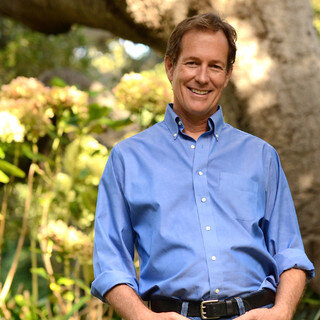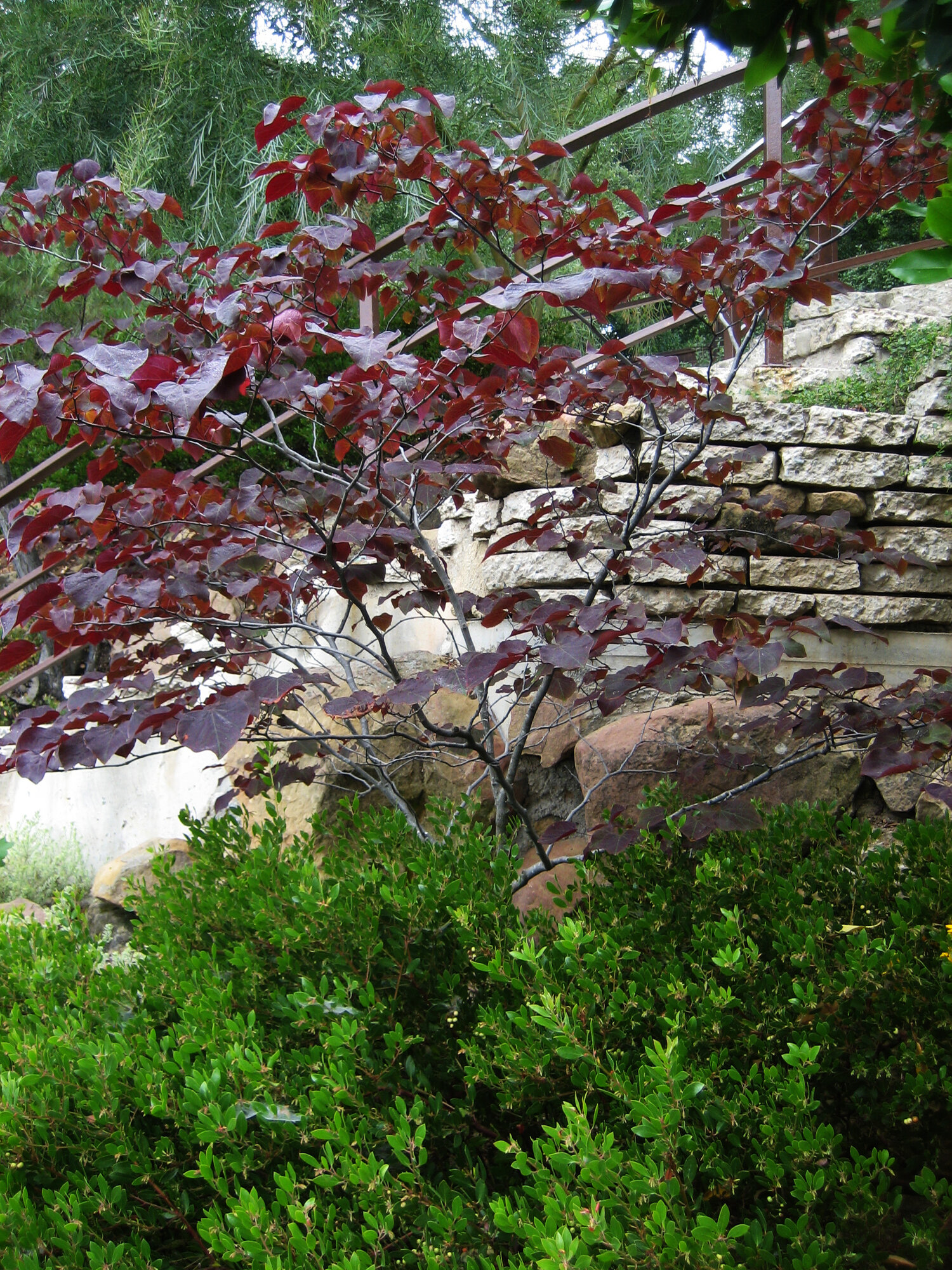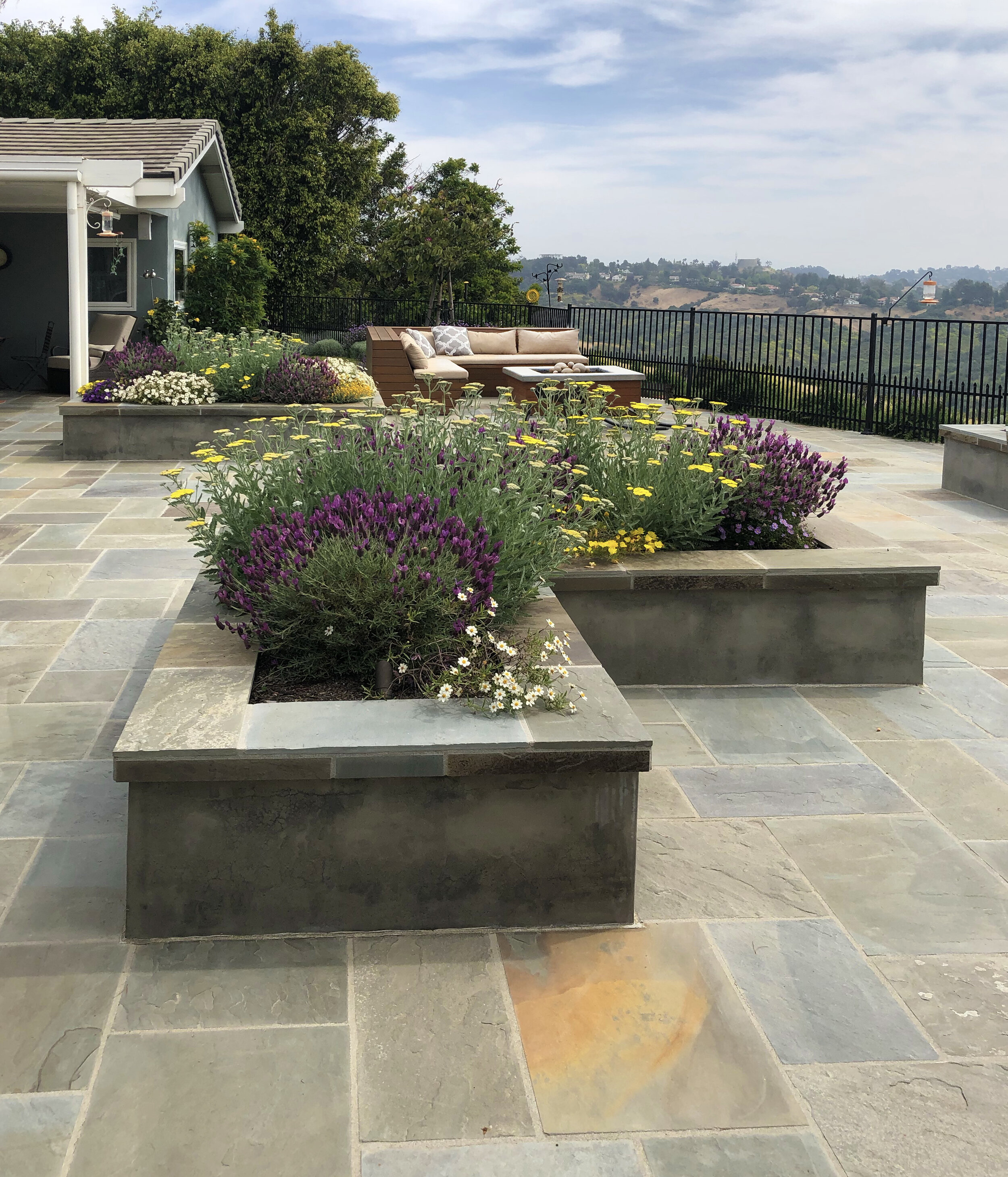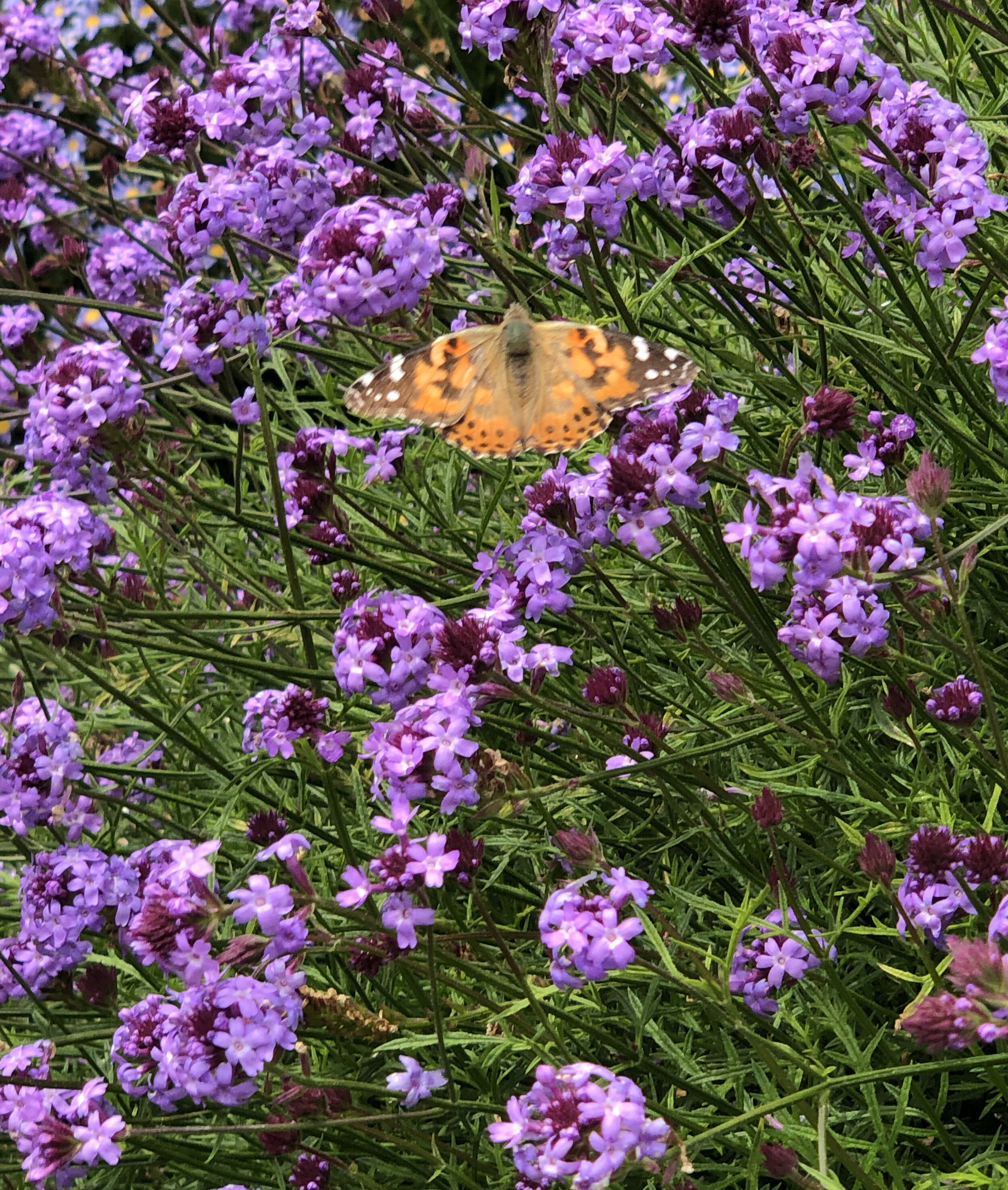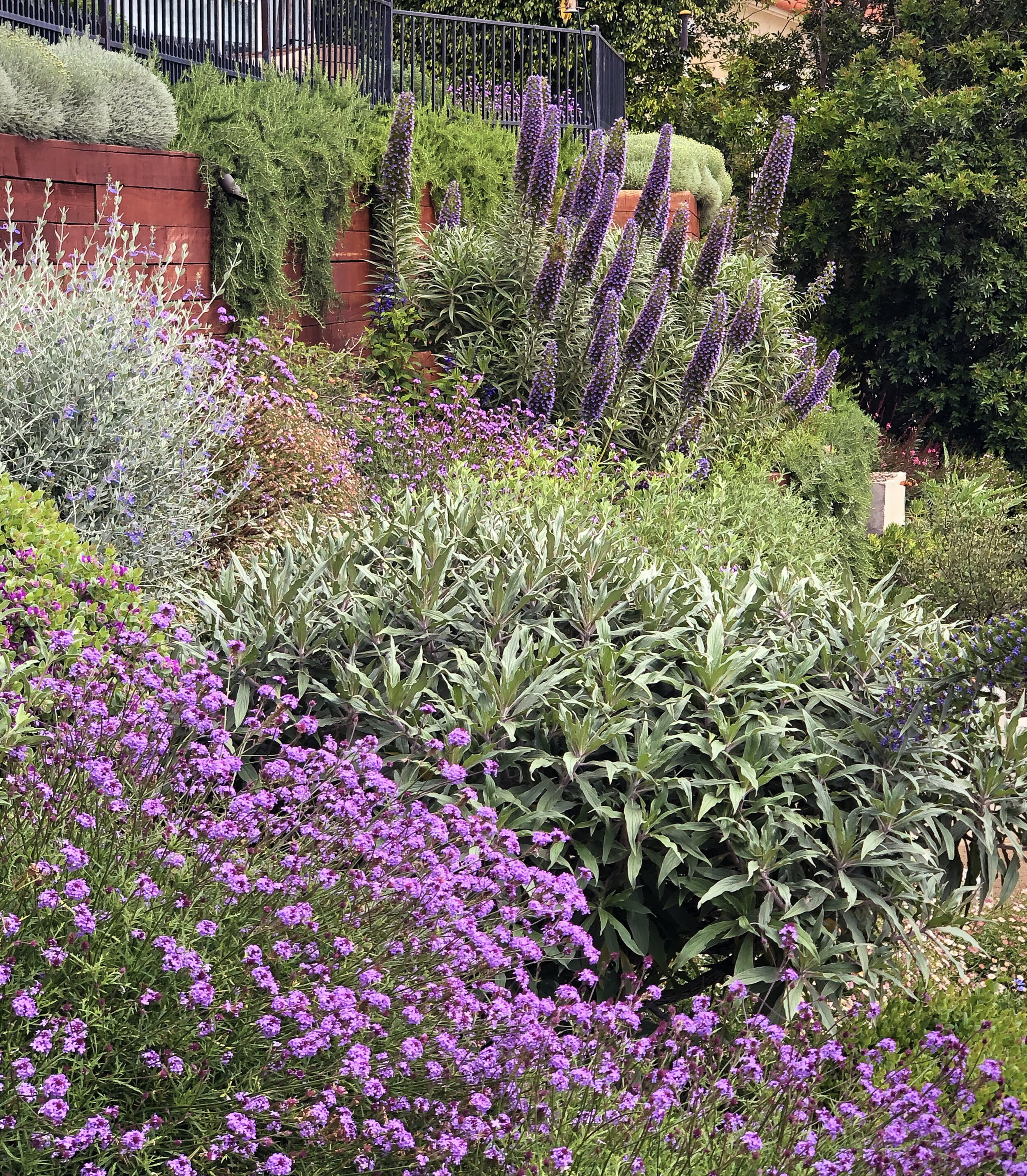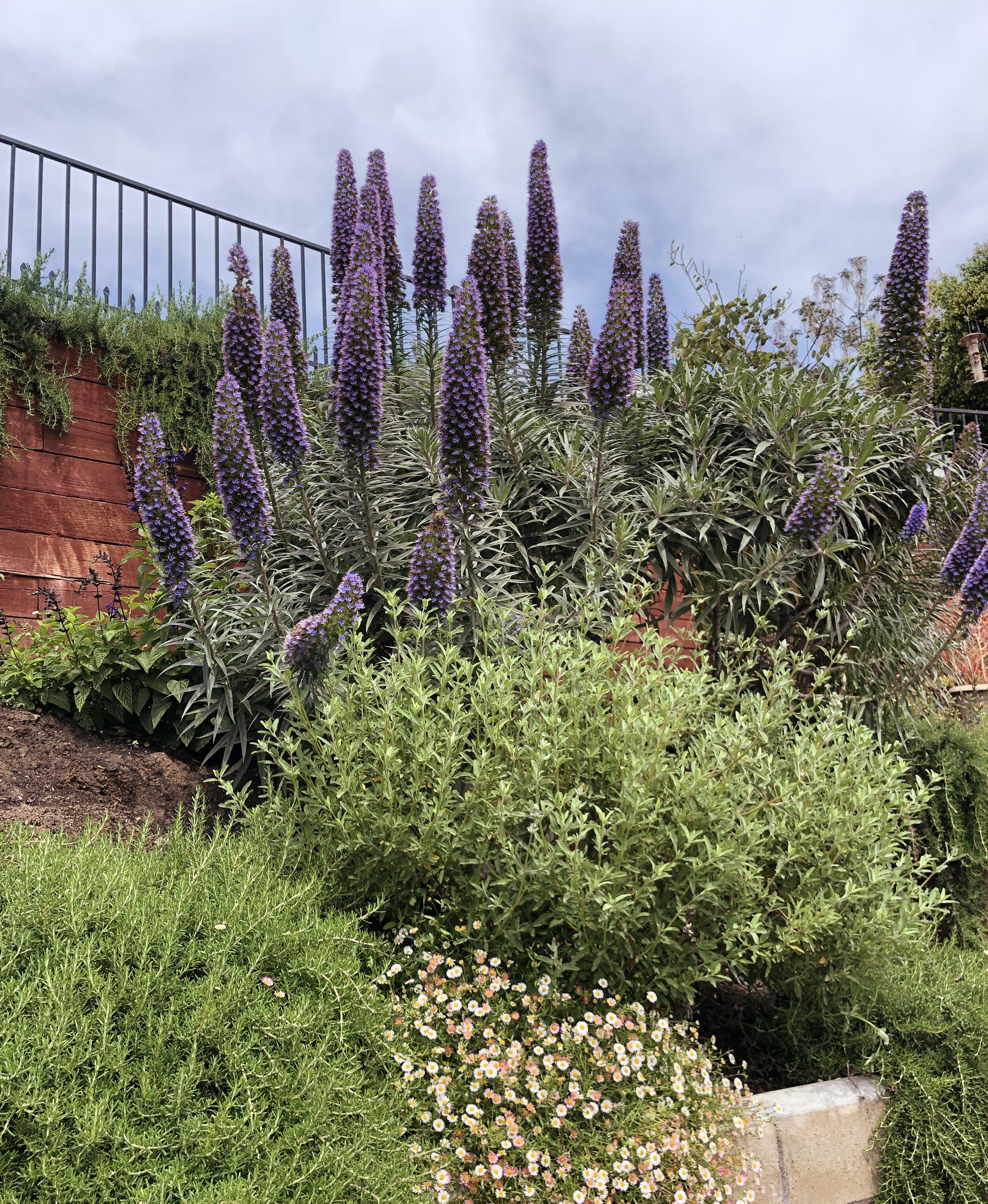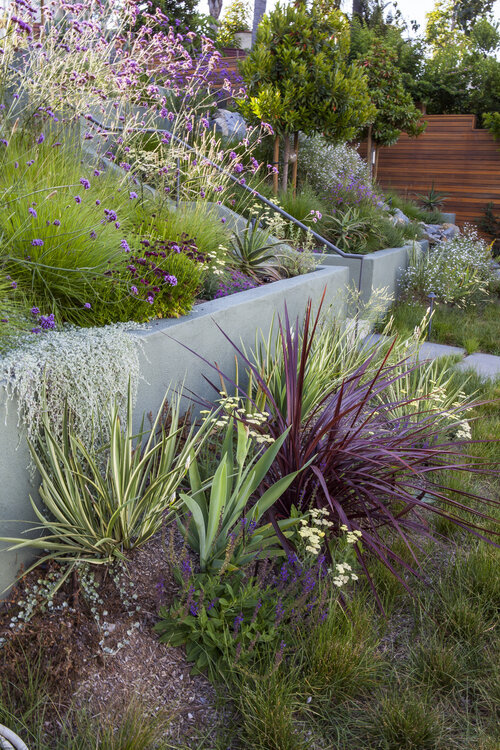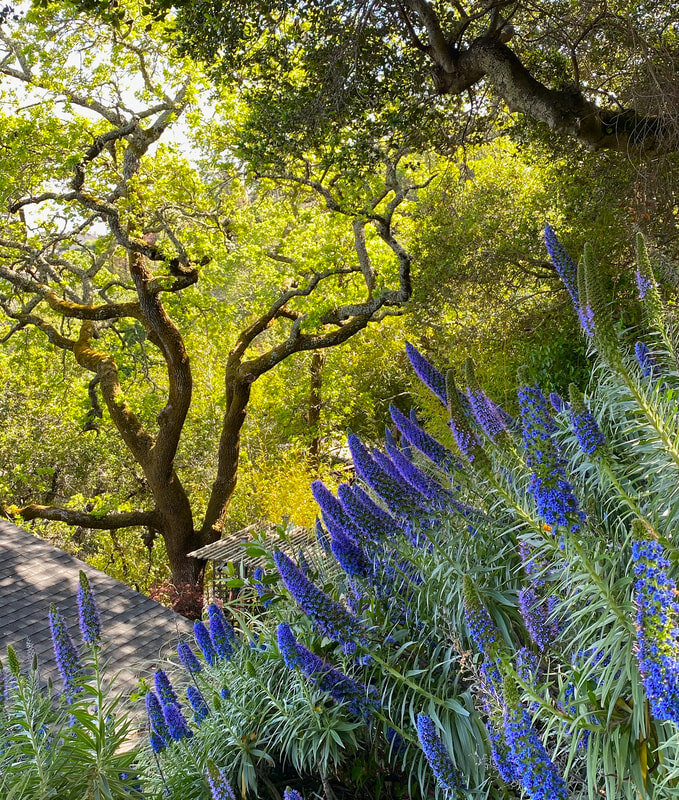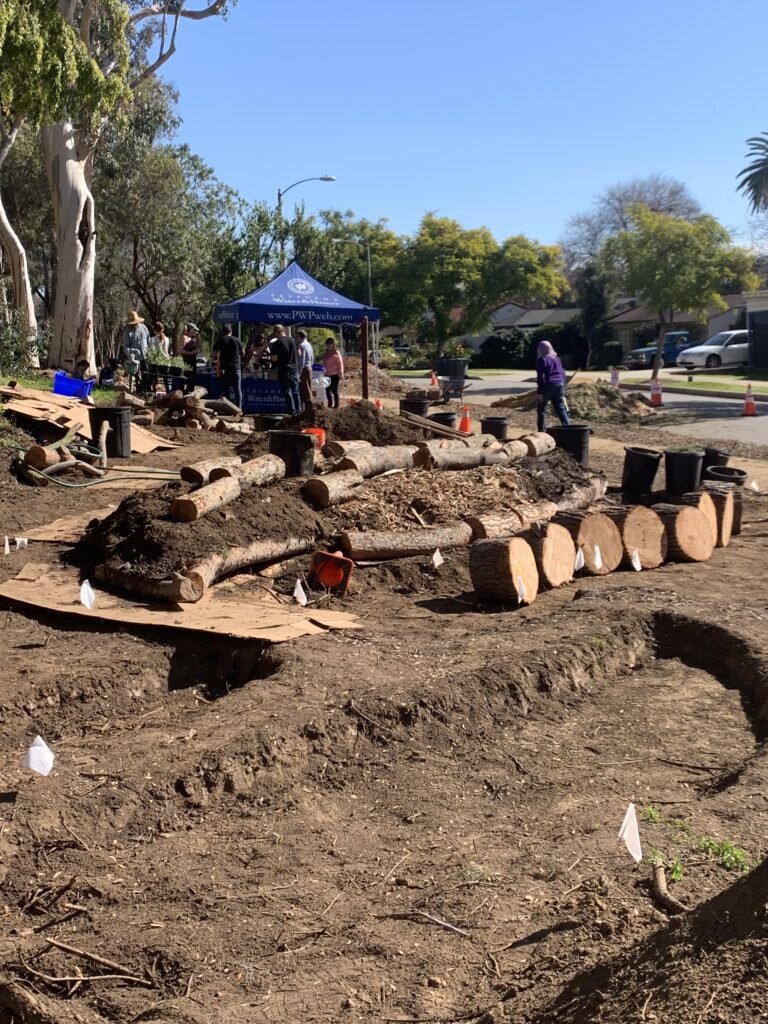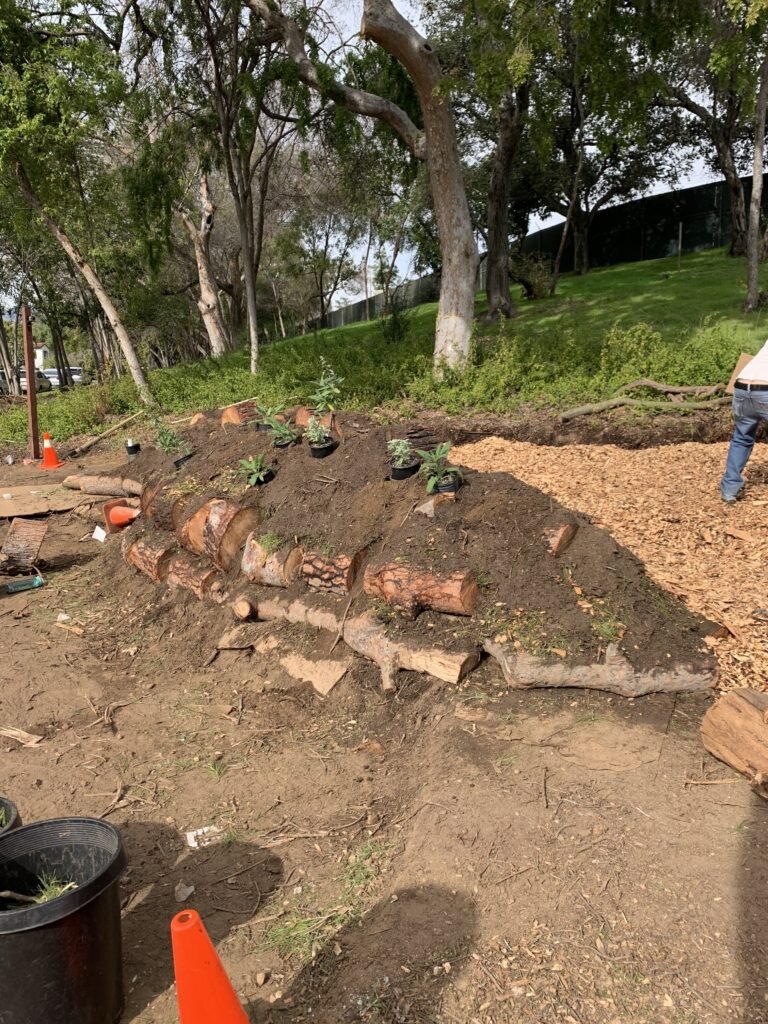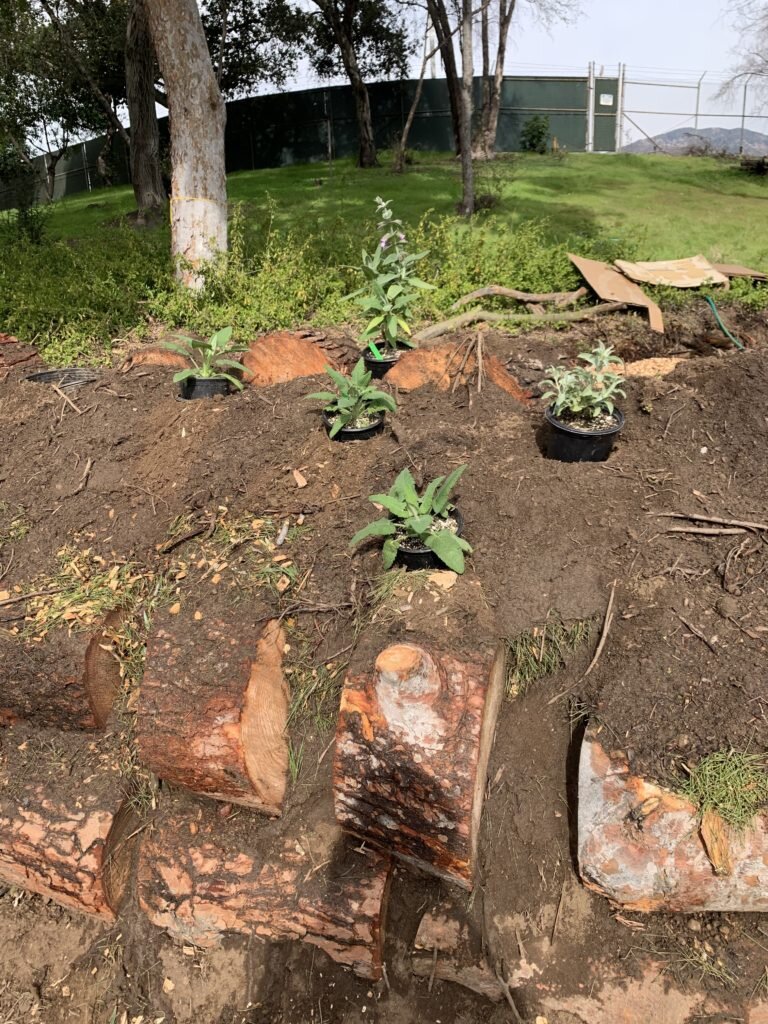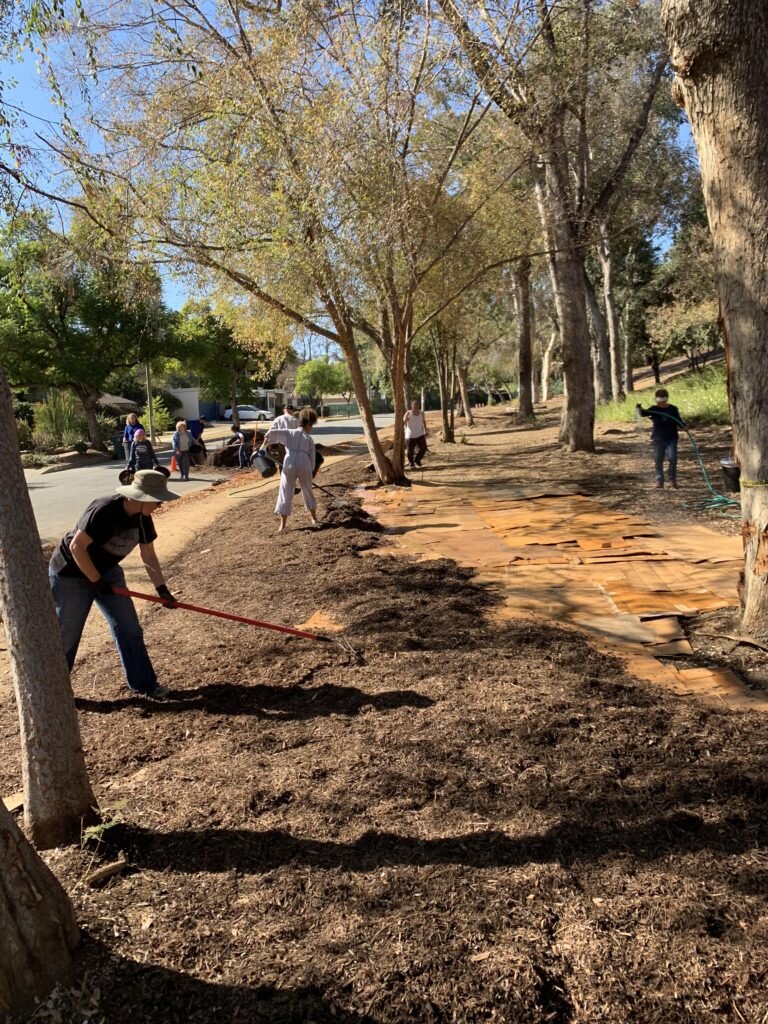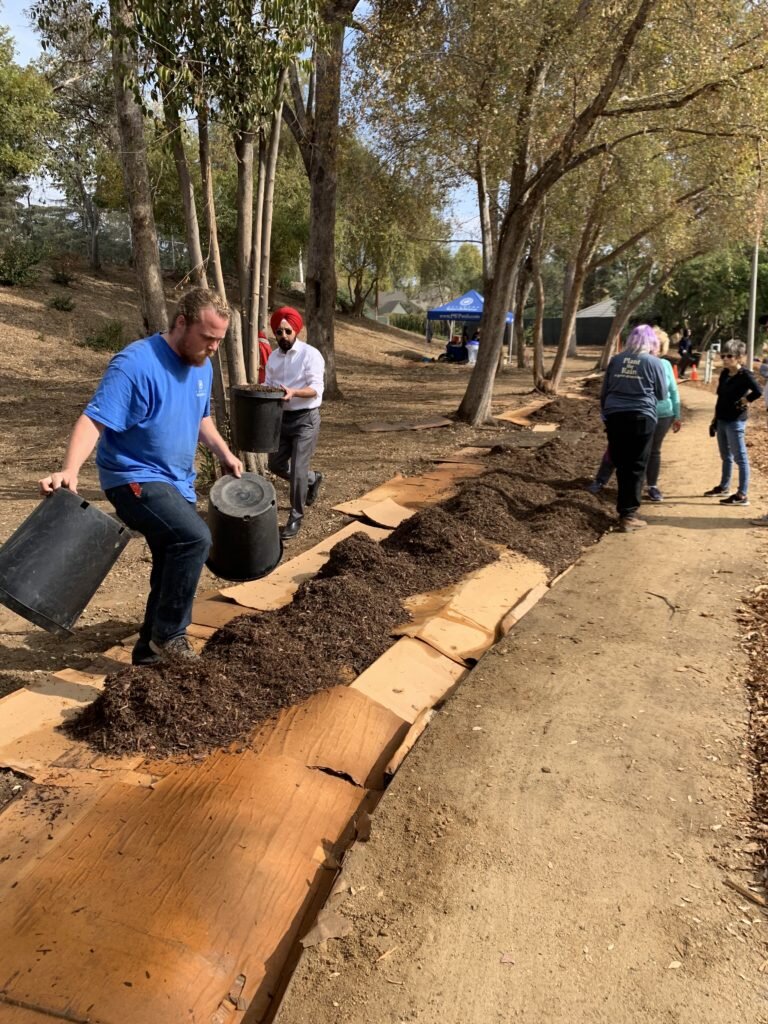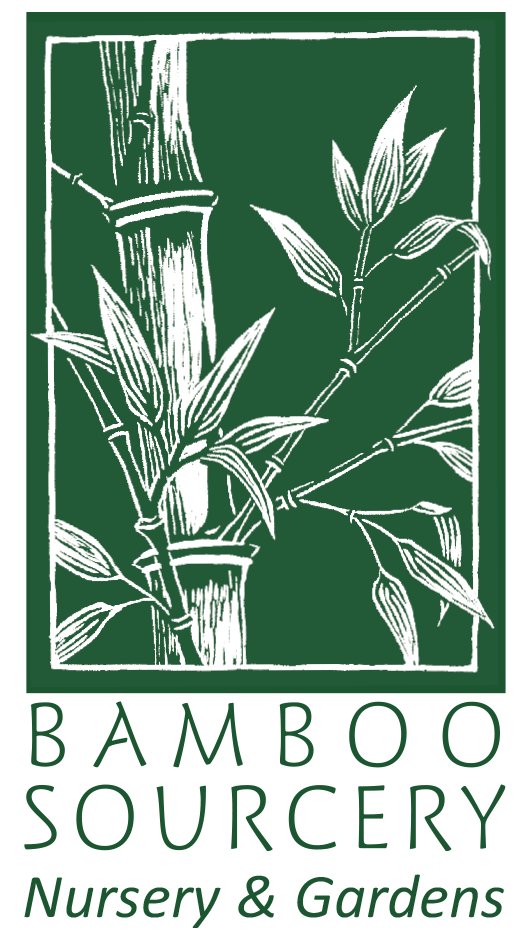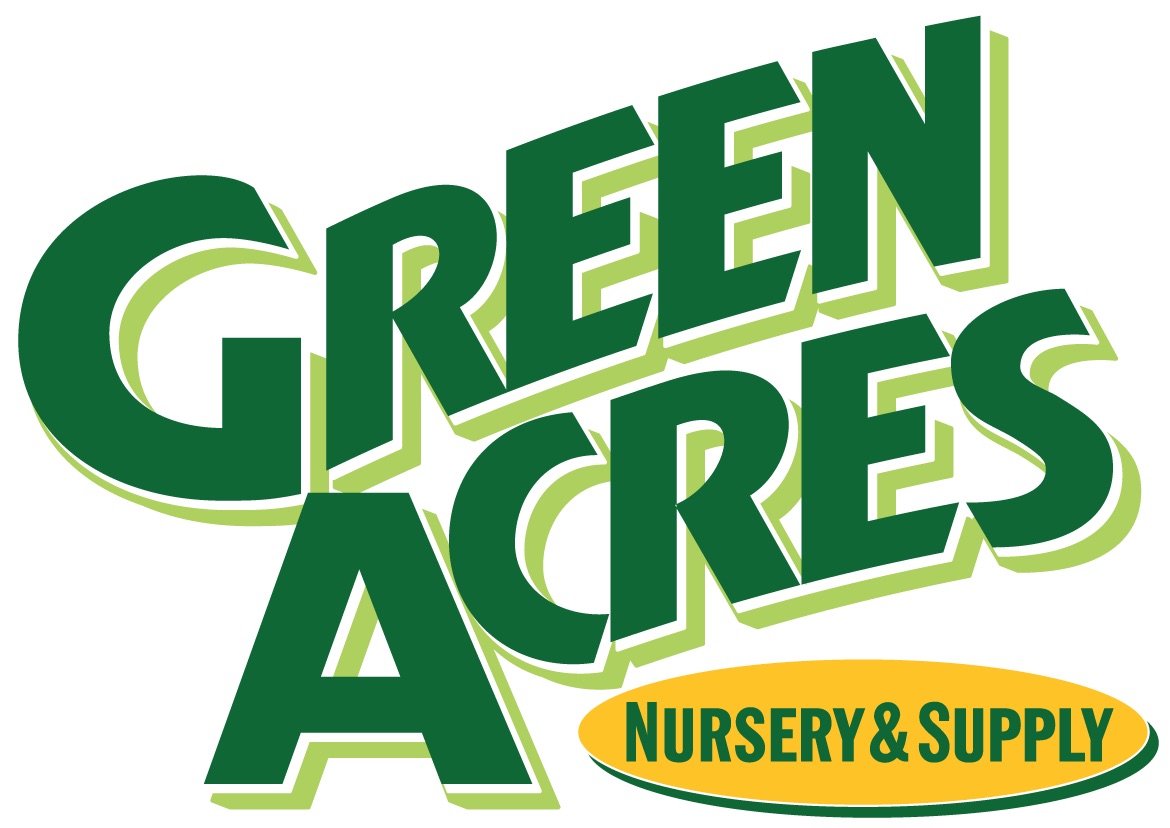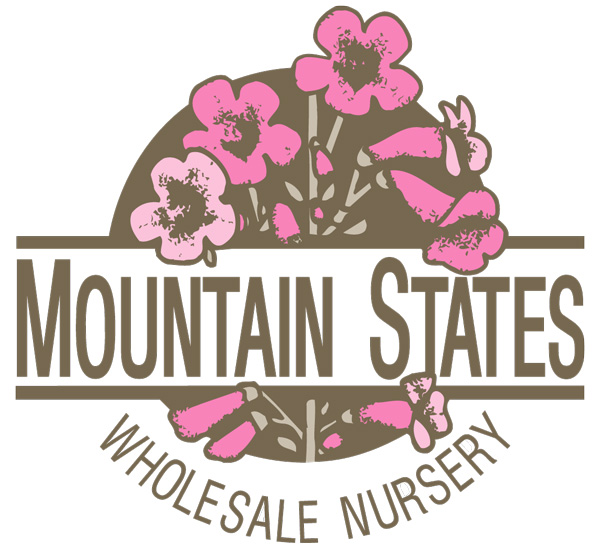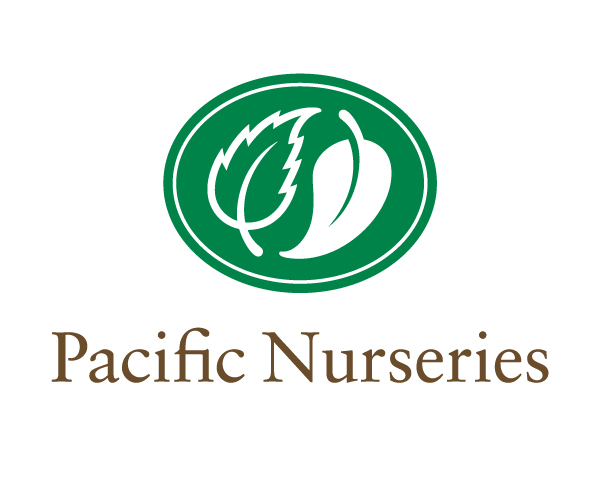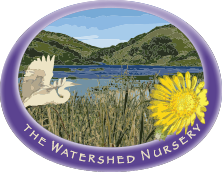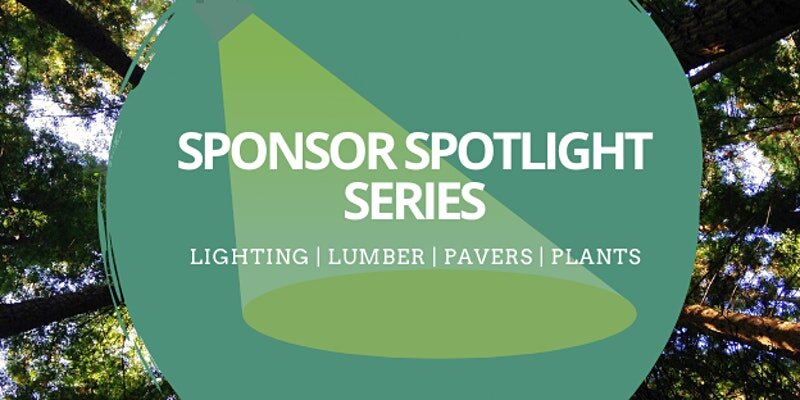CONTENTS
Simply scroll down to read the articles.
You may also click on the section titles below.
APLD California Chapter Advocacy and Sustainability Update by Cheryl Buckwalter
Working with Grades in Landscape Design by Chris Grampp
Problem Solving in the Landscape: Hillsides Designs by Shawn Maestretti
Working with Slopes Case Study by Steve Turner
Designer Picks: Best plants for holding a slope.
Sloped Landscapes Around the State:
1. Nicholas Walker, FAPLD
2. Patricia St. John, FAPLD
3. Ann Rosemarin, FAPLD
4. Amelia Lima, FAPLD
5. Debbie Gliksman, APLD
6. Tom Rau and Marilee Kuhlman
7. Holly Selvig
8. Eileen Kelly
COMMUNITY CONNECTIONS:
A Regenerative Relationship in Pasadena with Studio Petrichor
Welcome New Members
Photo courtesy of Ann Rosemarin.
Advocacy & Sustainability Corner
WHAT’S IN THE WORKS AND ON THE HORIZON
The California Chapter’s Advocacy & Sustainability (A/S) Task Force was formed in January of this year. We considered what advocacy and sustainability means to us as members and a professional organization. We also considered what is it that we advocate for because “advocacy” can mean different things from one person to the next. As APLD California members, we advocate for:
Our rights as professionals to practice our craft.
Legislation that supports our profession and our commitment to the environment.
Our clients to enjoy healthy and beautiful living spaces designed by creative and qualified professionals.
Biological diversity, conservation, protection, and regeneration at all levels.
Cultural, social, and racial diversity, equity, inclusion (DEI), and equality.
We kicked off the with a brainstorming/information gathering session in which a graphic recorder created an illustration on the spot of our discussion. Here is a snippet of that illustration. To view the entire illustration and to learn more about this type of communication tool published in the May issue of Design Online, click here.
Based on the top priorities that were identified for us to engage in at this time, we formed these committees: Website, Legislation, Firescape Education, and Healthy Pots, Healthy Planet Committees. Here are reports from the committees about what’s in the works now.
by Marcia Scott, Vice-President, Sacramento District, Member of the Website Committee
Website:
Our A/S Task Force started as an exciting exercise in herding cats: We generated a lot of ideas (we’re designers after all) but needed organization to implement them. We also wanted to be able to share those ideas with all our California members. The obvious choice was to use our existing APLD California Chapter website. We have SO many ideas that we quickly noticed the existing A/S website page would not accommodate them – hence a tiny Website Committee was formed. We have lofty visions…
We’re rebuilding the A/S page with the heading of Advocacy as the main page. Subheadings that align with what we advocate for, as described above, will be:
LEGISLATION — EDUCATION — ENVIRONMENT — DIVERSITY, EQUITY, AND INCLUSION (DEI) — OUTREACH
Our Website Committee’s goal is to have a working version for you to use before the end of this year. We sincerely hope our website becomes a regular landing place and valuable resource for our members.
by Sophia Cunningham, Chair, Bay Area District’s Diversity, Equity, and Inclusion Committee
Diversity, Equity, and Inclusion:
The Bay Area District of APLD CA formed its Diversity, Equity, and Inclusion (DEI) Committee in July 2020, following the social justice uprisings around the country. As we reflected on this watershed moment, it became overwhelmingly clear to us that we cannot effectively advocate for a sustainable future without including social justice in that advocacy.
Our goal is for the APLD to reflect more truly the world around us: a multicultural world rich with diverse identities and experiences. We will provide APLD members with educational resources and practical tools to deepen their understanding of equity and justice issues within our profession, enabling members to incorporate DEI work into their own practices.
The committee is looking forward to award-winning landscape designer and horticulturist, Wambui Ippolito, lecturing on historical and present-day immigrant influences in American landscapes, on July 7th at 3 p.m. Register here.
by Jodie Cook, Member of the FireScaping Committee
Firescape Education
Increasing fire danger throughout the state has made it more urgent that California’s design professionals receive comprehensive, standardized training in FireScaping the residential landscape. To fulfill this need, the A/S Task Force has convened a FireScaping Committee charged with researching and developing a science-based curriculum to make designing at-risk home landscapes both fire resistant and biodiverse.
“Ecologically rich” and “fire-resistant” are not mutually exclusive terms. While the task force is now in its early stages, our goal is to produce a program that design professionals, armed with vetted information, can use to create landscapes that protect homes while enhancing the wonderful biodiversity of our unique state.
by Karen Hunt and Lori Cox, Co-chairs of the Healthy Pots, Healthy Planet Committee
Healthy Pots, Healthy Planet:
In the midst of the Pandemic, the APLD Sustainability Committee launched the first phase of its "Healthy Pots, Healthy Planet" Initiative in March. The endgame is a major reach for us: the goal is to make a tangible difference in the reduction of plant pots made from virgin plastic and to yield more pots that are plantable. We will know we have made that difference when all of us in the Green Industry (in particular landscape designers, architects, contractors, and gardeners) can ask for and receive more sustainable pots that meet our performance expectations, and that those pots are readily available, affordable, and the norm.
This is a major undertaking for APLD, but one that we think we can accomplish. We also know that we are playing "the long game," as they say. Its success will hinge on many, many challenging activities that will take all of our Chapter’s members to help with, starting with expanding the sign-ups to the coalition and eventually including forming partnerships with dozens and dozens of companies, organizations, associations, and key governmental departments across the United States. Please begin learning about APLD's most ambitious program to date by clicking here.
by Francesca Corra, APLD, CA Chapter Past President, Member Legislation Committee
Legislation:
The Legislation Committee of the Task Force has been tracking about a dozen bills as they go through the California State legislative process this year. The process has been pretty interesting as we are guided by EEC (Environmental & Energy Consulting), so we are not just floundering on our own, trying to figure out what’s what. As a committee, we started out with a list of keywords to narrow the field and then picked the bills that were of the most interest to us. The bills we chose are mostly dealing with environmental issues. EEC sends us periodic updates, in the form of a matrix, so we can see the progress of the bills as they pass through different houses and committees. We have the option to lend our support to these bills if we so desire. The goals of this exercise are to become more familiar with our legislative process, foster alliances, and to create visibility of APLD as a leader in promoting environmental issues. Always, we are on the lookout for any bills that might affect our right to practice…eyes open and ears to the ground!
“Years ago, I wondered why I’d want to pay to be an APLD member. What did APLD have to offer me? Aside from the camaraderie (which, actually, is a big deal), and the idea-sharing (another big deal), for me the PRIMARY reason for becoming a member was retaining a landscape designer’s Right to Practice.
I already was paying for a business license, paying my taxes to the state, and even buying business insurance. I’m thinking: I’m running a legitimate business, right? And my clients want my services. And I’m pretty well educated at what I do. So, how would I feel if the state dropped in to tell me I could no longer make money from providing services that I see are needed and wanted?
The Legislative Committee is coming up with ways to keep our identity – our Right to Practice.”
—Marcia Jimenez Scott, Vice-President Sacramento District, Legislation Committee
by Deborah Robertson-Christman of the Legislation Committee
Here’s an example analysis of a bill that’s being tracked: The wheels of government turn ever so slowly towards making change for the better. The environmental justice planning requirements bill SB 499 is amending a section of the government code to put more teeth into enforcing land uses that do not impact the health of disadvantaged communities and do not degrade the local area…water, air, soil. A hearing was scheduled for April 8 and was cancelled by the author Senator Connie Levya.
On the MWELO front, the Department of Water Resources (DWR) has reconvened the Landscape Stakeholders Advisory Group (LSAG). The Governor's Water Resilience Portfolio (WRP) identified simplifying MWELO as a priority task. AB 2515 gives DWR direction to update MWELO in synch with CA Building Standards (CALGreen). To that end, LSAG members are asked to think about how DWR would simplify MWELO, without weakening the standards, to make it more effective. If you’d like to join the LSAG contact Julie Saare-Edmonds at Landscape@water.ca.gov.
As you can tell, the A/S Task Force is quite active, and it’s a great group! Do you have an interest in participating on one of the committees? Please contact me at landscapeliaisons@gmail.com.
—Cheryl Buckwalter
APLD CA Chapter & Sacramento District Chair
Advocacy & Sustainability Committee
Designer Tools & Tips
WORKING WITH GRADES IN LANDSCAPE DESIGN
by Chris Grampp, Landscape Architect (#2499, California)
Landscape Architecture Program Director, Merritt College
Oakland, CA
My teacher, employer, and mentor Edward Janelli used to say trees and grades were the two most important parts of a designed landscape. I agree with Edward. In their most primary state landscapes have two shapes: vertical and horizontal. Trees represent the vertical realm, and among the numerous things they do for a design, they establish spatial definition. The ground represents the horizontal realm, and is basically the floor upon which everything in a design comes to rest. Once trees and grades come into harmony with one another, a substantial part of a design is accomplished.
Edward also used to say that the best grading design is the one that you’re not even aware of. What I took him to mean was that good grading design was so integrated with all the other parts of a project, that it didn’t stand out as an entity in and of itself.
In this light, here are some ways that I’ve approached grading, and some suggestions for how you might also do so:
• when you start a project, get as much information about the lay of the land as you can. Ideally you’ll want to shoot elevations with a zip level, or have someone do it for you, and create a contour map. Without this information it’s going to be very difficult to assess drainage, estimate cut and fill quantities, calculate wall heights and stair layouts, and much more.
• always pay attention to how water moves, and grade according. Water movement can make or break a design, and points to the need for a contour map or at least key spot elevations to determine high and low points. You can predict water movement pretty well with a contour map: just draw arrows perpendicular to the lines all over the map; where the arrows point is where the water wants to go.
• color your topo map according to steepness of slope. A colored may will allow you to assess site potential quickly. Here how I do it (see accompanying diagram above):
Green: flat or nearly so (1-5%; conducive to gatherings, work areas)
Yellow: gentle (5-15%; a few stairs, walls probably not necessary)
Orange: moderate (15-33%; stairs, low-medium walls, rising installation costs)
Red: steep (33%+; high walls, erosion, high installation costs)
Blue: depression (rain garden, pond, wind shelter)
PROBLEM SOLVING IN THE LANDSCAPE — HILLSIDES DESIGN
From Uncomfortable Hillsides to a Meaningful, Tapestry Garden
by Shawn Maestretti
Studio Petrichor
Altadena, CA
Hillside gardens can be complicated for a variety of reasons. A lot of the time they are inaccessible, yet offer the opportunity for a beautiful habitat garden from which ALL life can benefit. The most important prerequisite for a successful hillside garden is Patience! Patience in the process from the conception, to installation, then to maturation. Fortunately, we have been blessed with such Clients, and the resulting gardens are providing much joy year round.
If you have hillside situation you most likely live in the ECOTONE. I love this word so much! An ecotone is a region of transition between two biological communities. Much like a forest may meet a meadow, your hillside is likely part of a mountain range, or “wild” area that meets your outdoor living spaces. Alternatively, it may be that your home is part of a constructed community, and your hillside is a product of the grading process. Either way, your hillside provides an opportunity and a challenge.
BEFORE
AFTER
Common Hillside Issues:
Erosion Control
Drainage
Wildlife
Specialized Plant Selection
Proper Plant Establishment
Sun/Shade Exposure
BEFORE
PROGRESS
AFTER
A hillside garden is an opportunity for a tapestry-esque, mosaic approach. Looking to patterns in nature as a guide, paired with a blend of multiple shrubs suited for sloped conditions is most effective for success. Climate-appropriate and native shrubs carry less water weight than succulents and can root themselves more deeply for stabilization and drought tolerance. Grasses and perennials can be used as well, provided that they are suited for the site conditions and compatible with a variety of shrub roots.
BEFORE
AFTER
Polyculture is the key. When selecting plants, ALWAYS consider habitat and biodiversity. Pollinators and other non-human being numbers are dwindling at an alarming rate. Let’s re-imagine our landscapes to be about more than us. Native plants are the first line of defense in loss of habitat and biodiversity.
WORKING WITH SLOPES CASE STUDY
A Challenging Hillside in San Mateo
by Steve Turner
Black Diamond Paver Stones & Landscape, Inc.
Millbrae, CA
The slope was covered with overgrown shrubs and trees. The biggest challenge was the hill was mostly rock, making it impractical to do much regrading. It was critical to work with the existing contours of the land. Yet, the client wanted usable space at the top of the slope, providing views of Oakland on the other side of the San Francisco Bay. In addition, the back of the property was the only means for the neighbor to bring trash cans out for pick-up or access their own yard. So, there were many practical considerations in programming the site.
A preliminary evaluation of the property found there had an eight-foot change in elevation from the sliding glass doors of the townhome to the base of the mature Cedar tree.
Half of the change in elevation was enabled with a four-foot wood retaining wall. The client did not like how much usable space was consumed with the old wood steps. The staircase was anti-climactic, leading people to a dry, overgrown hillside.
It was more like an overgrown park than a usable back yard. The thick shrubs gave clues as to what might be found below. The soil was dry and compacted.
USDA soil map classifies the site as primarily Othents with slopes ranging from 5 to 75%. These steep slopes impede horizontal development of the soil on the surface. As a result of the eroding slope, fallen leaves or needles do not sit on the surface to be broken-down by organisms such as worms, ants and beetles. Sparse shrubs do well in these conditions.
This sample was taken from the site and illustrates the fundamental challenge of the site: Roots had no choice but the find crevices in the rocks to survive. The data from the USDA, the sample rock and a soil sample provided enough information to prepare the client for the potential issues ahead. Analysis showed that the soil had a slightly acidic composition, almost completely devoid of nutrients.
There were only a few original trees that were tagged to remain after the transformation. A majestic cedar in the corner would be the centerpiece of the design. As a result, great care was taken in both the design and construction phases to allow the roots to remain intact.
To create usable space on the upper tier, a combination of hardscape and synthetic lawn were agreed upon with the client. Because of the radical change from what they saw every day, 3D renderings helped them see and understand the transformation.
The finished project respected the original wood retaining wall, but moved the steps to an area of the yard that provided more room for a lower patio.
The Cedar tree plays a prominent role in the design, casting a wide shadow over the synethetic lawn on the upper terrace.
The transition from lower patio to upper terrace took advantage of the existing slope, and the path provided an opportunity for plantings that would thrive in the underlying soil conditions.
The soil was amended and appropriate irrigation was introduced for draught-tolerant plants.
In the rear, the existing cinderblock wall was painted a deep blue and trellises were built to allow Star Jasmine to grow over time.
Photos courtesy of Steve Turner.
Lighting was also vital to be able to use the terrace safely in the evening. The meandering steps and the change in elevation from hardscape to synthetic lawn required thoughtful placement of lights under step treads and along the path.
The Australian Willow on the hillside also had two uplights illuminating its delicate leaves and branches. This thin screen of trees provided some privacy from adjacent townhomes.
Oakland is only visible from the upper tier. The vista is well worth the journey up sixteen steps and the investment in a new dreamscape.
DESIGNER PLANT PICKS — Hillside Holders
APLD California Designers offer up their favorite plants for erosion control on slopes.
by Patricia St. John. FAPLD
St. John Landscapes
Berkeley, CA
Rubus pentalobus (calycinoides), Bramble
An evergreen shrub that forms a slowly creeping, prostrate ground cover. Foliage is glossy and deep green, partially turning rusty-maroon in cool weather. Small leaves are rounded, lobed, and crinkled. Small, white, spring-summer flowers are followed by edible orange berries that ripen in fall.
Photo and description courtesy of Devil Mountain Wholesale Nursery.
Ceanothus gloriosus ‘Anchor Bay’, ANCHOR BAY CALIFORNIA LILAC
A coastal California evergreen shrub with fragrant flower clusters that form a sea of deep blue in spring. Foliage is holly-like and dark green. Natural growth habit is low and spreading. Does well on slopes. Beneficial to pollinators and wildlife.
Photo and description courtesy of Devil Mountain Wholesale Nursery.
Ceanothus gloriosus ‘Hearth’s Desire' MOUNTAIN WILD LILAC
Evergreen groundcover. California native. Fast growth. Small, toothed leaves that are tinged with bronze. Small lavender blue flowers bloom in the spring. Low water needs once established.
Photo and description courtesy of Urban Tree Farm.
Rosmarinus officinalis ‘Huntington Carpet’, HUNTINGTON CARPET ROSEMARY
An evergreen shrub that forms a dense, cascading ground cover. Dark green, needle-like leaves are aromatic and edible. Tiny, light blue flowers dot the foliage in spring and summer. Attracts bees and other pollinators. Does not become woody like R. 'Prostratus'.
Photo and description courtesy of Devil Mountain Wholesale Nursery.
Coleonema pulchrum ’Sunset Gold’, GOLDEN BREATH OF HEAVEN
An airy, pleasantly fragrant evergreen shrub. Branches are flimsy and clothed in fine, needle-like leaves. Dainty pinkish flowers dot the bright golden green foliage. Attracts bees and other pollinators.
Photo and description courtesy of Devil Mountain Wholesale Nursery.
by Francesca Corra, APLD
Dirt Diva Designs
Studio City, CA
Ceanothus concha, CONCHA CALIFORNIA LILAC
A coastal California evergreen shrub with fragrant flower clusters, which form a sea of dark blue in spring. Foliage is leathery, 1-inch long, and dark green. Natural growth habit is upright and adaptable with pruning. Does well on slopes. Beneficial to pollinators and wildlife.
PHOTO: Francesca Corra.
DESCRIPTION: Devil Mountain Wholesale Nursery.
Fremontodendron - any kind! FLANNEL BUSH
A fast-growing evergreen shrub with an upright to arching form. Signature spring-summer blooms profusely cover the foliage. Cup-shaped flowers are bright yellow with red-orange tints, followed by hairy capsule fruits. Attracts many pollinators. Lobed leaves are dark gray-green above and as felty as flannel below. Native to California. Protect from wind. Parts of the plant cause skin and eye irritation.
PHOTO: Francesca Corra.
DESCRIPTION: Devil Mountain Wholesale Nursery.
Artemisia tridentata BIG SAGEBRUSH
This dense, semi-evergreen shrub ranges in height, depending on the amount of animal grazing and available moisture. The hairy, silver-gray leaves are narrow and wedge-shaped, with 3 to 5 teeth at the tip. The new growth is most attractive, so for a more refined look, prune out old stems periodically. The clusters of tiny pale yellow flowers are fairly inconspicuous. Use big sagebrush in full sun and well-drained soil, and be careful not to over water.
PHOTO: Francesca Corra.
DESCRIPTION: Mountain States Wholesale Nursery.
Eriogonum giganteum, ST. CATHERINE’S LACE
Eriogonum giganteum grows to 4’ tall x 5’ wide with attractive wooly, gray, oval leaves. It is the largest of the Buckwheats. It’s also one of the most popular nectar sources for many butterflies, especially the California Blues & Hairstreaks. The profuse clusters of small white flowers start blooming in April and continue until Fall, when the flowers age to a rusty color. St. Catherine’s Lace requires no summer water once established & tolerates clay, though it thrives best in well-drained soil.
PHOTO: Francesca Corra.
DESCRIPTION: The Watershed Nursery.
by Nicholas Walker, FAPLD
Campion Walker Landscapes
Topanga, CA
Poa colensoi BLUE TUSSOCK
We love to use deep rooted grasses. One of our new favorites is Poa colensoi. We were introduced to this grass by the grass guru John Greenlee and we have successfully tested it in our lab garden in Topanga. It is a beautiful feathery grass with a blue green cast. It not only holds the slope but will also soften the angle of a steep slope.
Photo courtesy of Emerisa Gardens.
by John Black
Verdance Landscape Architecture
Palo Alto, CA
Photo courtesy of Devil Mountain Wholesale Nursery.
Symphoricarpos albus, COMMON SNOWBERRY
My go-to for slope stabilization in shade and/or stream banks is Symphoricarpos albus.
Photo courtesy of Eileen Kelly.
Sloped Landscapes Around the State
by Nicholas Walker, FAPLD
Campion Walker Landscapes
Topanga, CA
Meadow Magic in Topanga Canyon
The natural beauty of the landscape inspired Campion Walker to design an extensive garden using dozens of found boulders from the property to dramatically anchor the house to the gardens.
Our team extensively terraced the extreme slope to create flat, intimate areas and drought tolerant meadows for outdoor living. We used recycled broken concrete and a modular block retaining system to create magical hidden pathways throughout this stunning four acre property.
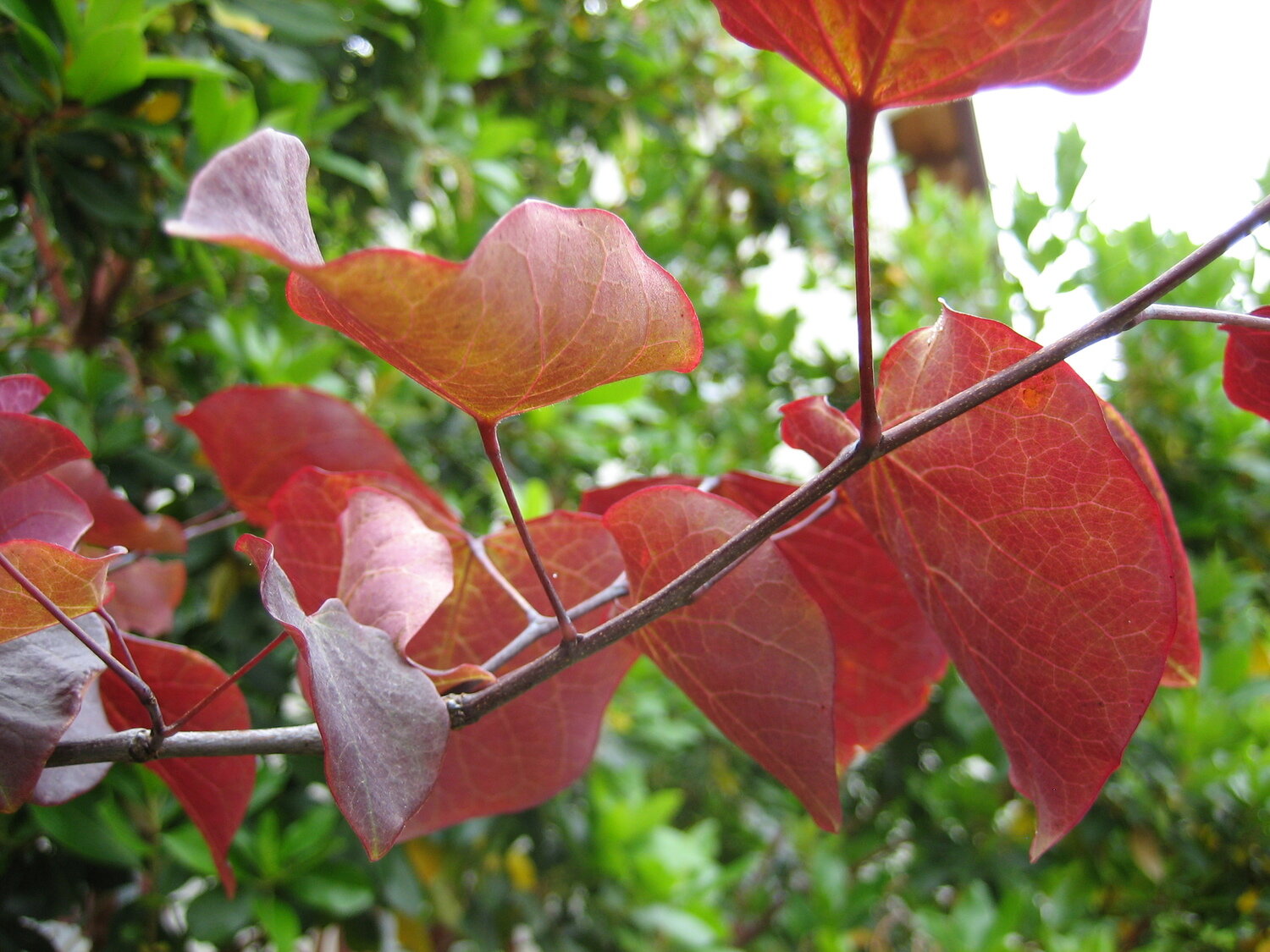
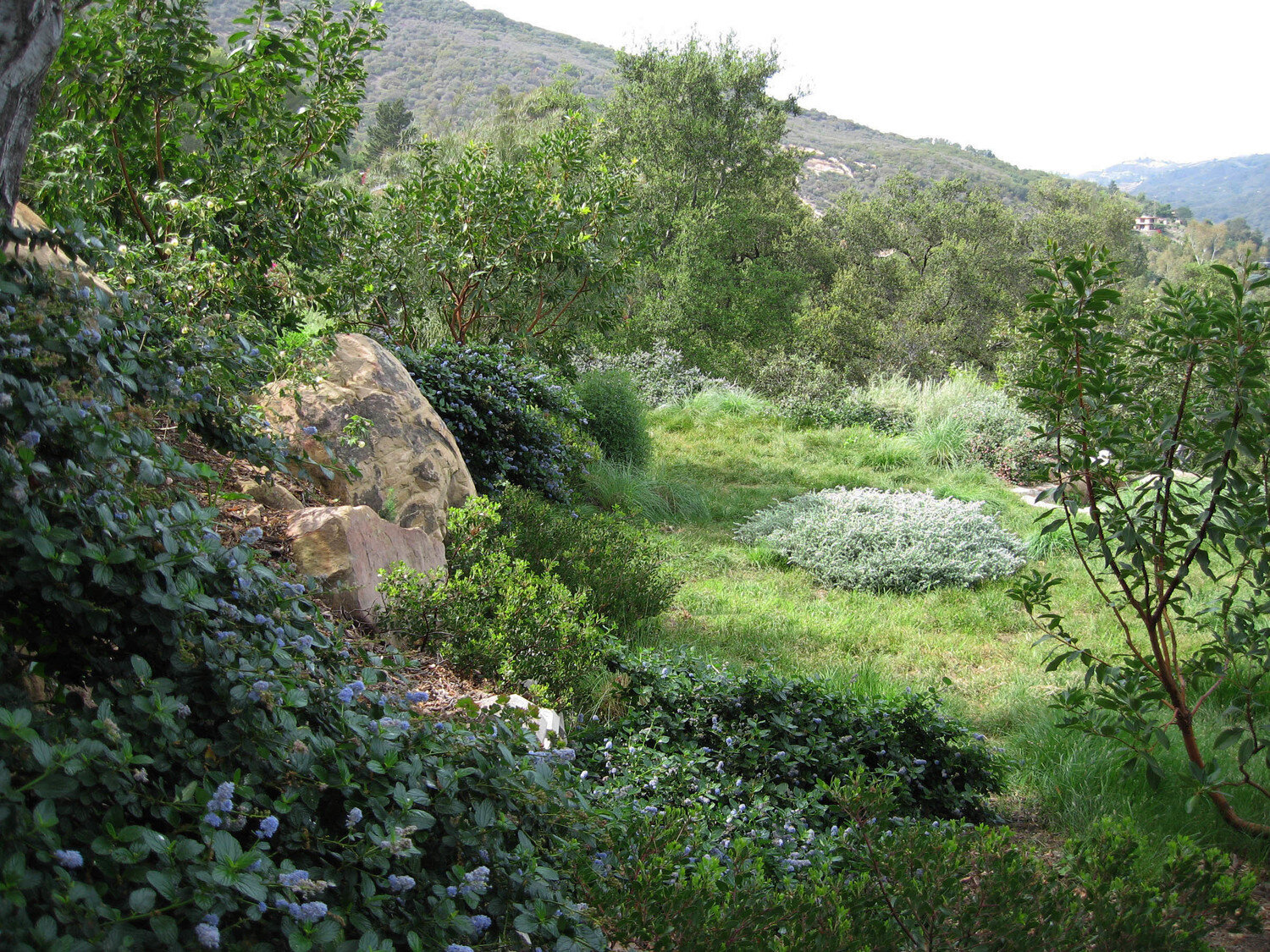
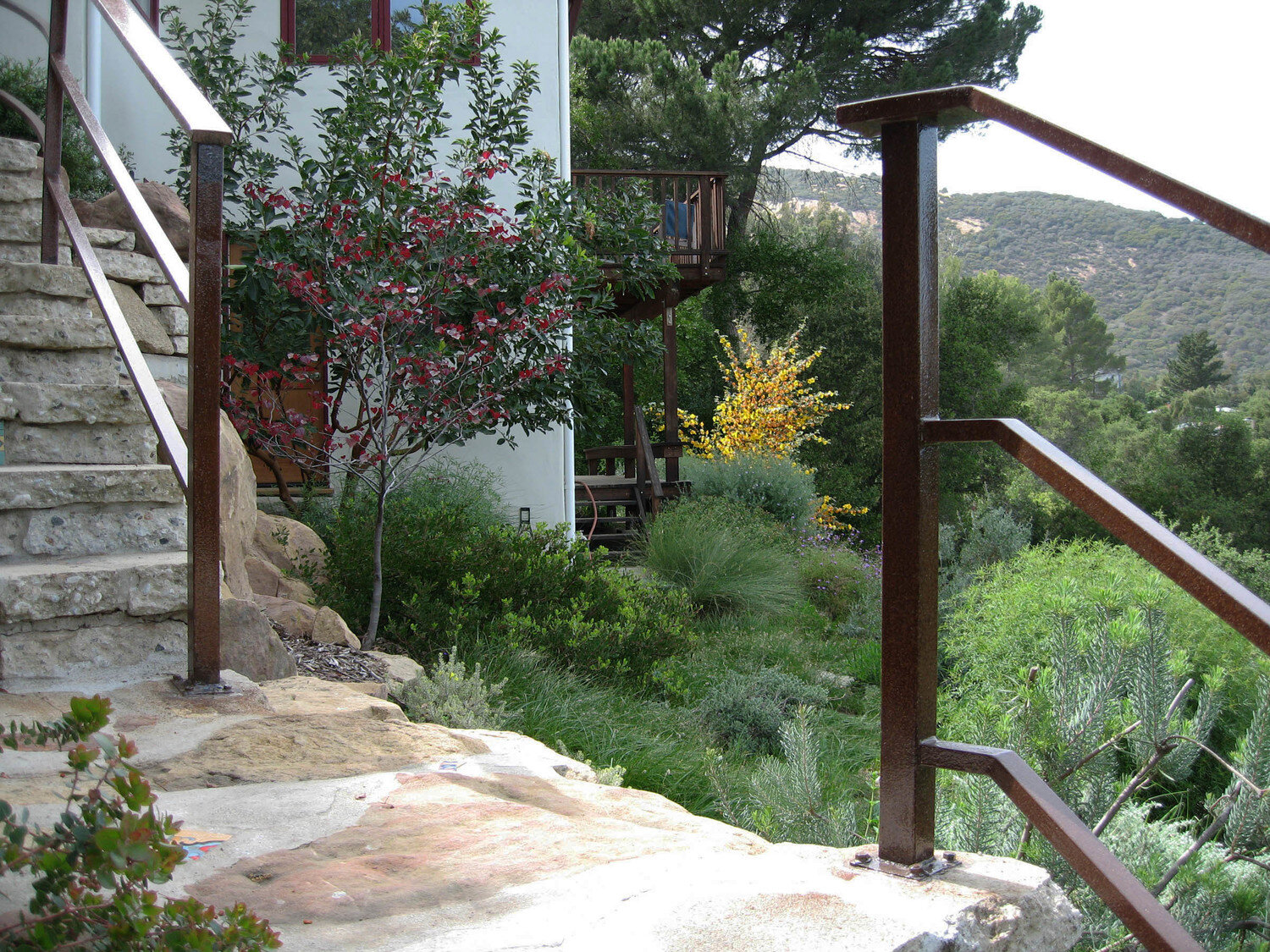
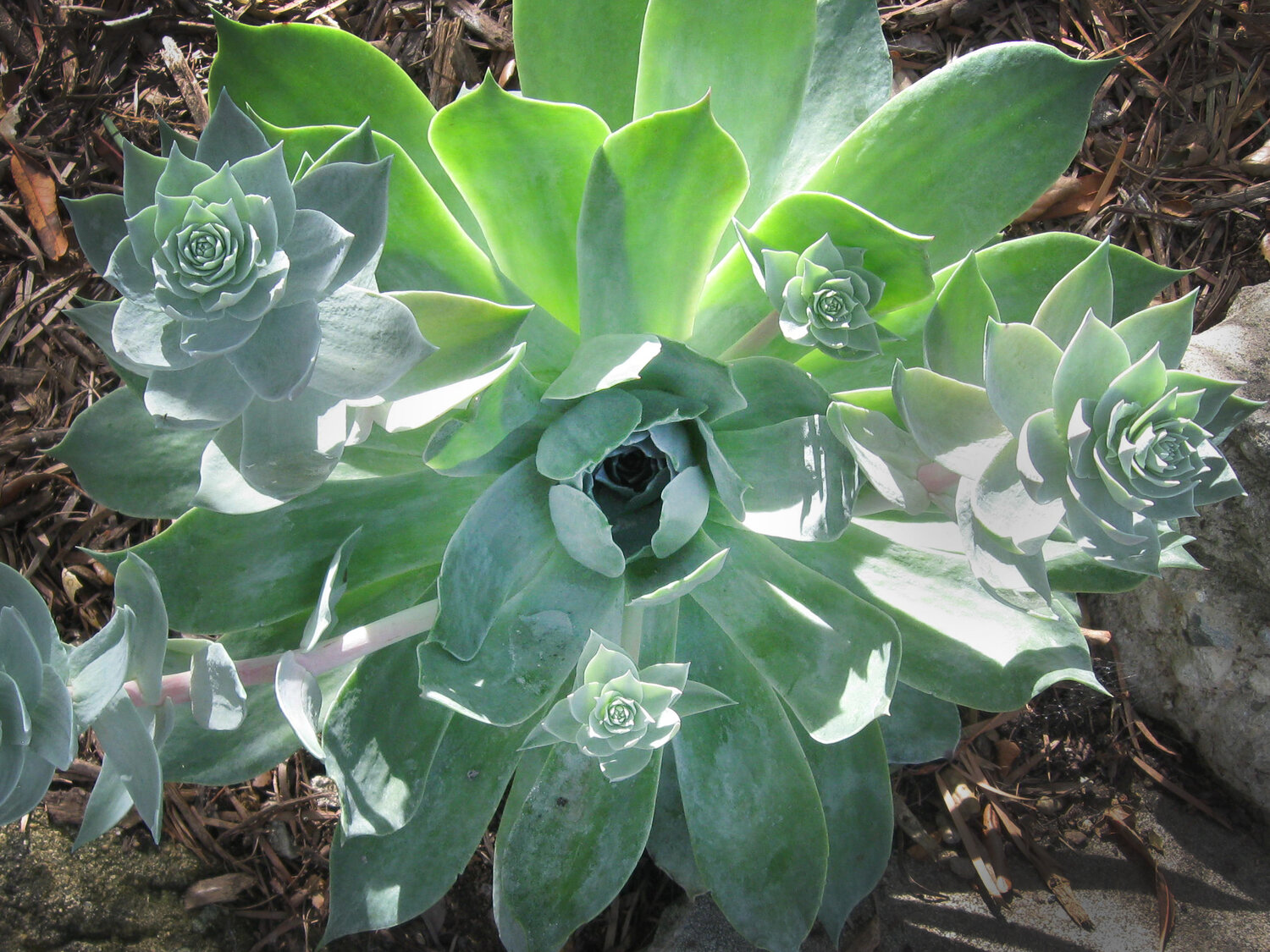


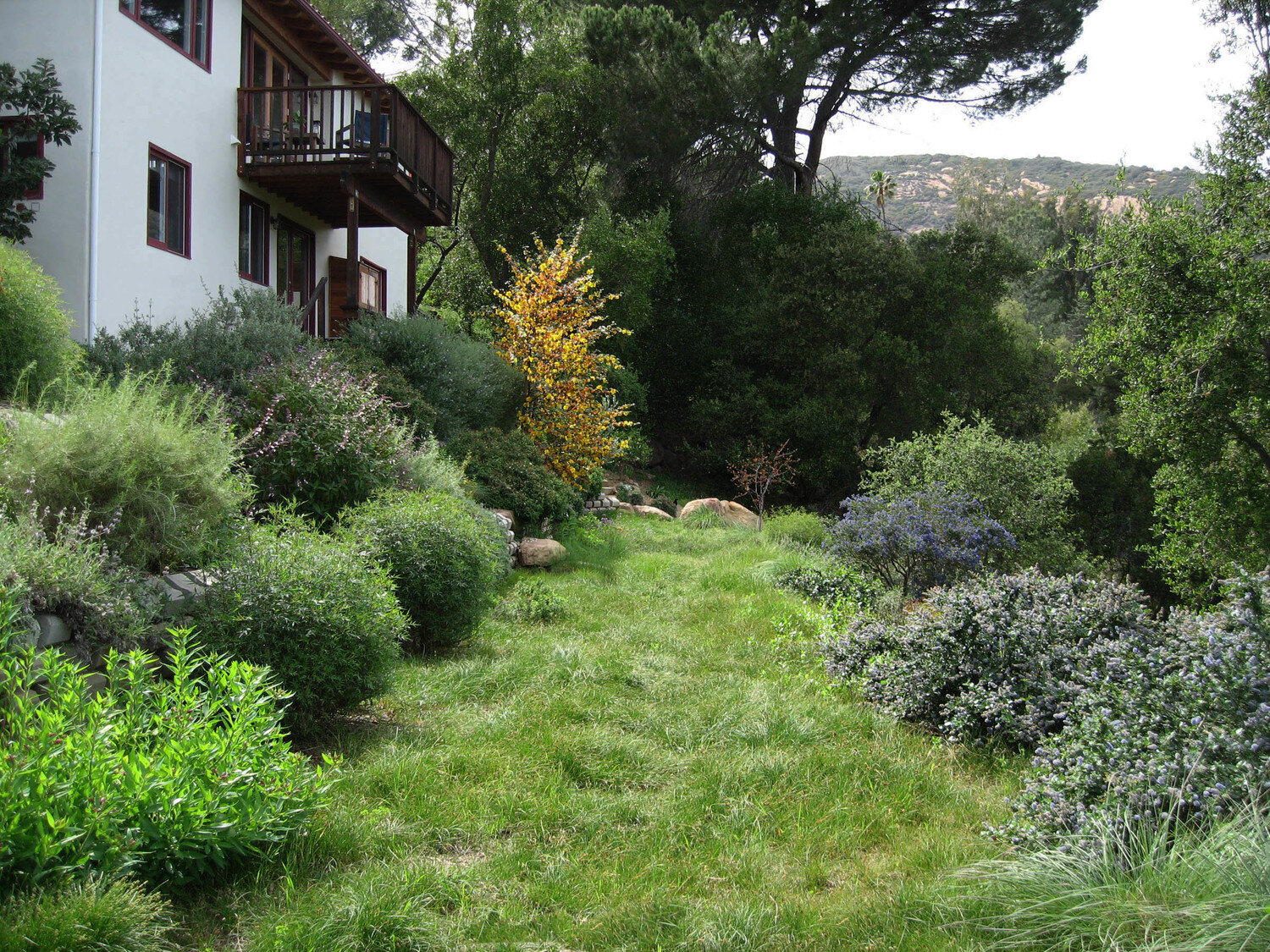

by Patricia St. John. FAPLD
St. John Landscapes
Berkeley, CA
The Montclair Project in Oakland
This backyard is on a steep slope with retaining walls of Napa Basalt. Two deck levels built with recycled Trex nestled in between makes this garden space aesthetic and usable for the whole family.
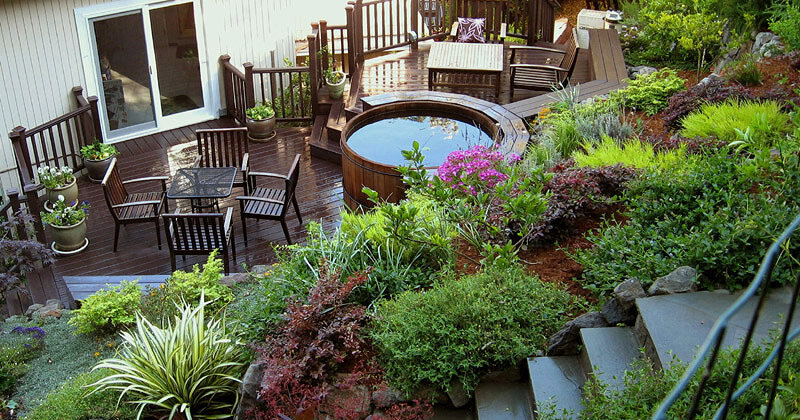
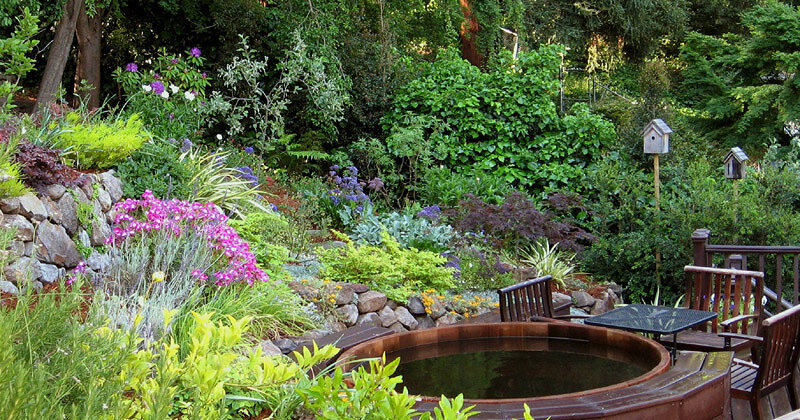
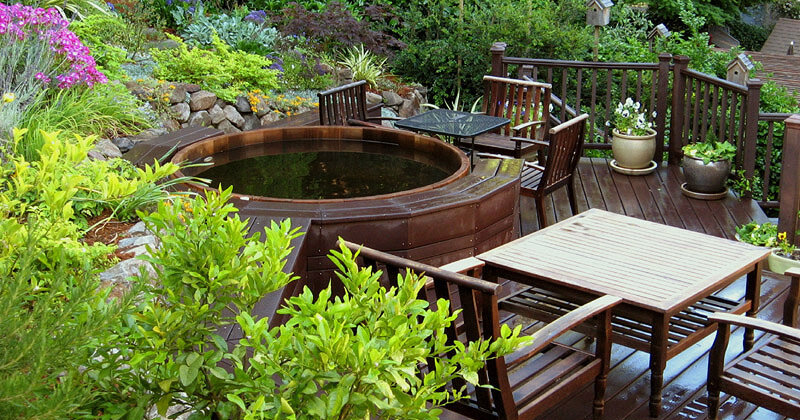
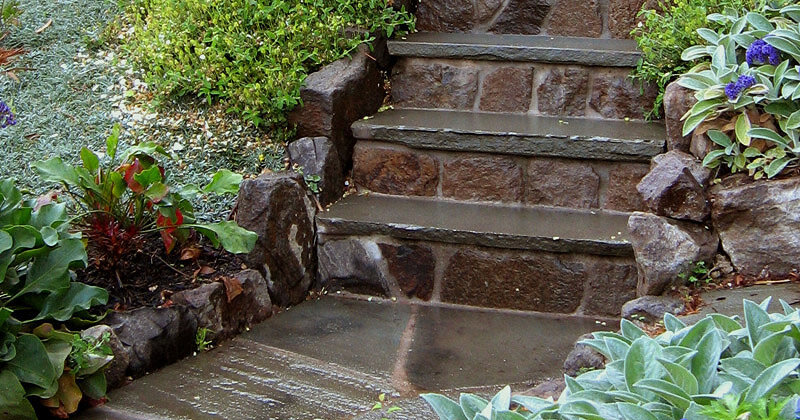
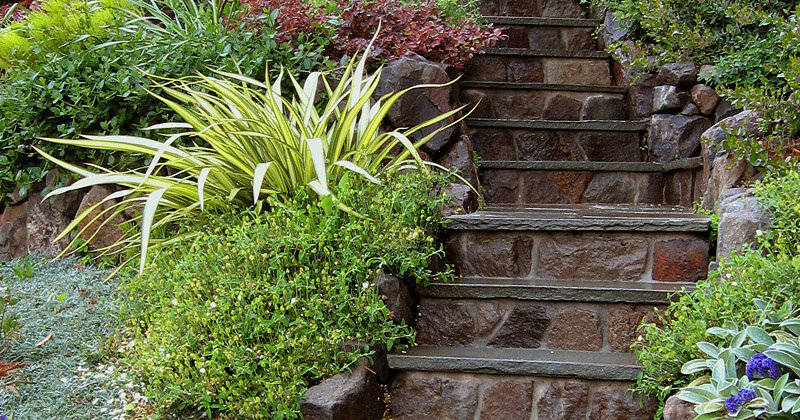
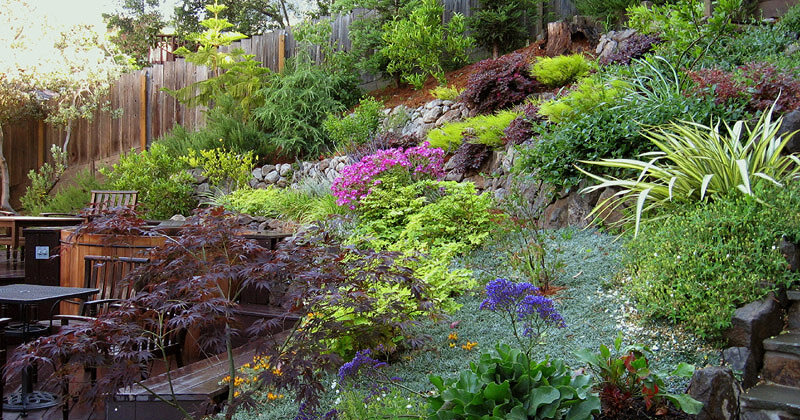
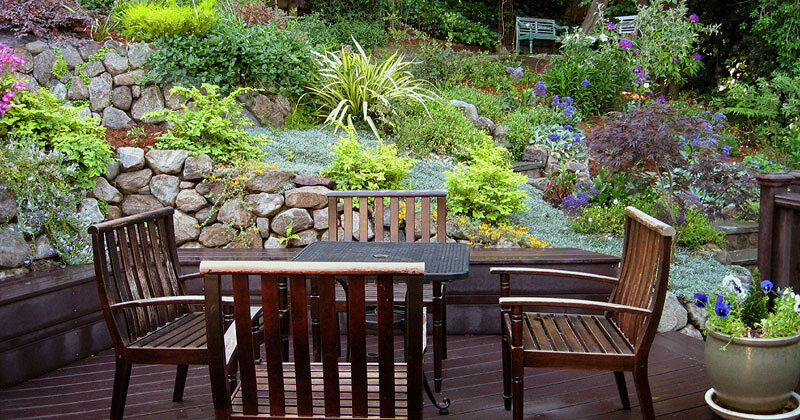

by Ann Rosemarin, FAPLD
Rosmarin Landscape Design
Santa Rosa, CA
Hillside Country Garden in Sonoma
The landscape design called for creating a contemporary, informal and relaxing habitat garden that offers various seating areas and connects seamlessly from the house.
We developed a design that celebrates and enhances the existing, natural boulder formations, stands of silhouetted native oaks and wild meadow grasslands. Due to the challenging topography and the rugged conditions of the site, the garden is being phased in over time
This was an opportunity to create a hillside garden on a steeply sloping site and to select Mediterranean plantings that include native trees, shrubs, wildflowers and related African and Australian plants that could thrive under these conditions. The gardens were designed to be connective and an integral part of the natural diversity inherent to this particular area. The result is an ever-changing seasonal transformation of textures and colours on this amazing site.
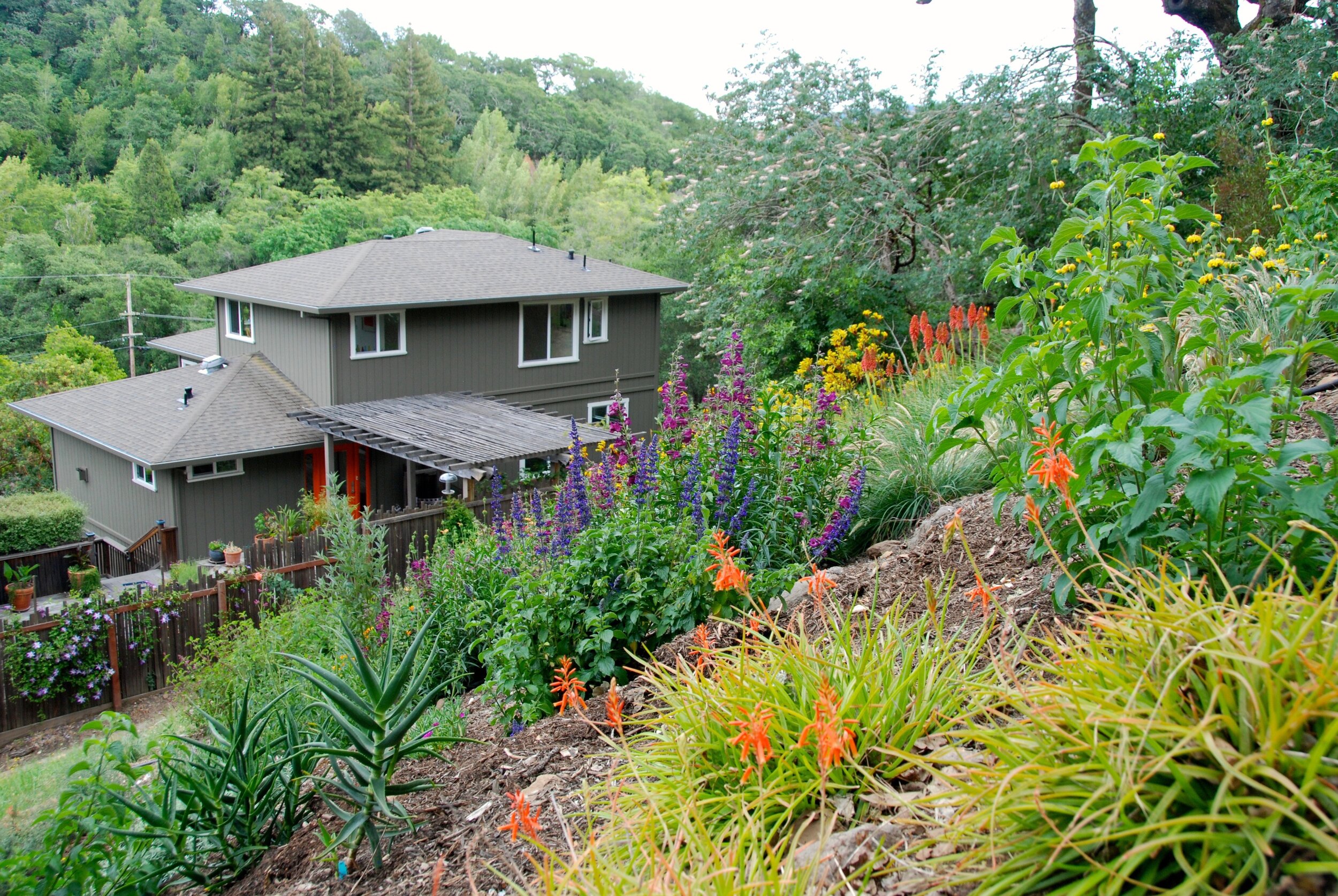
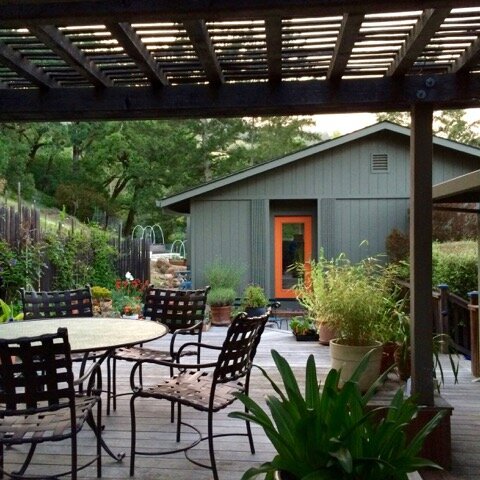

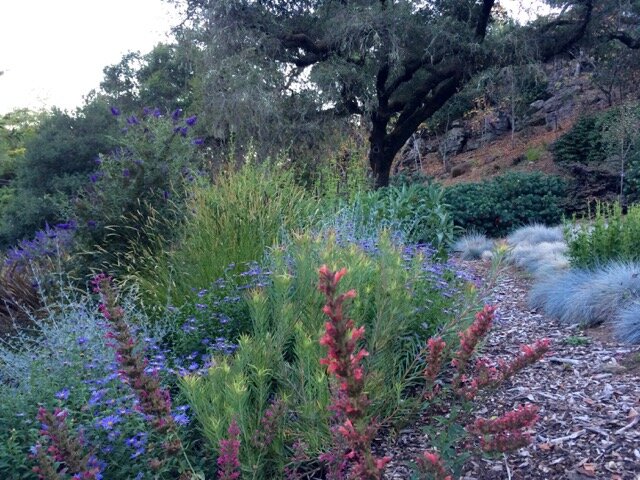
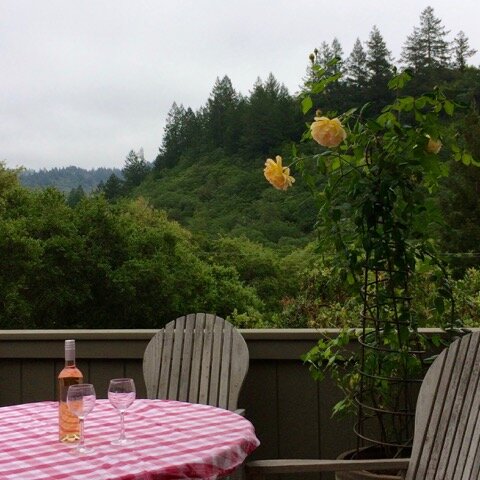
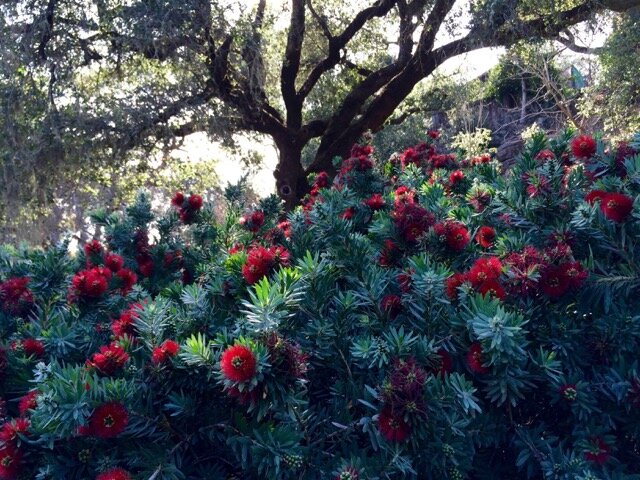
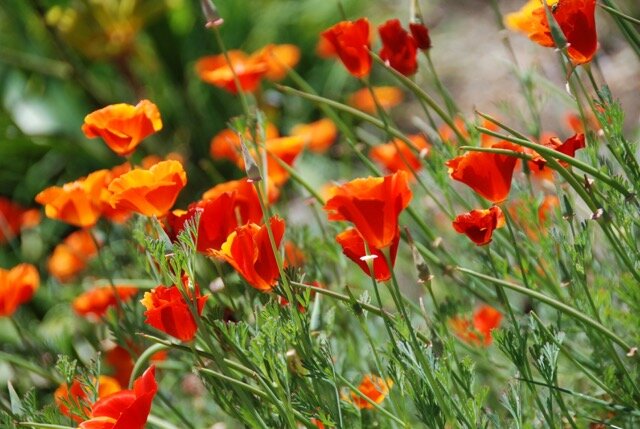
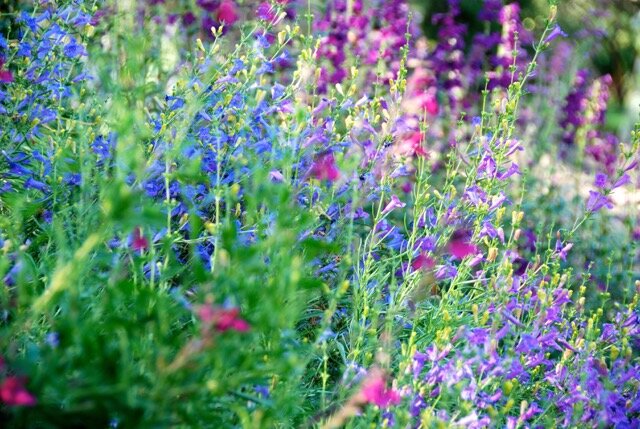
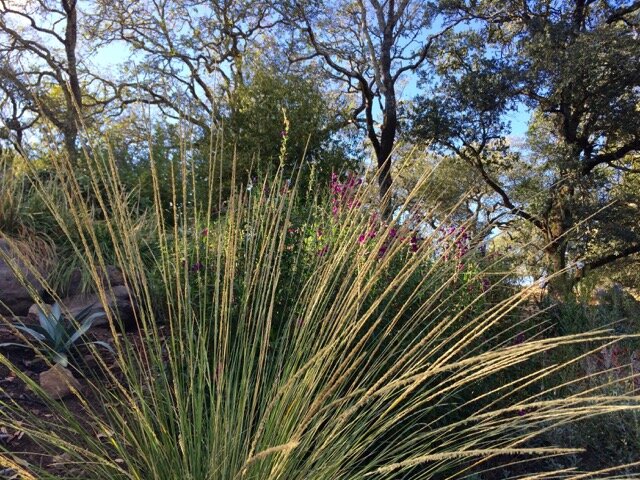
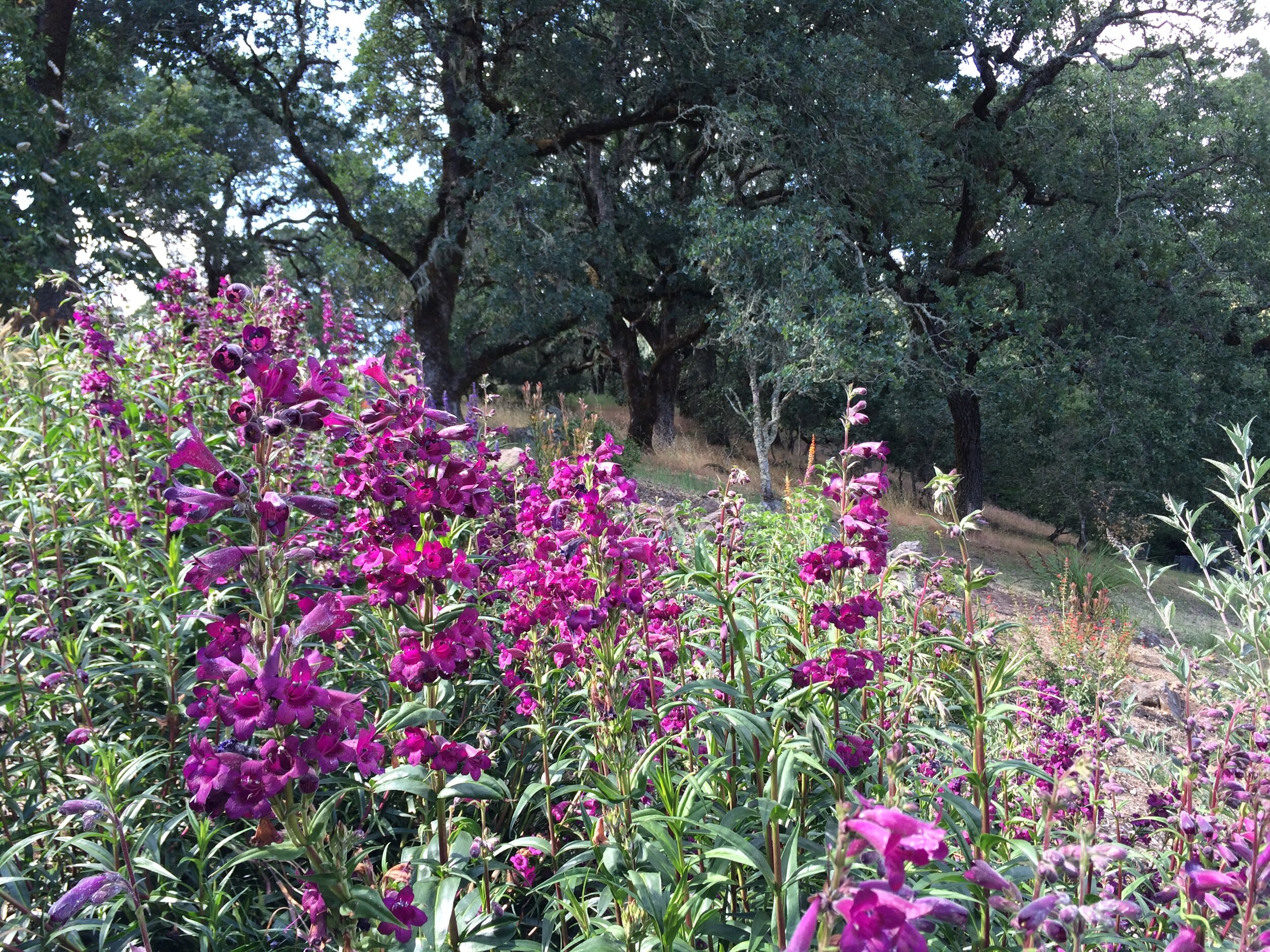

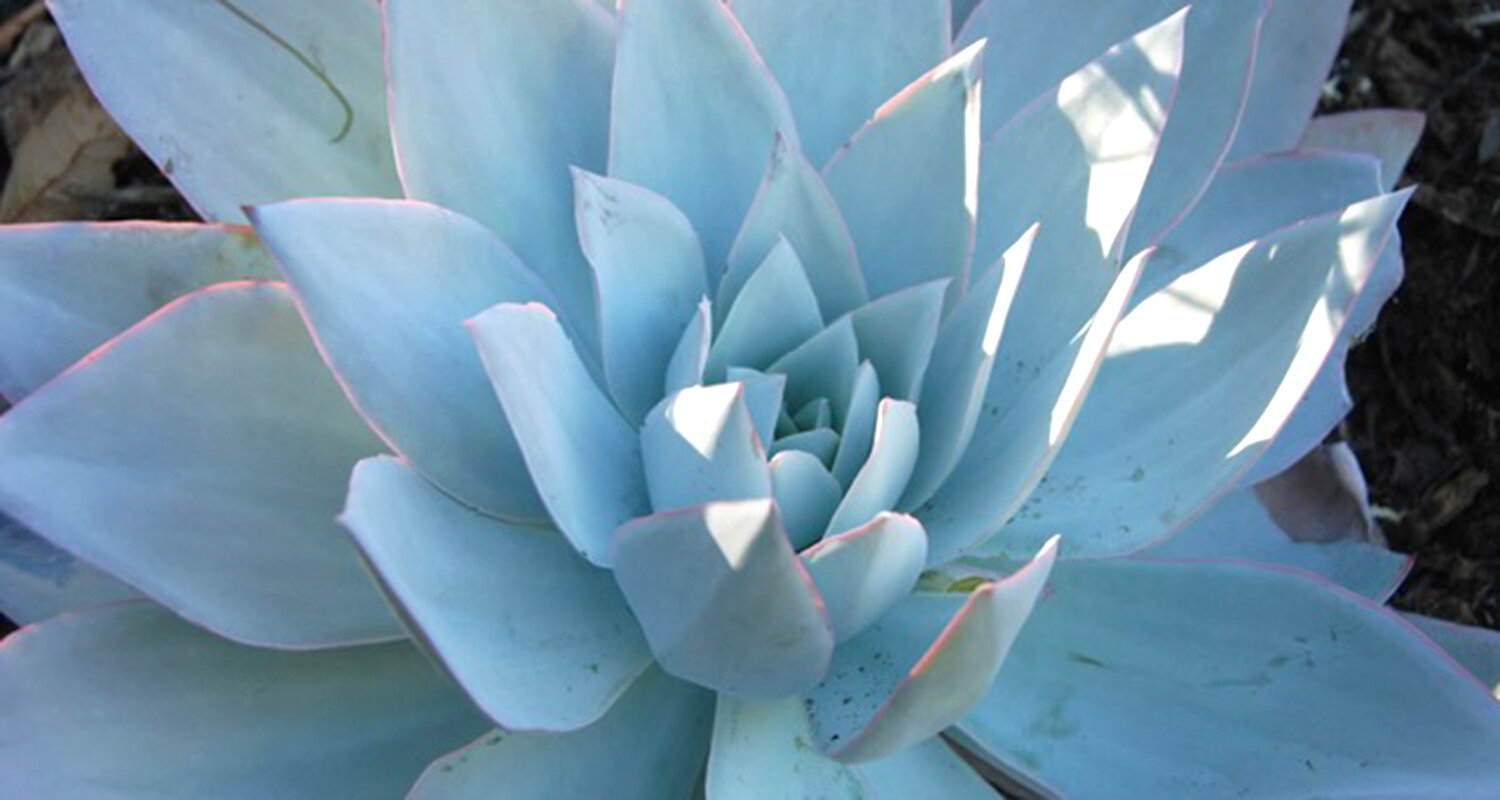
by Amelia B Lima, FAPLD
Amelia B Lima & Associates, Inc.
Del Mar, CA
The Point Loma Project
My customers purchased a property in Point Loma, San Diego with the intent to have the existing structure demolished and a new, modern home built on the site.
The lot is located high on a hill and the views of the city and the bay are beautiful. The new, three-level house has wide glass pocket doors which allow for amazing views any time of day.
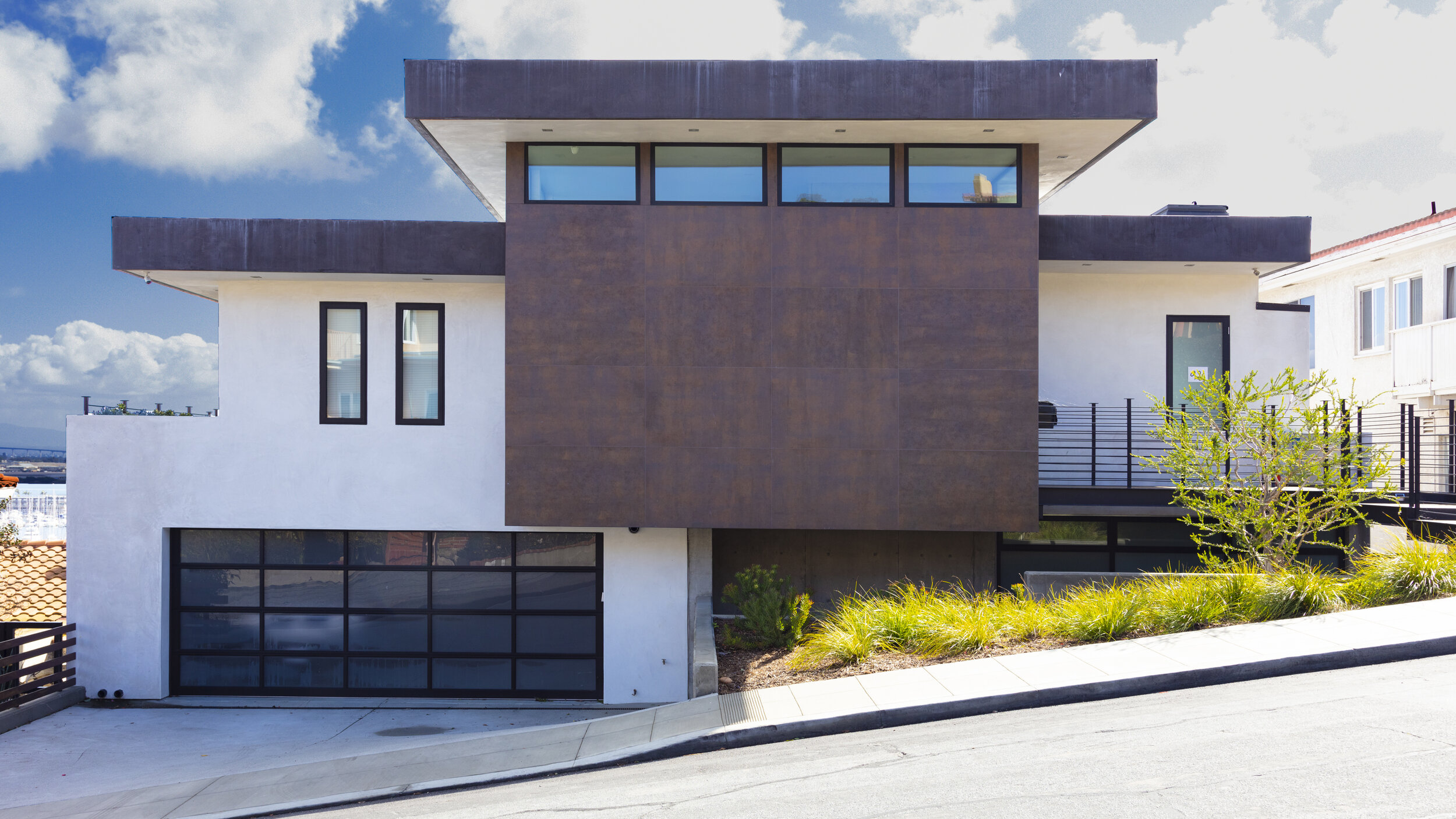
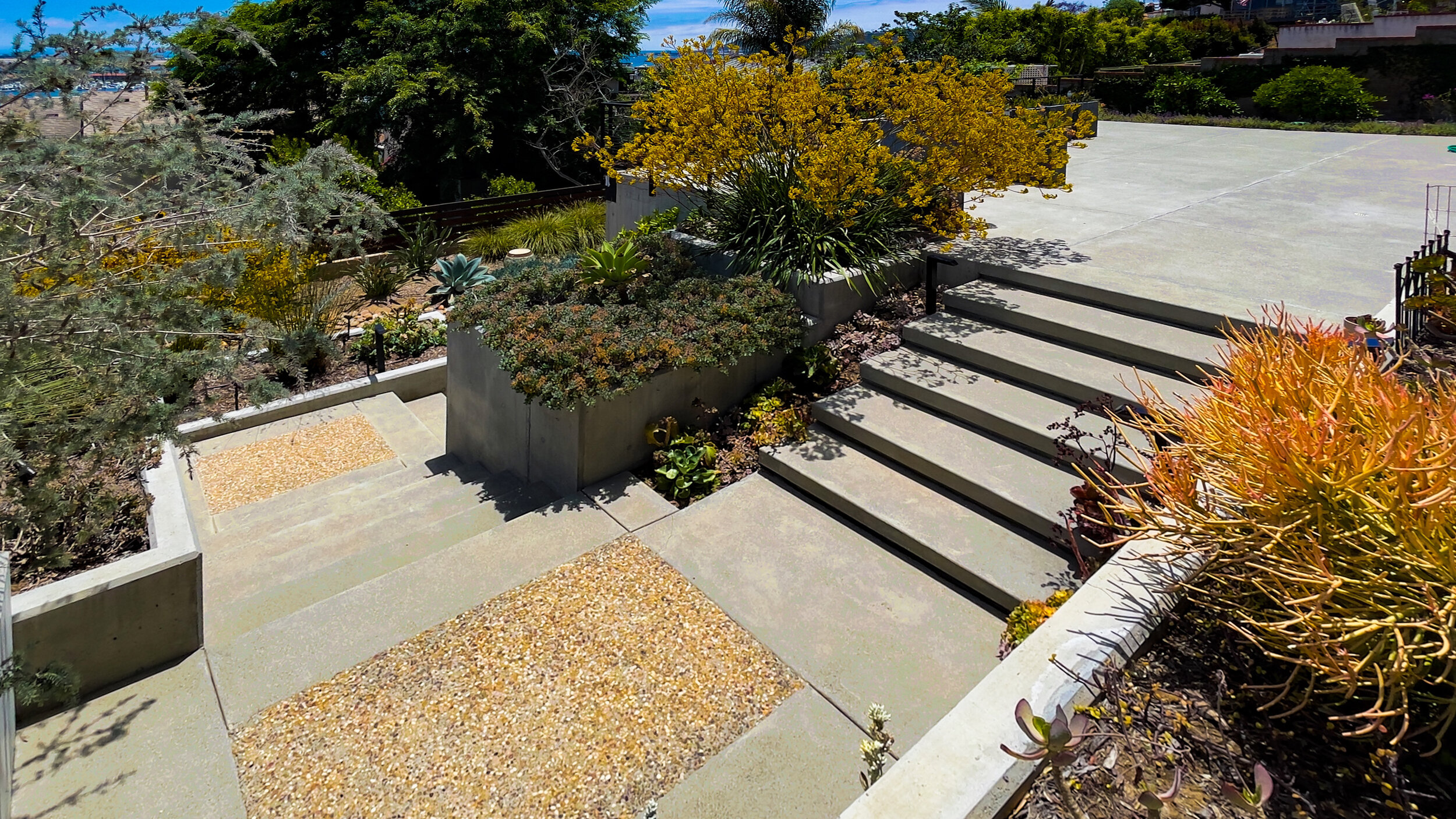
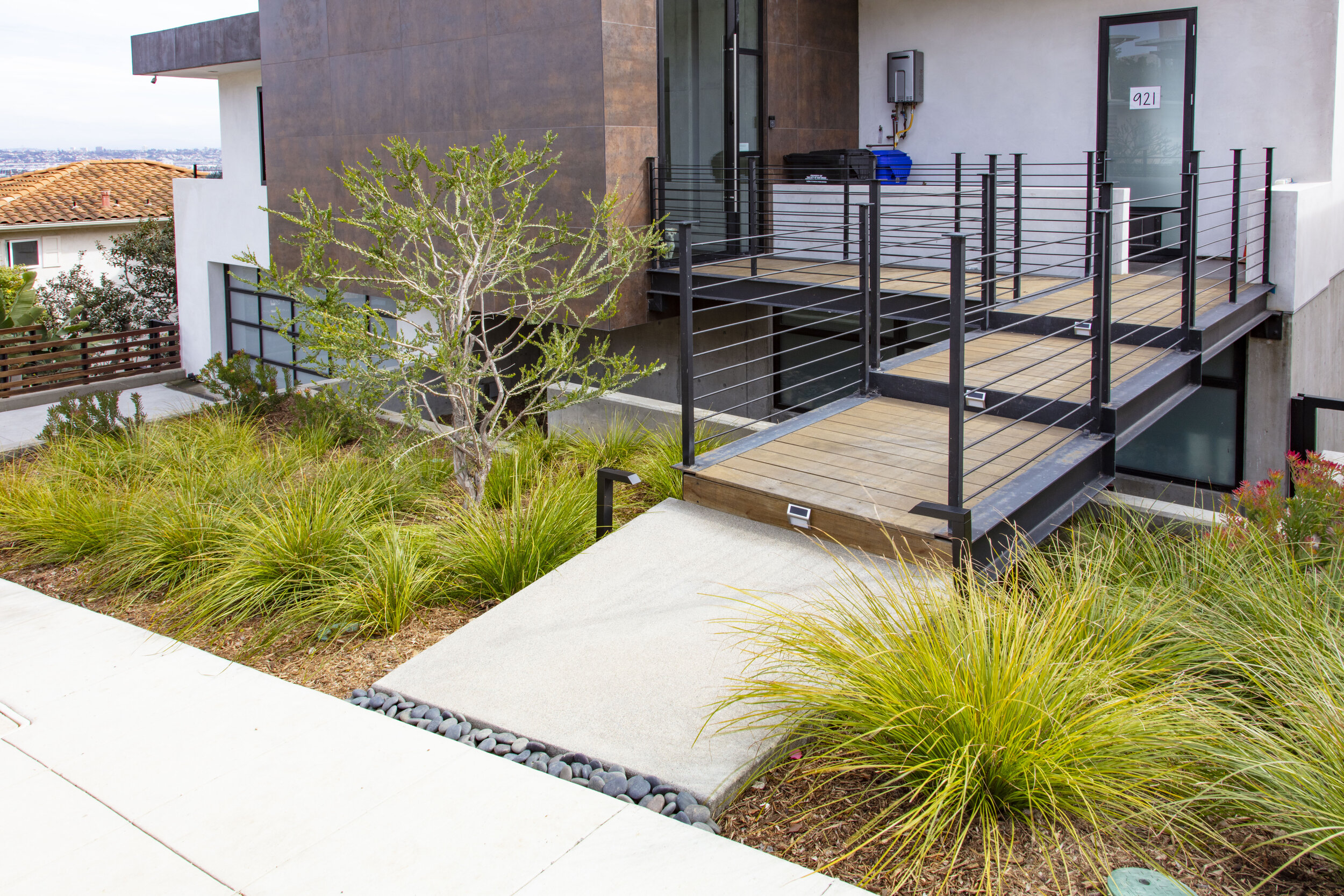
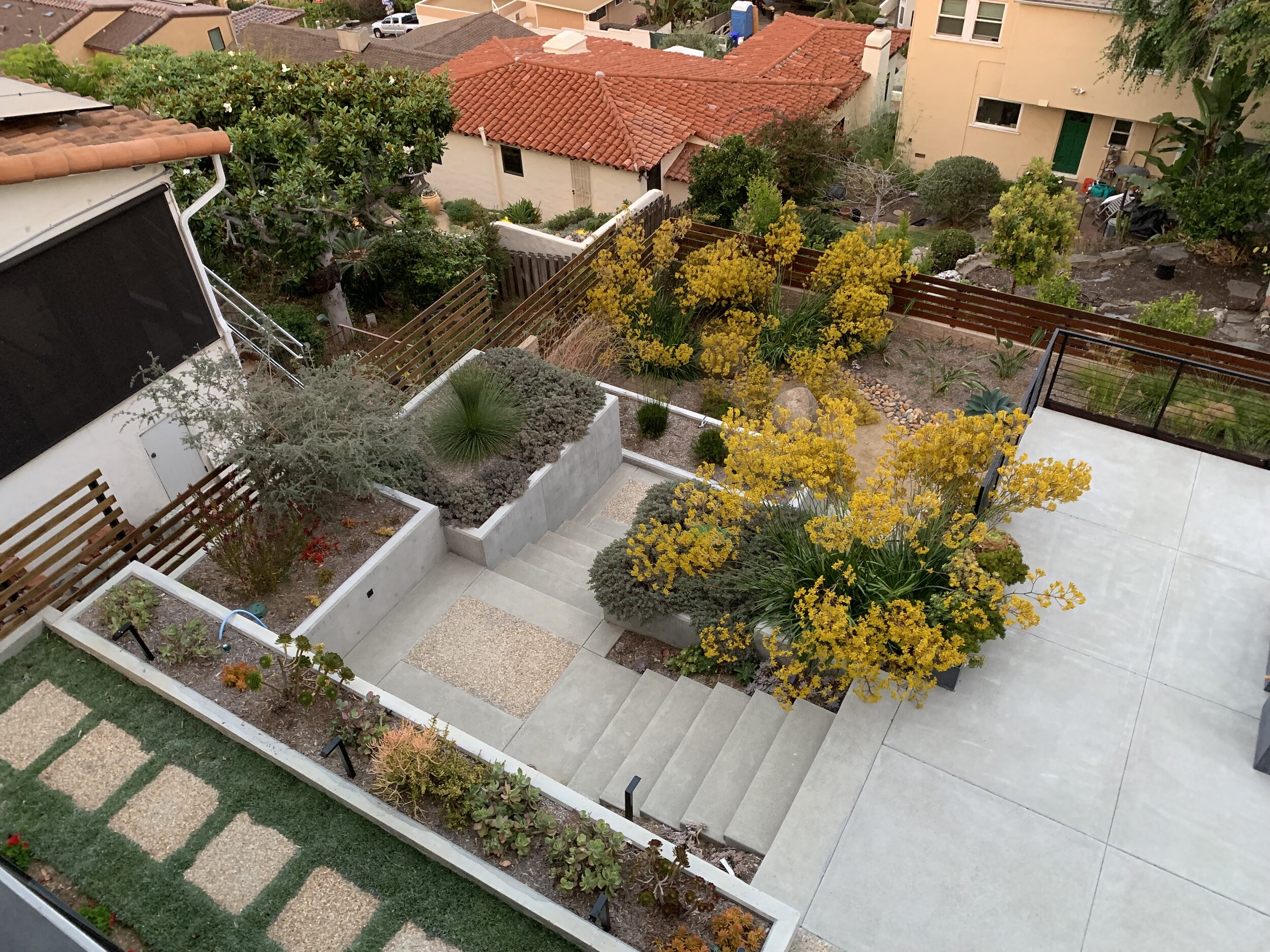
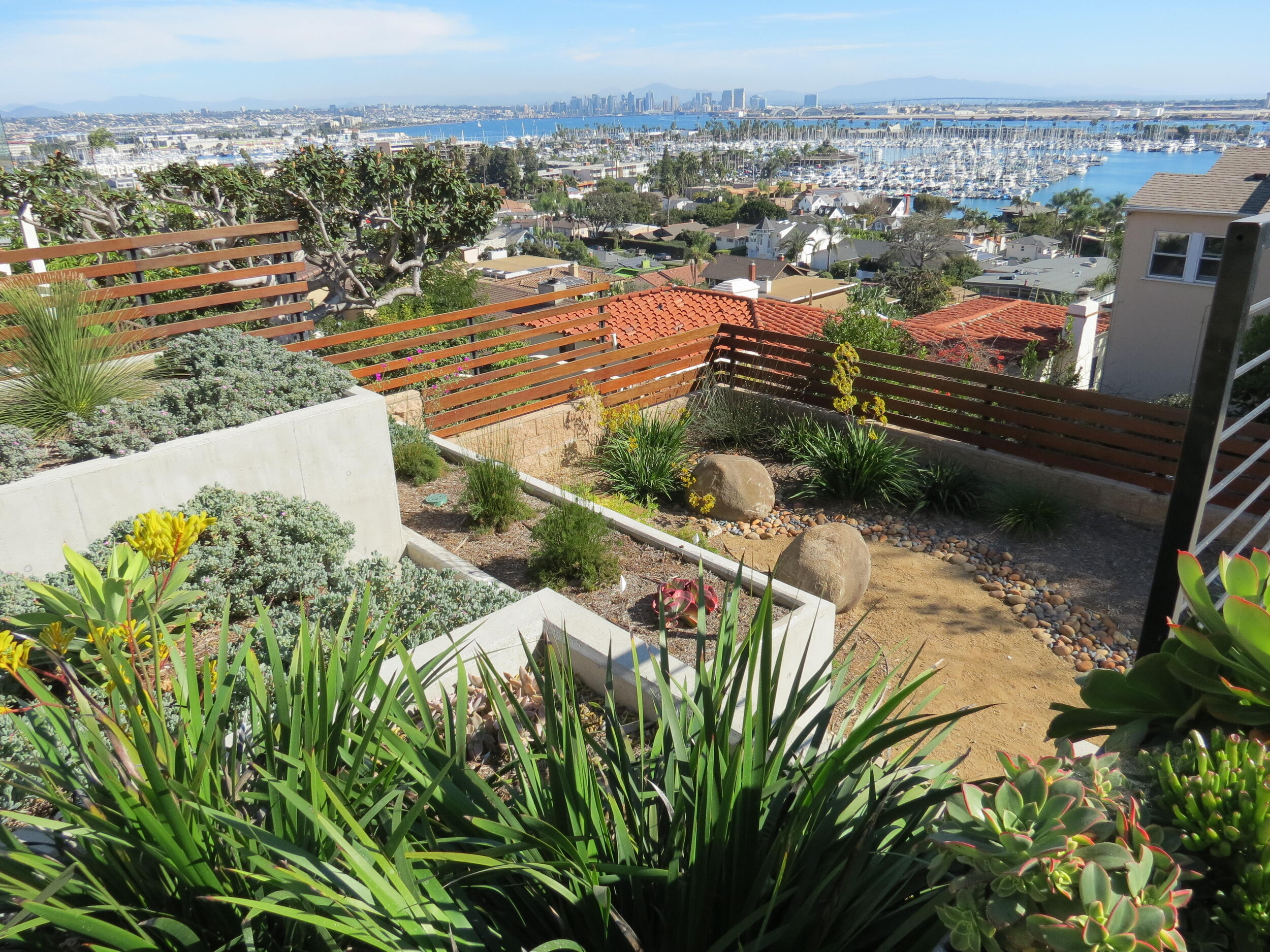
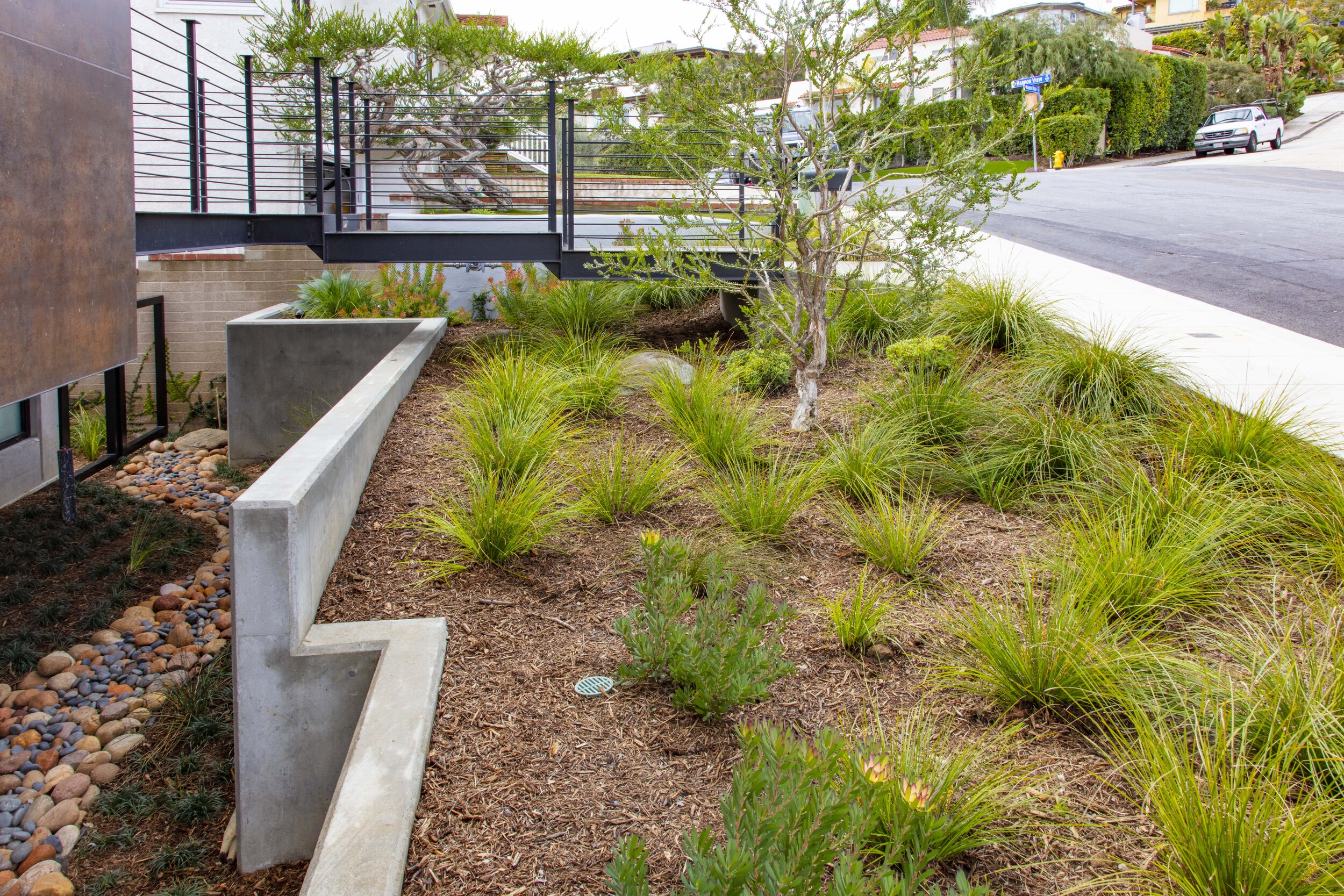
There is a 31.5 feet difference in elevation from the front sidewalk to the bottom of the lot. At the front door, the elevation is 142.5 feet above sea level, and at the lowest point of the garden, the elevation is 111’. The family room doors open to the top deck, at elevation 125’.
The homeowners’ original request was to have a lap pool outside the family room, and the original plan was drawn as such. Unfortunately, the pool contractor’s quote so exceeded the clients’ budget, plans for the pool were abandoned. Building a pool on such a steep site and with the local soil characteristics requires caissons that are anchored on bedrock for support making such a project complex and costly.
With the pool removed from the project, the oversized patio off the family room had a large fire table and a fountain proposed, which have yet to be built. Wide stairs with raised planters on both sides, and comfortable landings direct people to the garden lower level.
Again, the project suffered several revisions. One of the original proposals was to install a rain water tank at the lowest level of the garden to capture all the rain water that could then be used to irrigate the garden. On steep sites like this one, the city requires homeowners to keep their water away from lower neighbor’s property. Again, due to the cost, this too was also removed from the project.
What remained was the dry creek bed that runs along the length of the lot to capture the water that would otherwise spill over the neighbor’s lot and is now being pumped out of the property.
The design calls for a deck floating over the dry creek bed made with the old salvaged wood from the existing house, but this remains to be built.
The garden now is 3.5 years old and the plants are doing very well. Point Loma temperatures are moderated by the ocean and plants don’t have to cope with as extreme of temperatures.
The landscape is a mixture of fruit trees, succulents, grasses, Mediterranean and Australian shrubs. Flower colors were carefully selected to reference one of the client’s cultural requests.
Ipe wood fence built on top of concrete walls follows the entire edge of the lot, and keep the customer’s dogs safe from other animals.
by Debbie Gliksman, APLD
Urban Oasis Landscape Design
Los Angeles, CA
Canyon View Terrace in Bel Air
My clients were busy healthcare professionals and needed a place to relax, entertain and wash away the day’s stress. The existing forlorn concrete patio didn't do justice to the spectacular view. We created two levels of patios, an upper paved patio off the house and a lower deck below in the canyon. The capacious upper deck features a Jacuzzi with a custom-built pergola, a dining area, and a bespoke bench and fire pit. Raised planter beds break up the expanse of bluestone paving and create intimate areas while still allowing plenty of room for hosting parties and get-togethers. The lower deck and hillside are planted with California native plants, creating a veritable wildlife sanctuary.
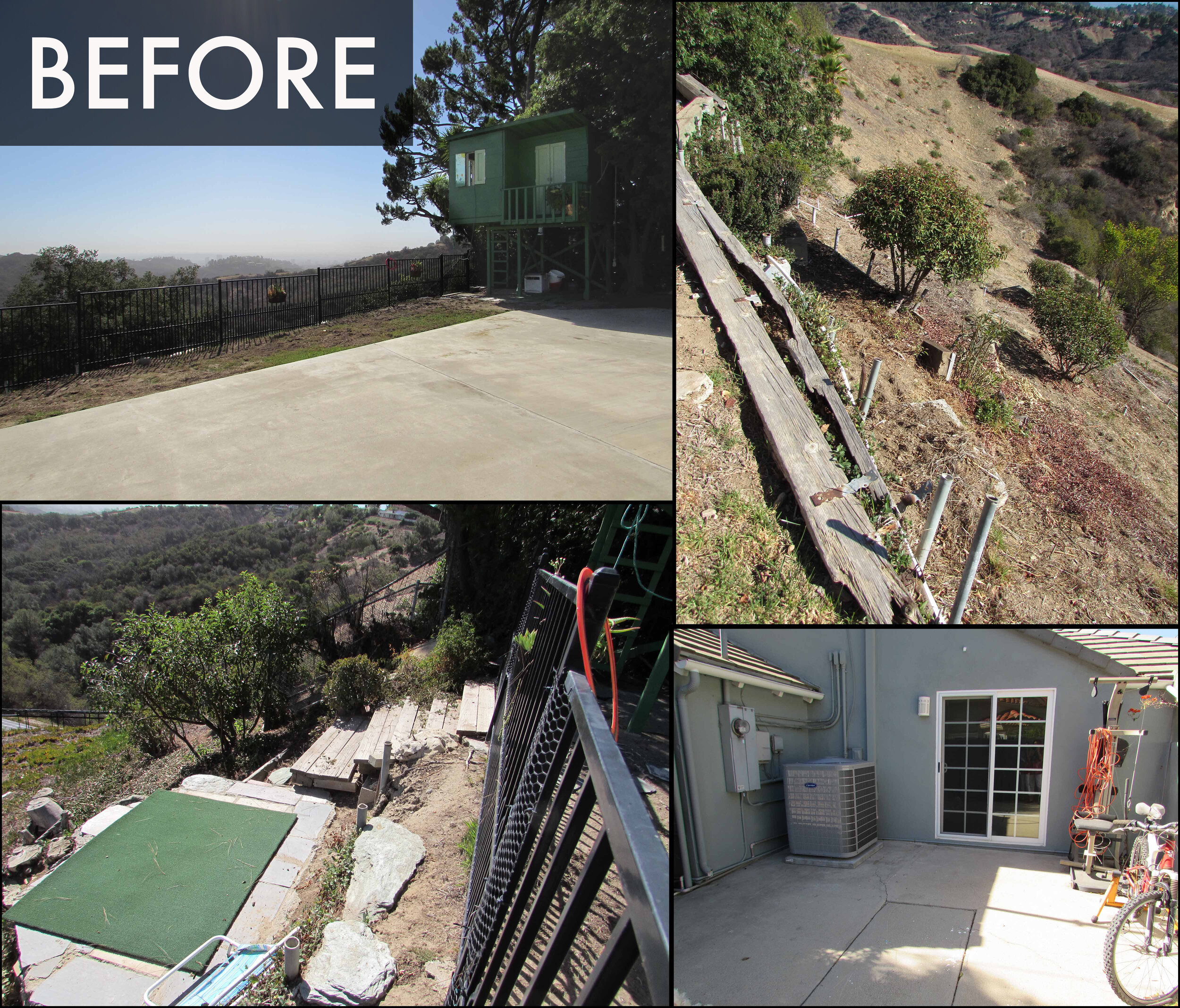

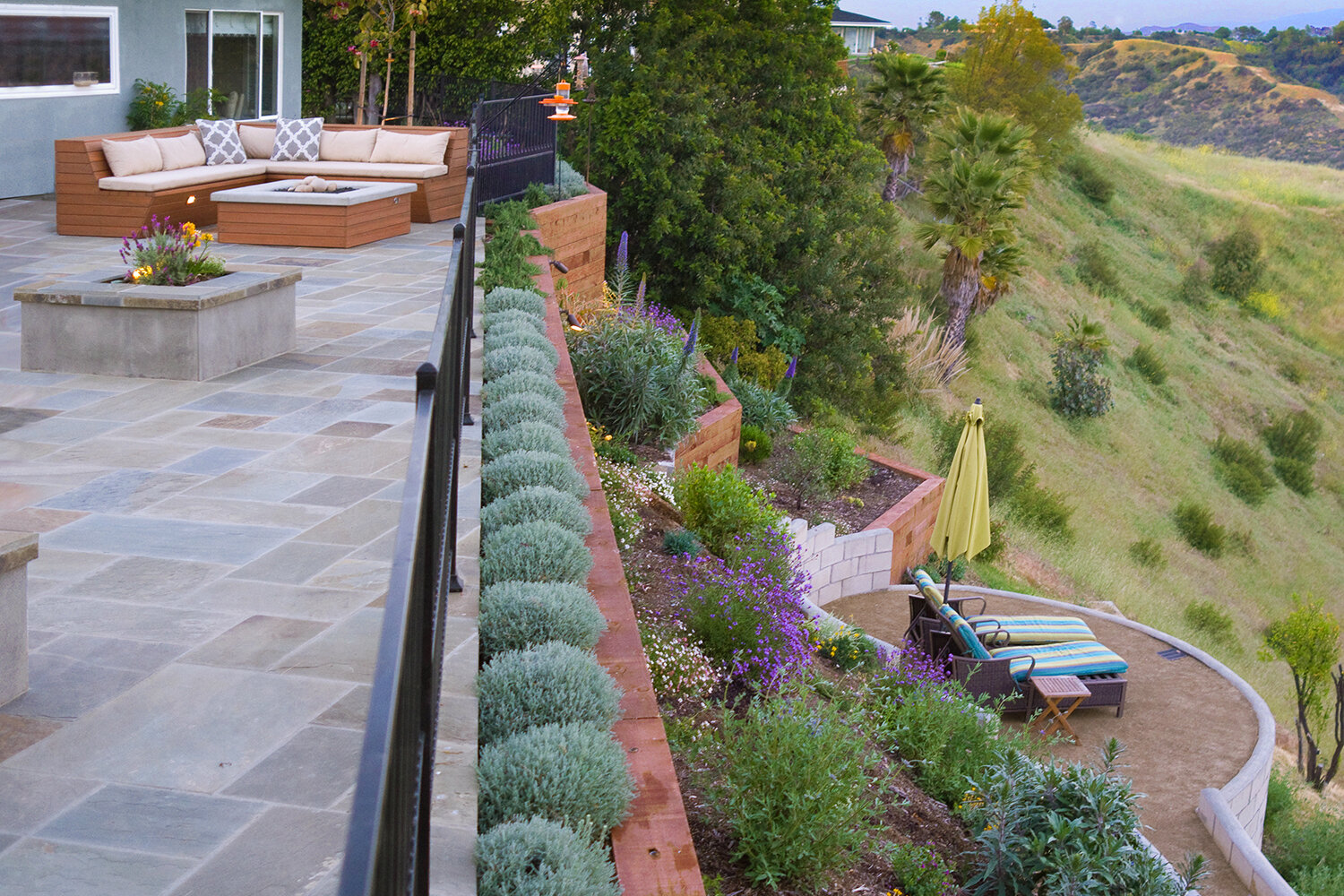
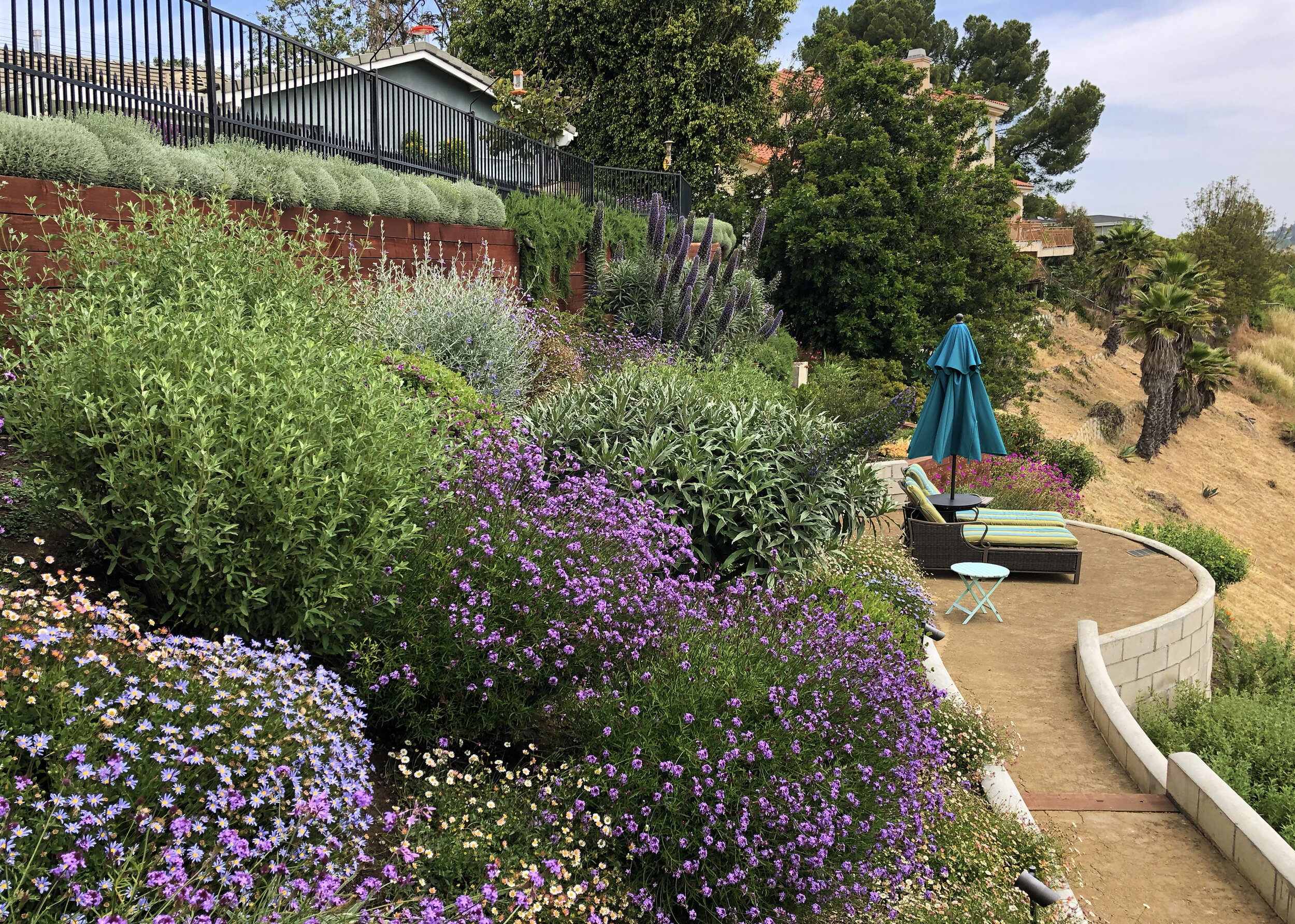
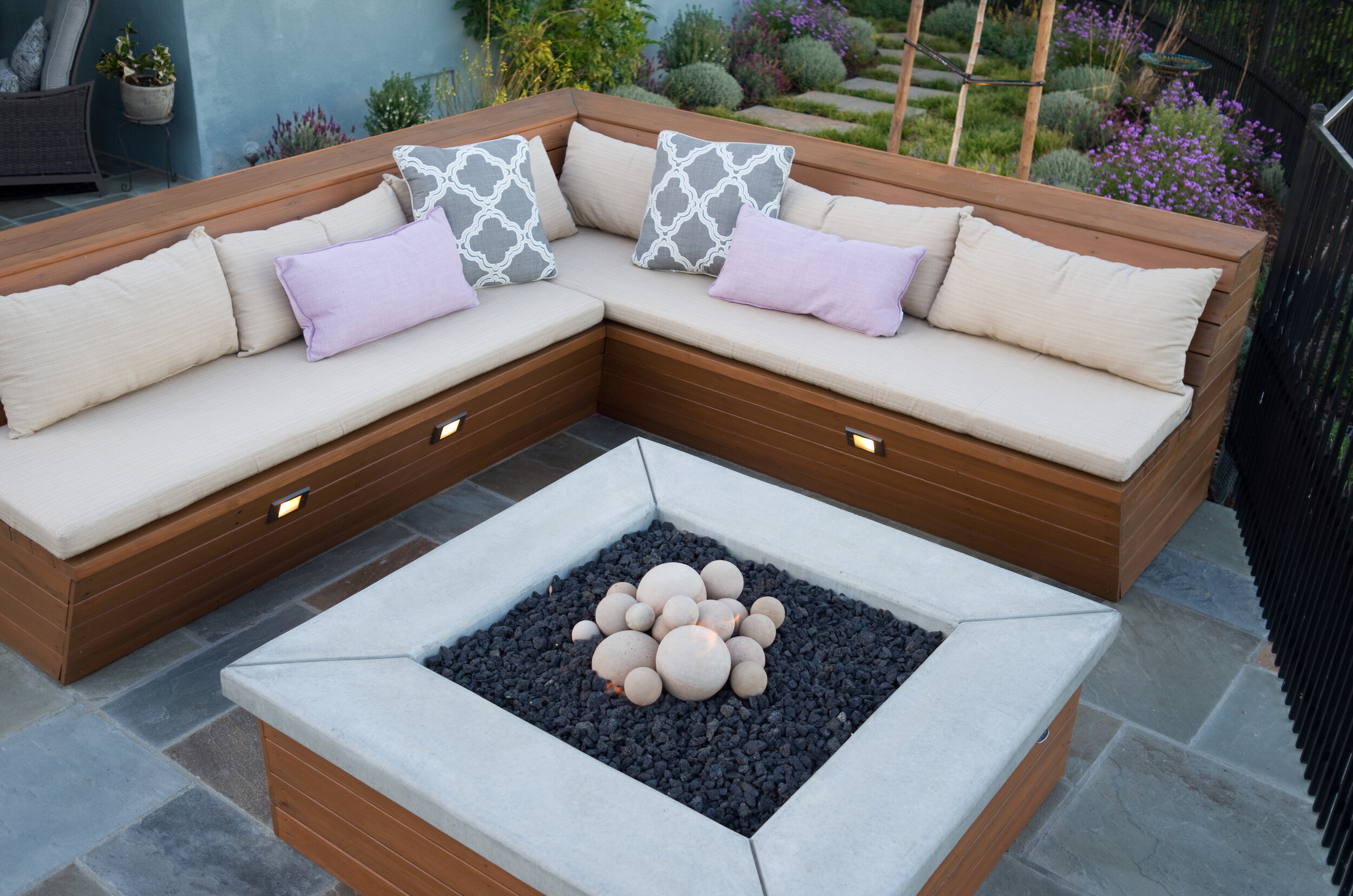
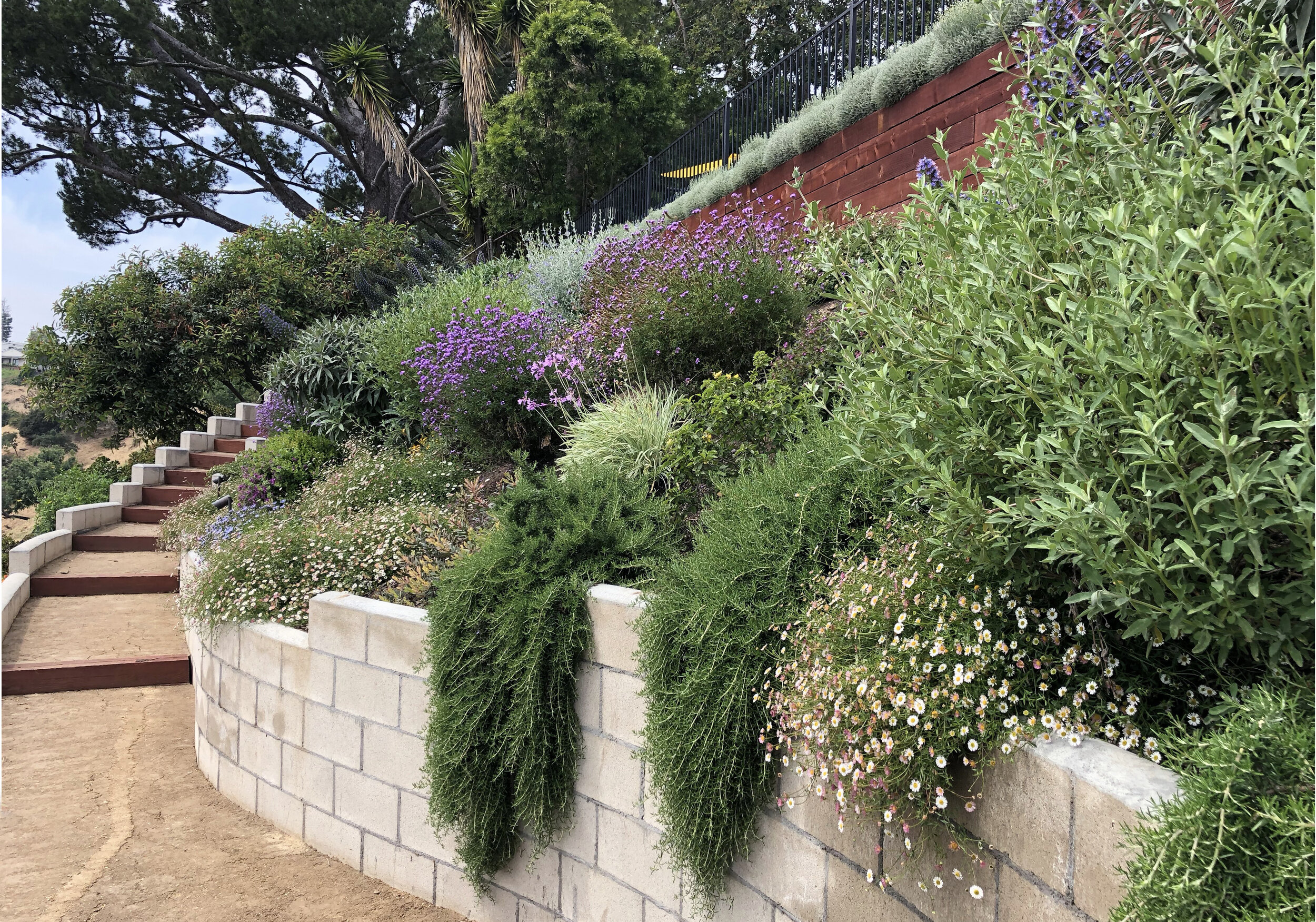
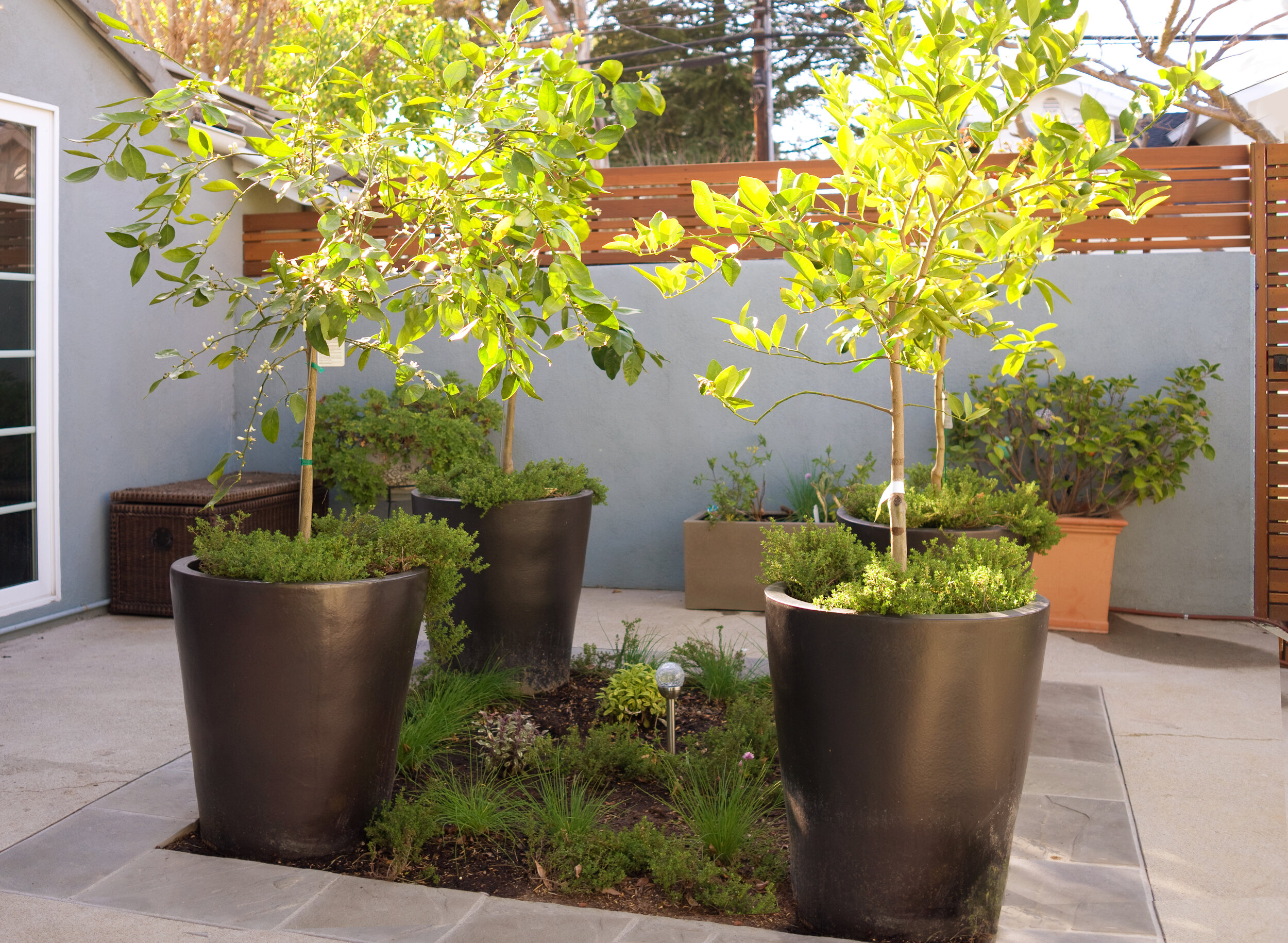
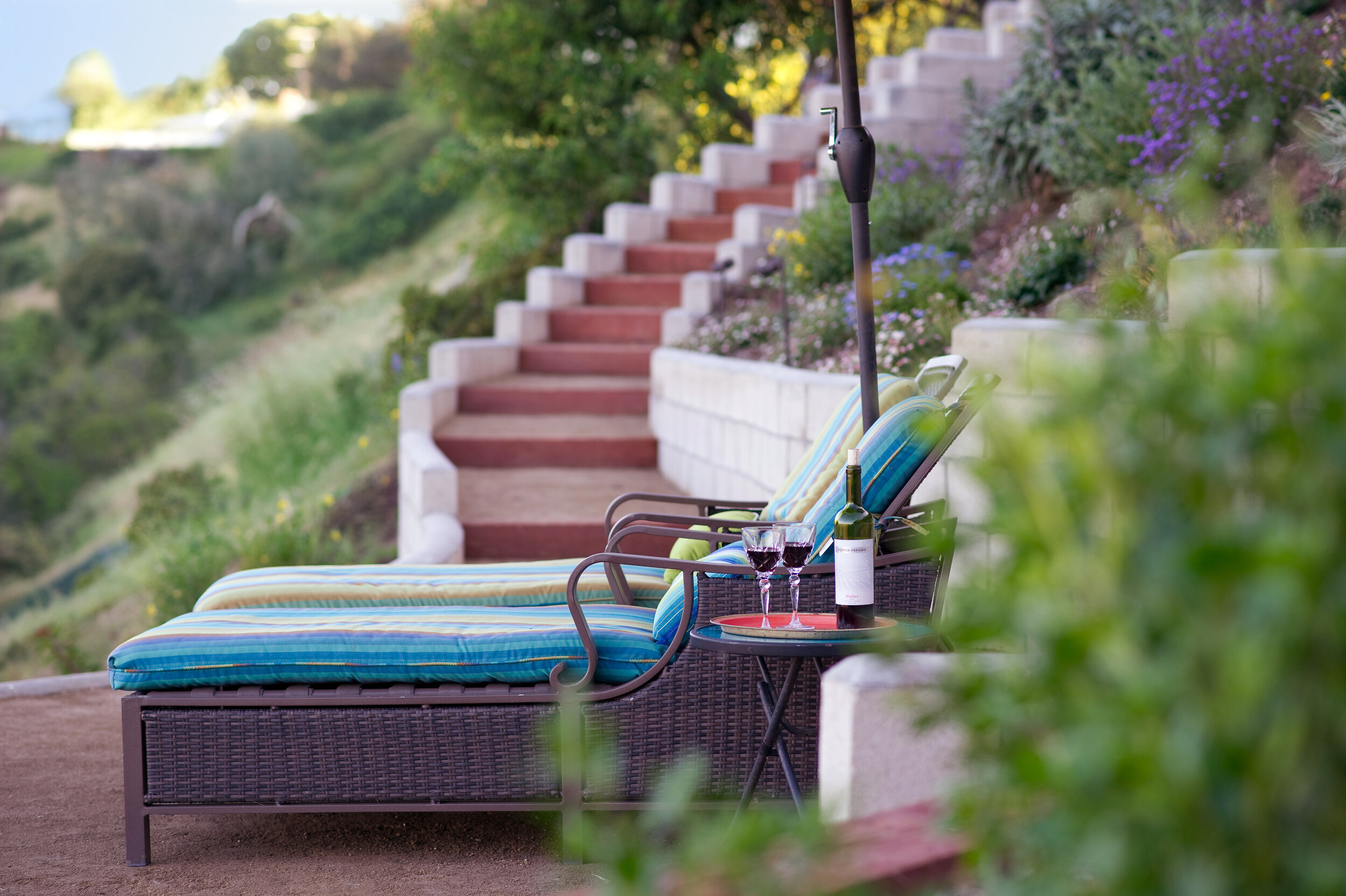

Photos courtesy of Marcus Teply and Debbie Gliksman.
by Marilee Kuhlmann
Urban Water Group, Inc.
Los Angeles, CA
by Tom Rau
Urban Water Group, Inc.
Los Angeles, CA
Hillside Garden in Century City
A series of terraces are the keynote of this 6,000 square foot project; these transform a formerly unusable slope into flower-filled spaces with plenty of seating – for conversation, contemplation and dining. The overall impact is one of Mediterranean flair – warm, lively and inviting.
The hillside meadow plantings, which include pearl acacia and Japanese blueberry trees along with the white flowering Nierembergia Jessie, are interspersed with a dining area featuring a custom-designed shade and lighting pergola, a bird-friendly water feature, a cascading waterfall and raised vegetable beds.
Incorporated in the topmost terrace is a pad for a future cottage to overlook the garden. Currently, it’s being used as the kids’ campsite, complete with an adjacent fire pit for roasting marshmallows. There’s even a pen for the family pet – a Sulcata tortoise, one of the largest tortoise species in the world.
At the front of the house, Forest Pansy redbud trees provide year-round color and a succulent garden spotlights tilt-head aloes. Nearby, rain gardens were established in the parkway. In the side yard, cisterns provide the means of harvesting 2,100 gallons of stormwater.
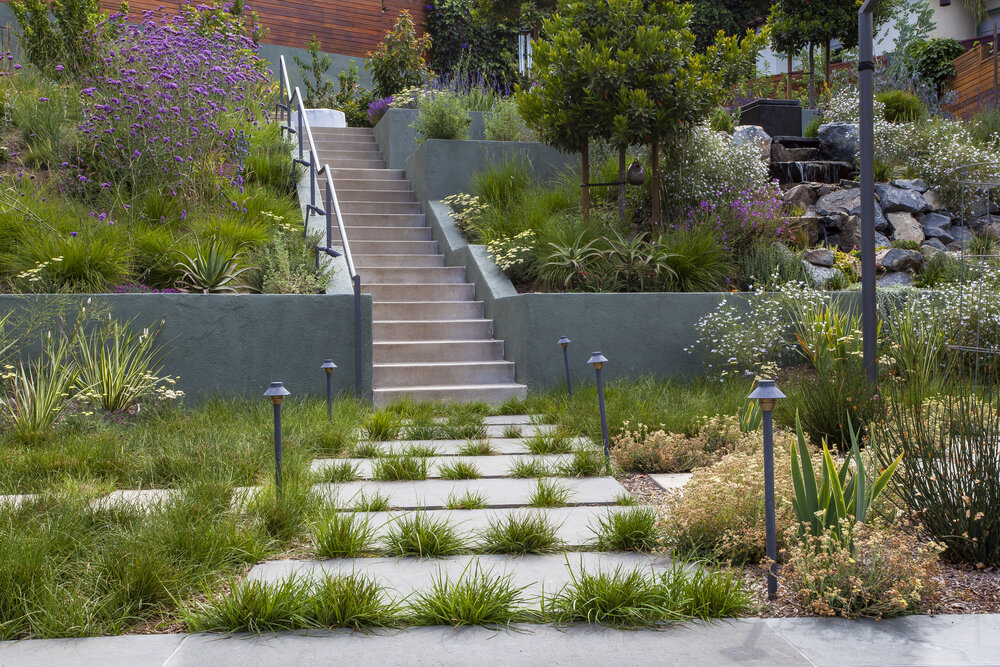
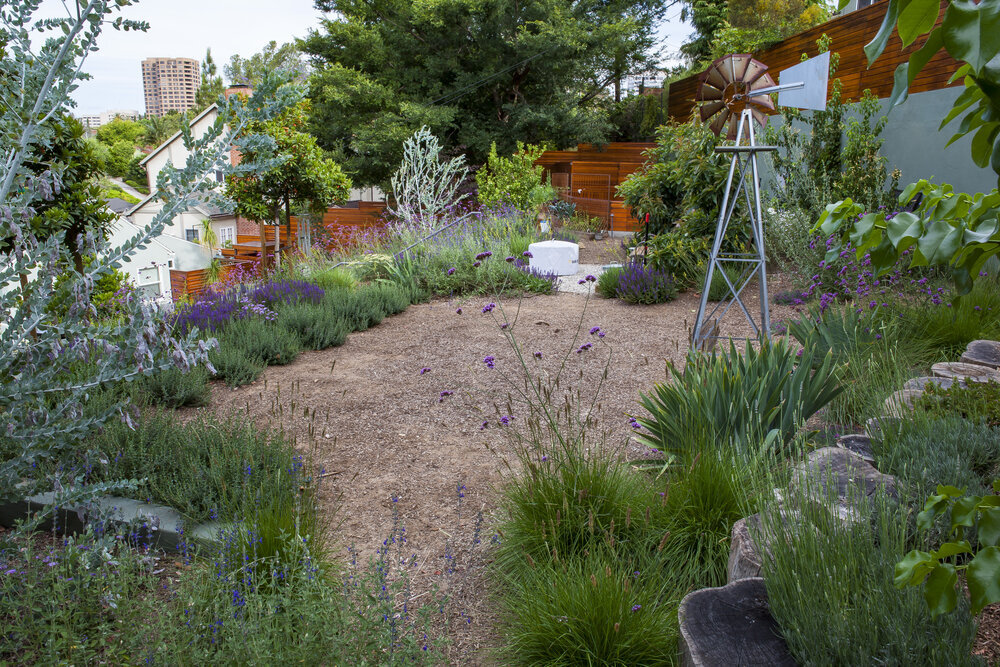

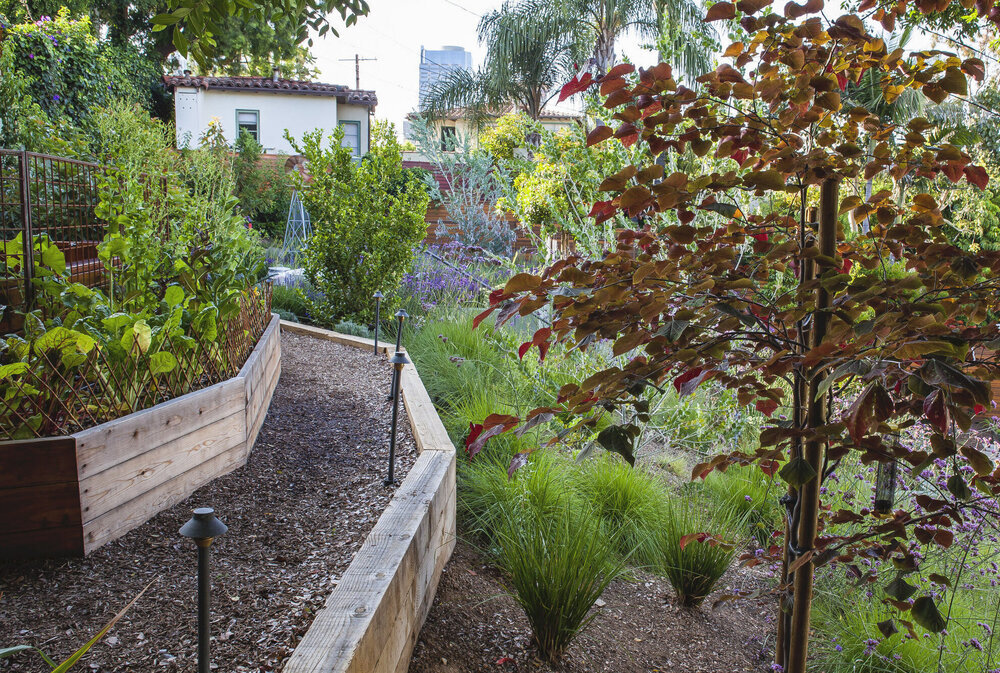
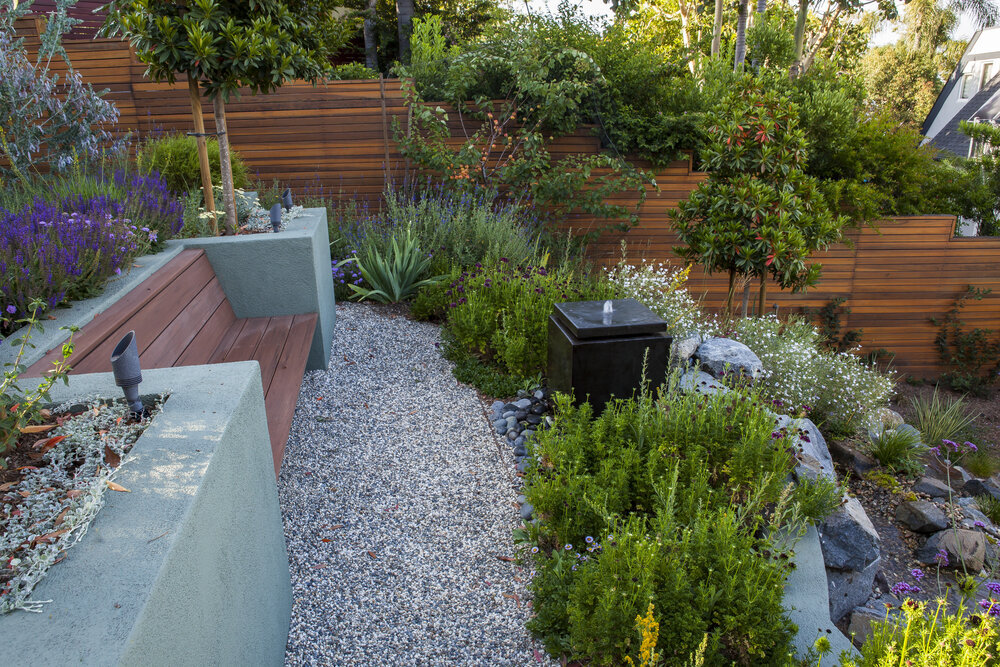
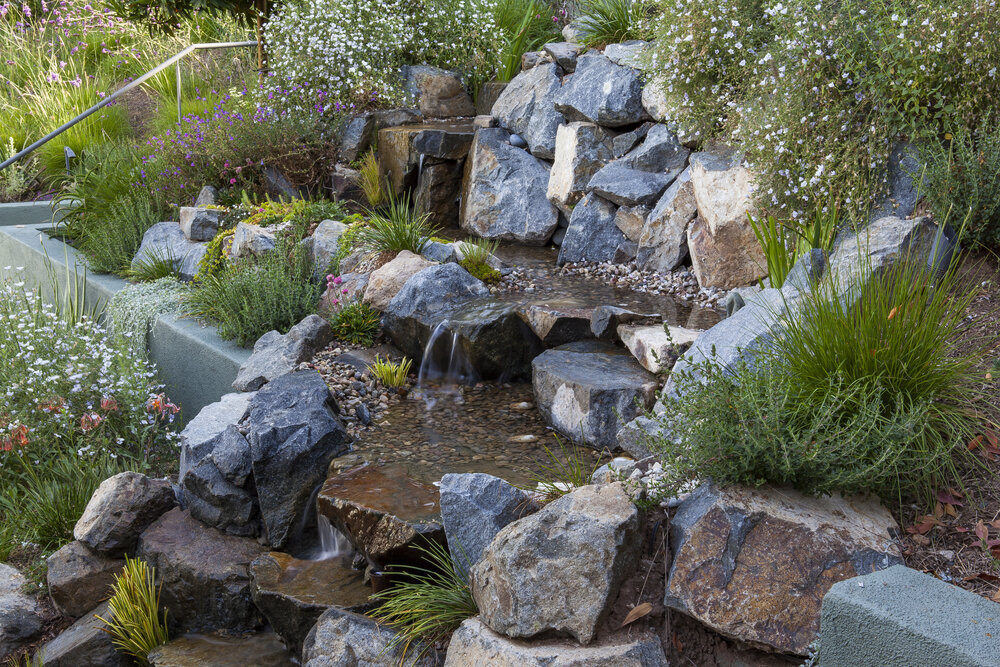
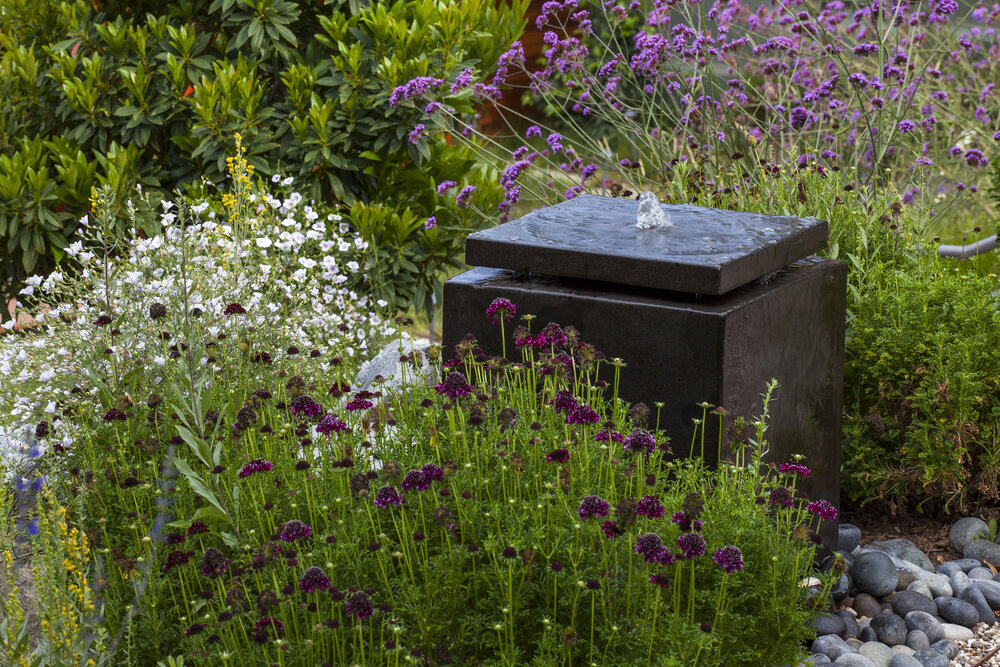
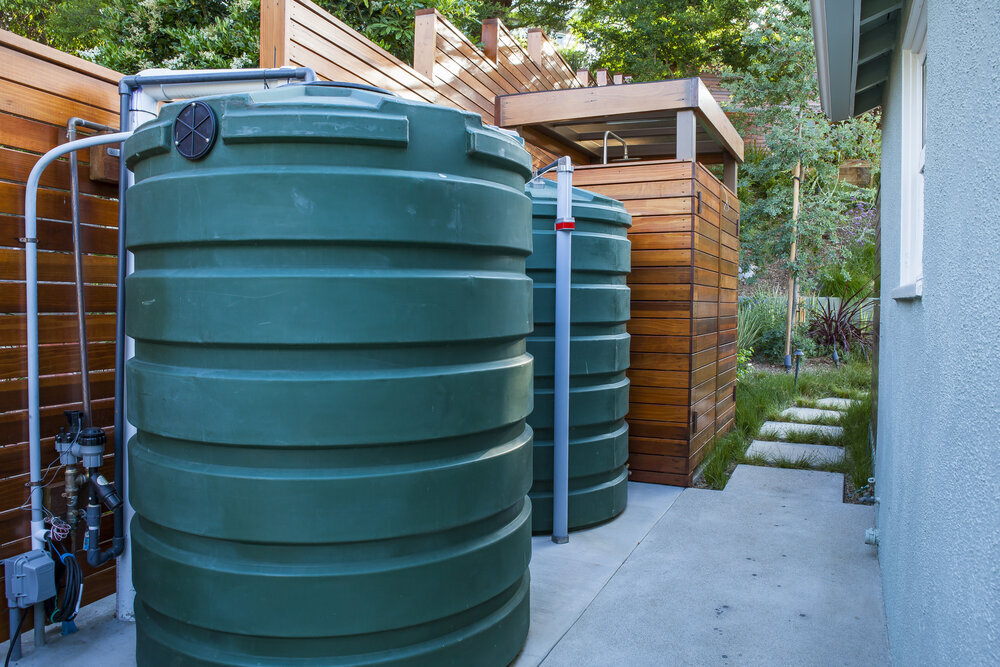
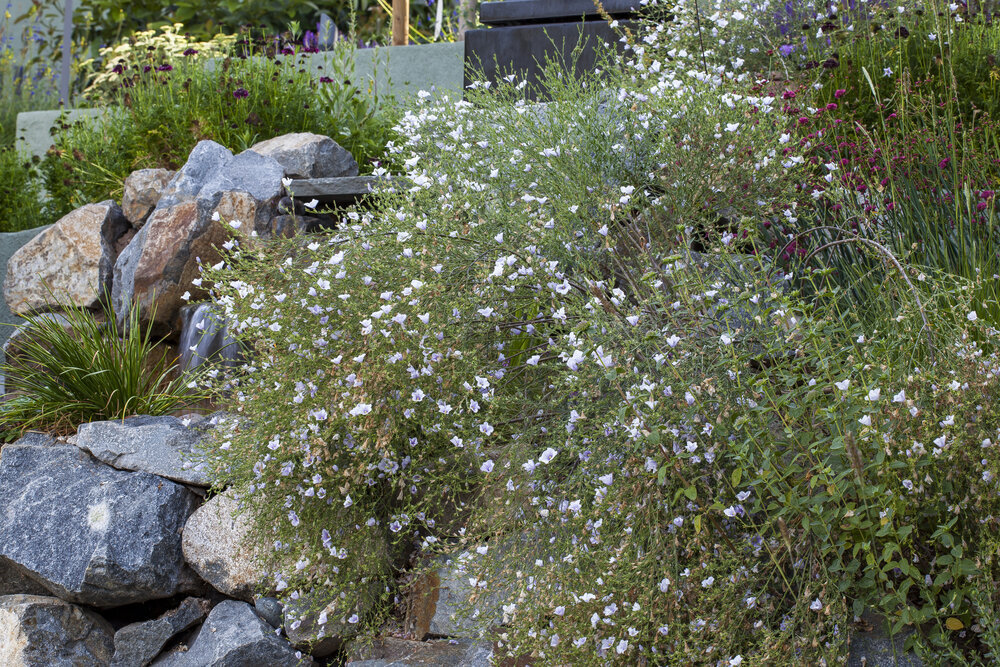
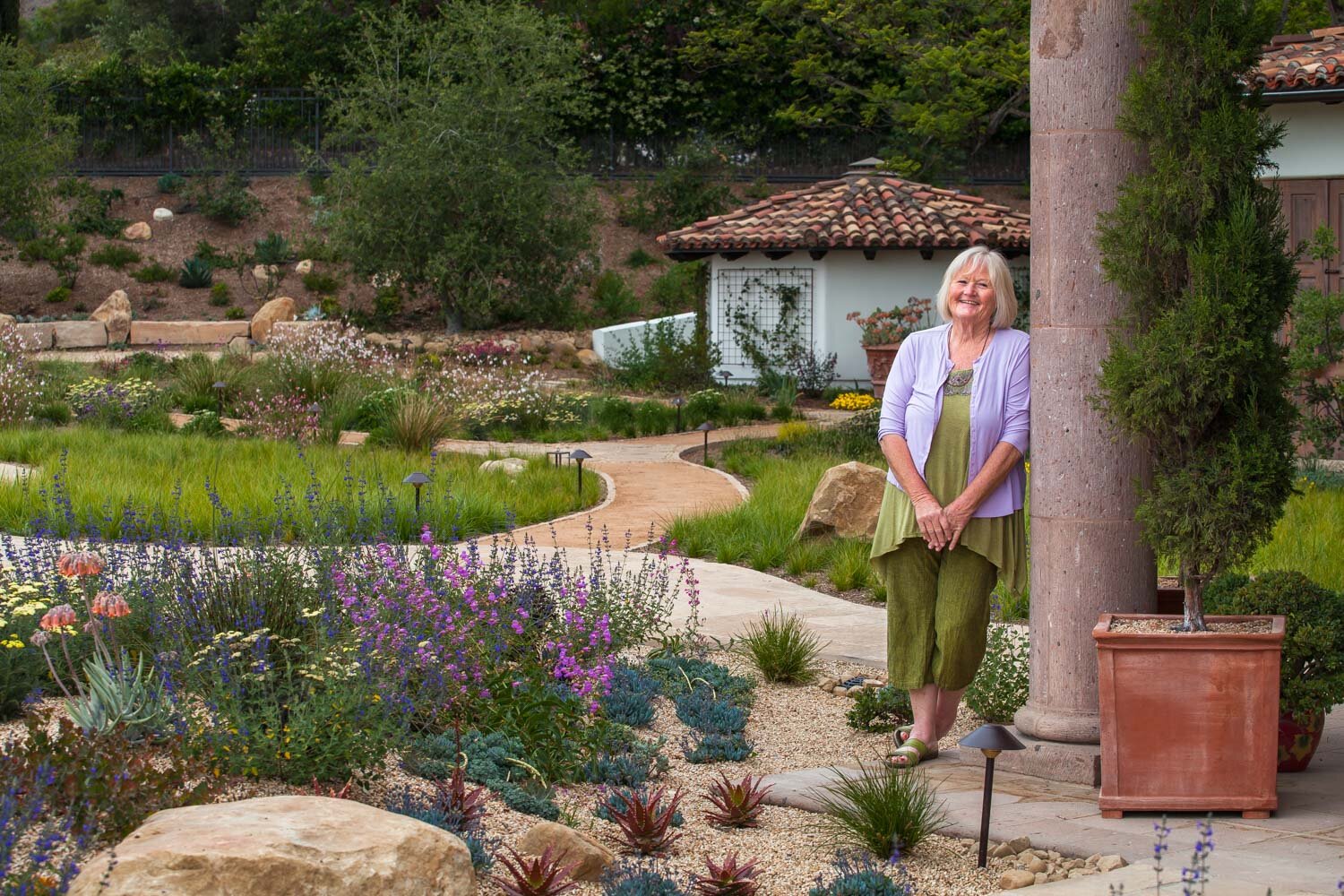
by Holly Selvig
Holly Selvig Landscape Architecture
San Anselmo, CA
Winship Park Residence in San Anselmo
This active family wanted to create usable outdoor spaces on their steeply sloping, irregular-shaped lot. They also prioritized using natural materials and sustainable landscape techniques such as flow-through permeable pavers, rain gardens, swales, and bioretention basins. The result is a series of level play-spaces, gathering areas and vegetable beds carved out of the hillside, all while preserving mature oak and buckeye trees. The view from the deck encompasses an artistic staircase and boulder cascade unfolding onto a meadow of low water-use grasses. Timber from a Monterey pine removed from the site was re-purposed as a hillside bench. The varying spaces and levels are connected to each other by a path that is soft underfoot, made from redwood timbers and crushed stone.
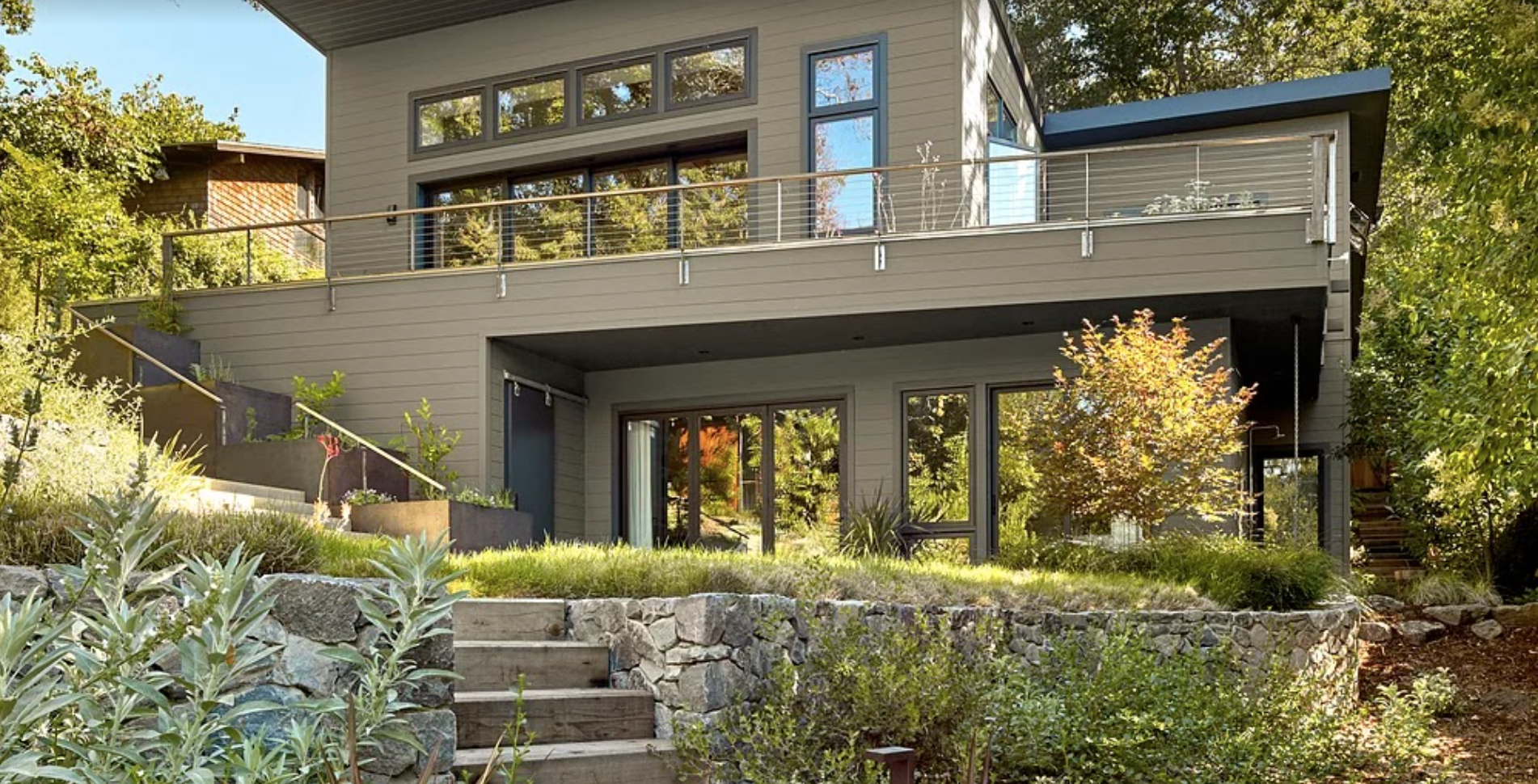
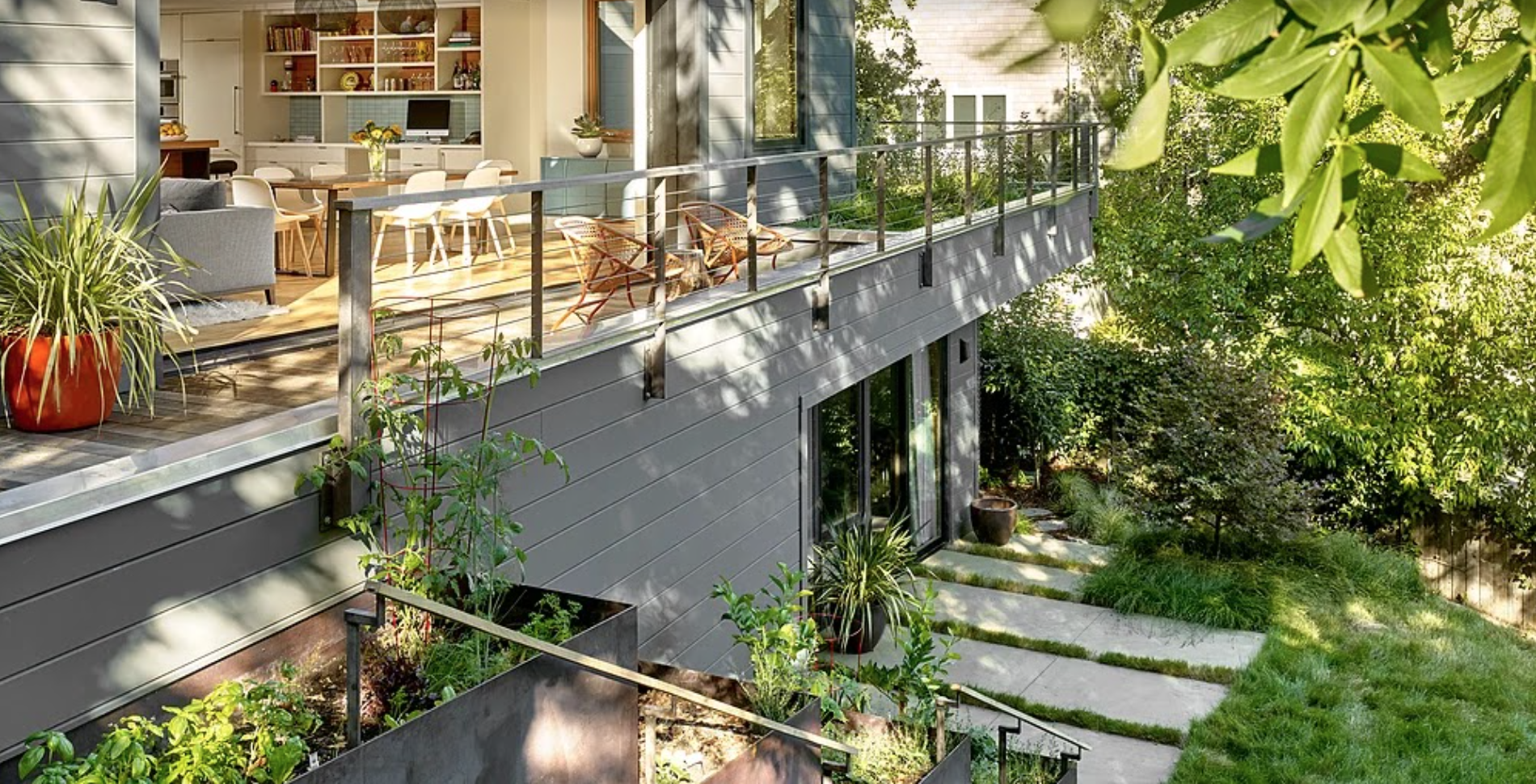
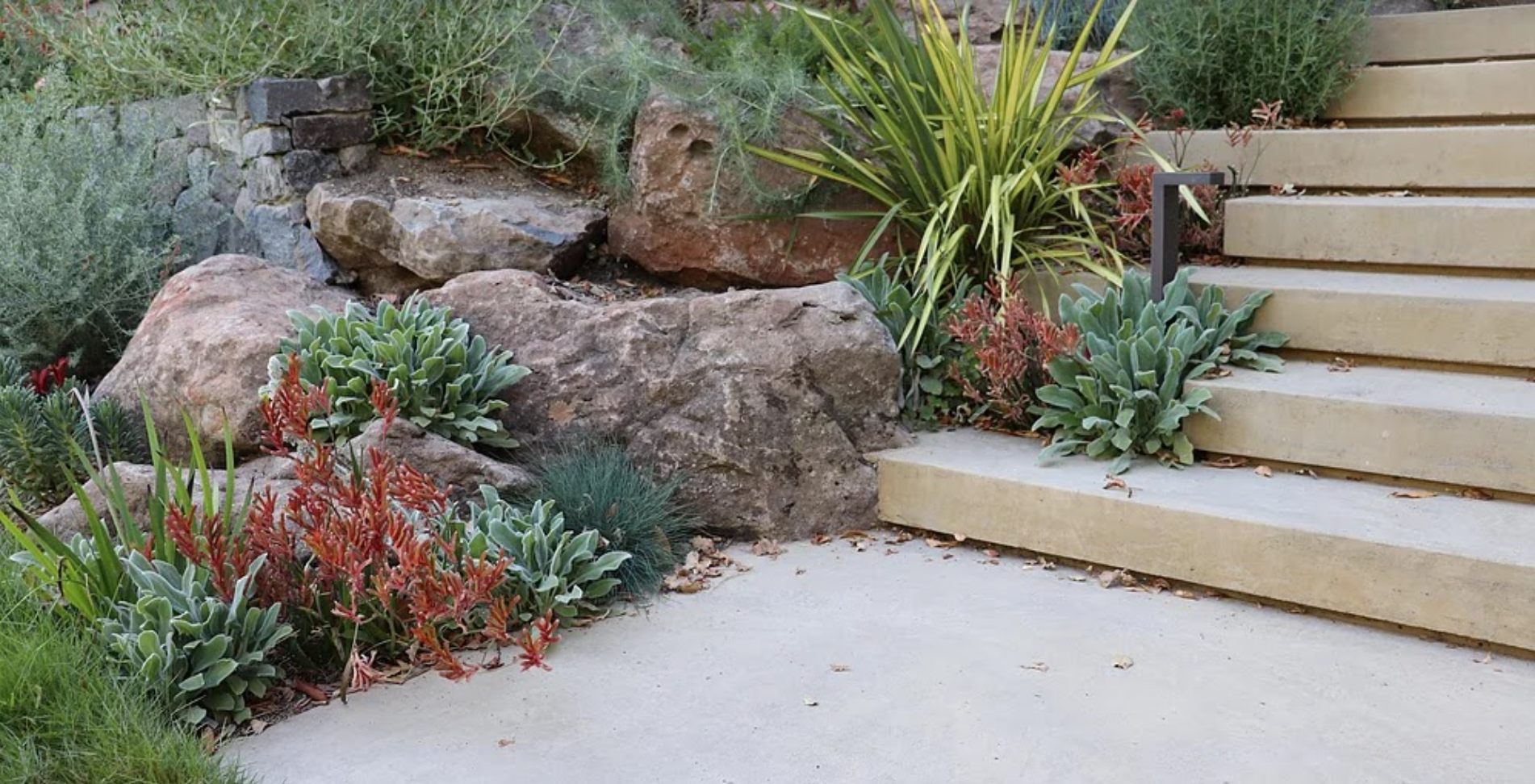
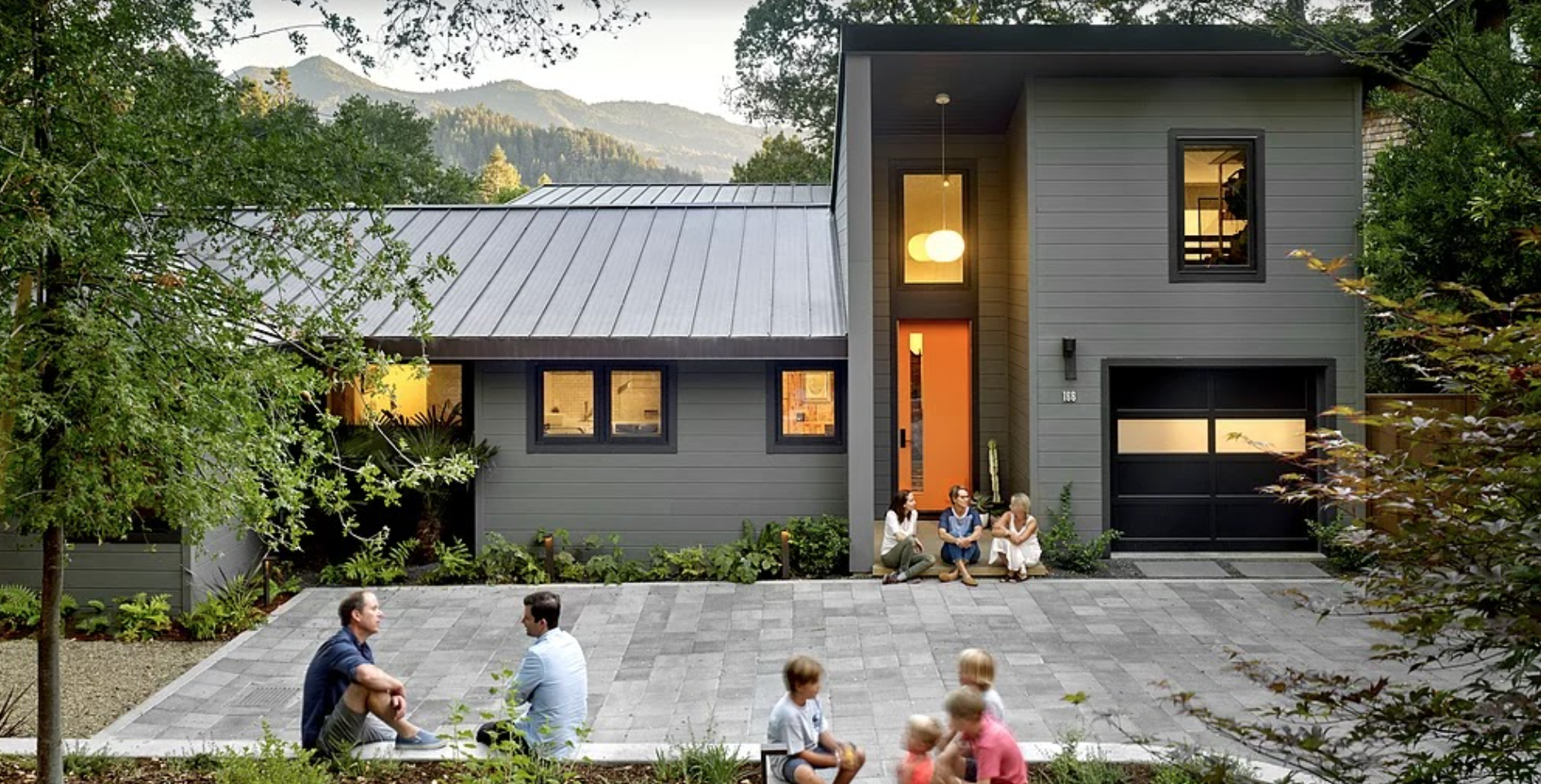
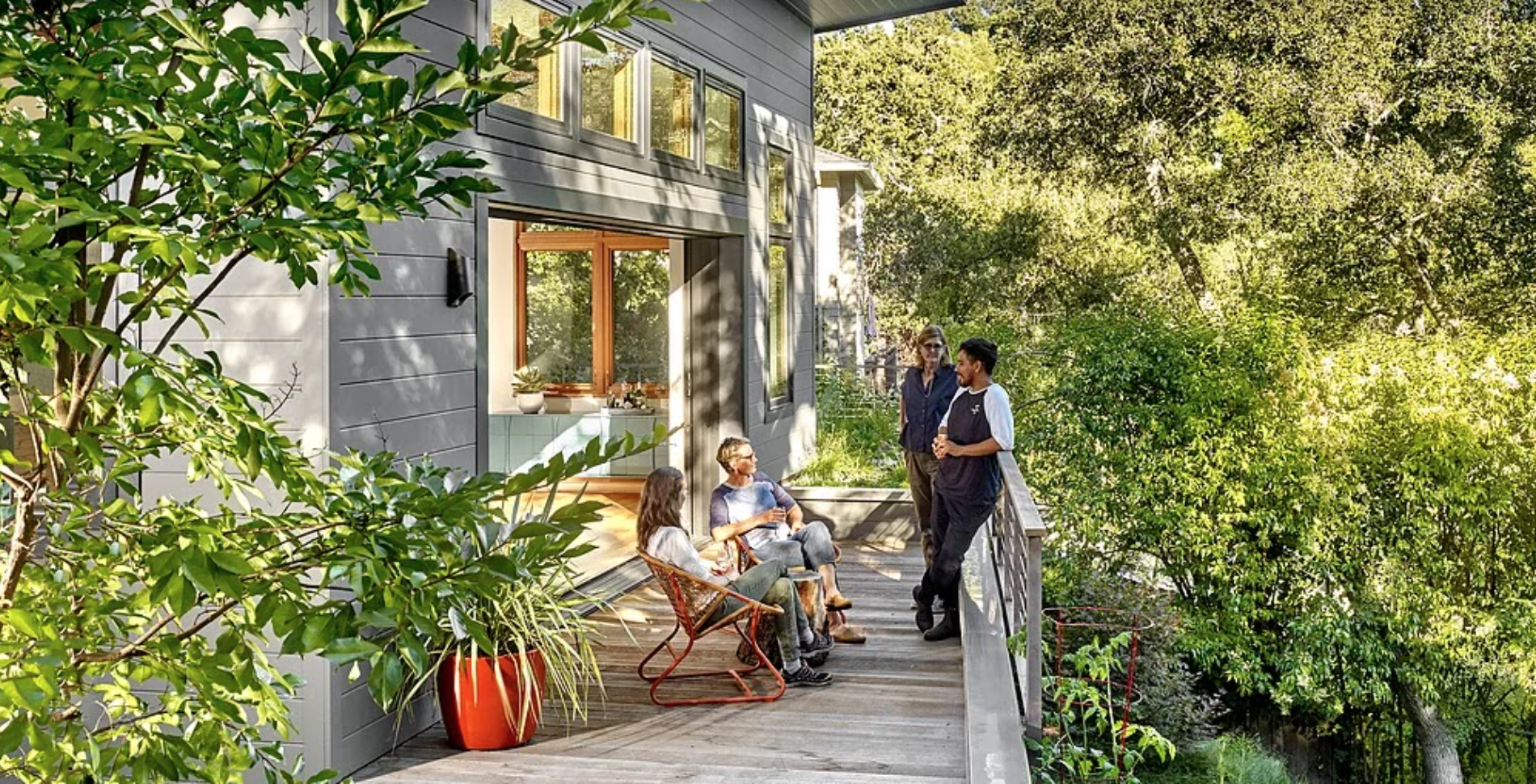
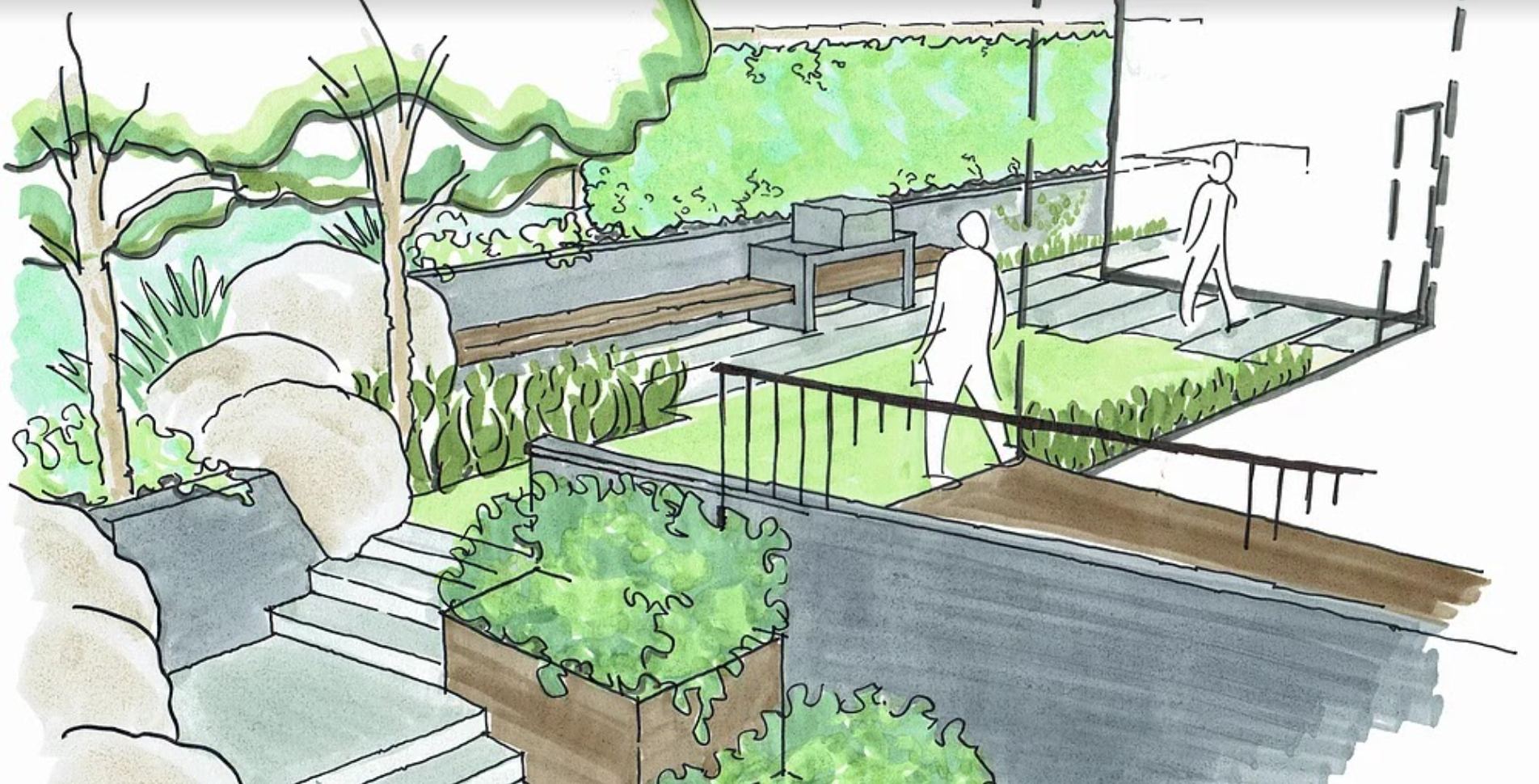
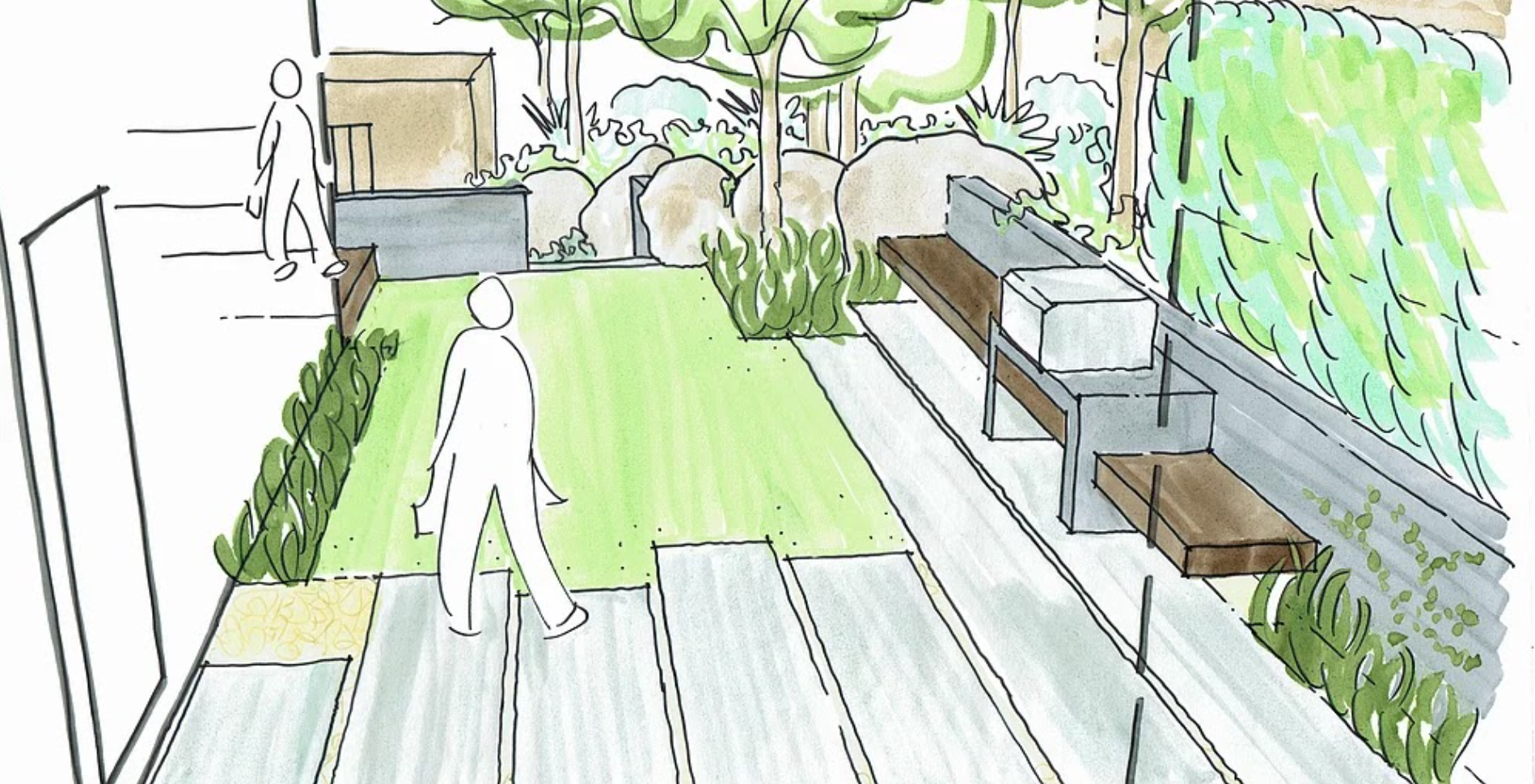
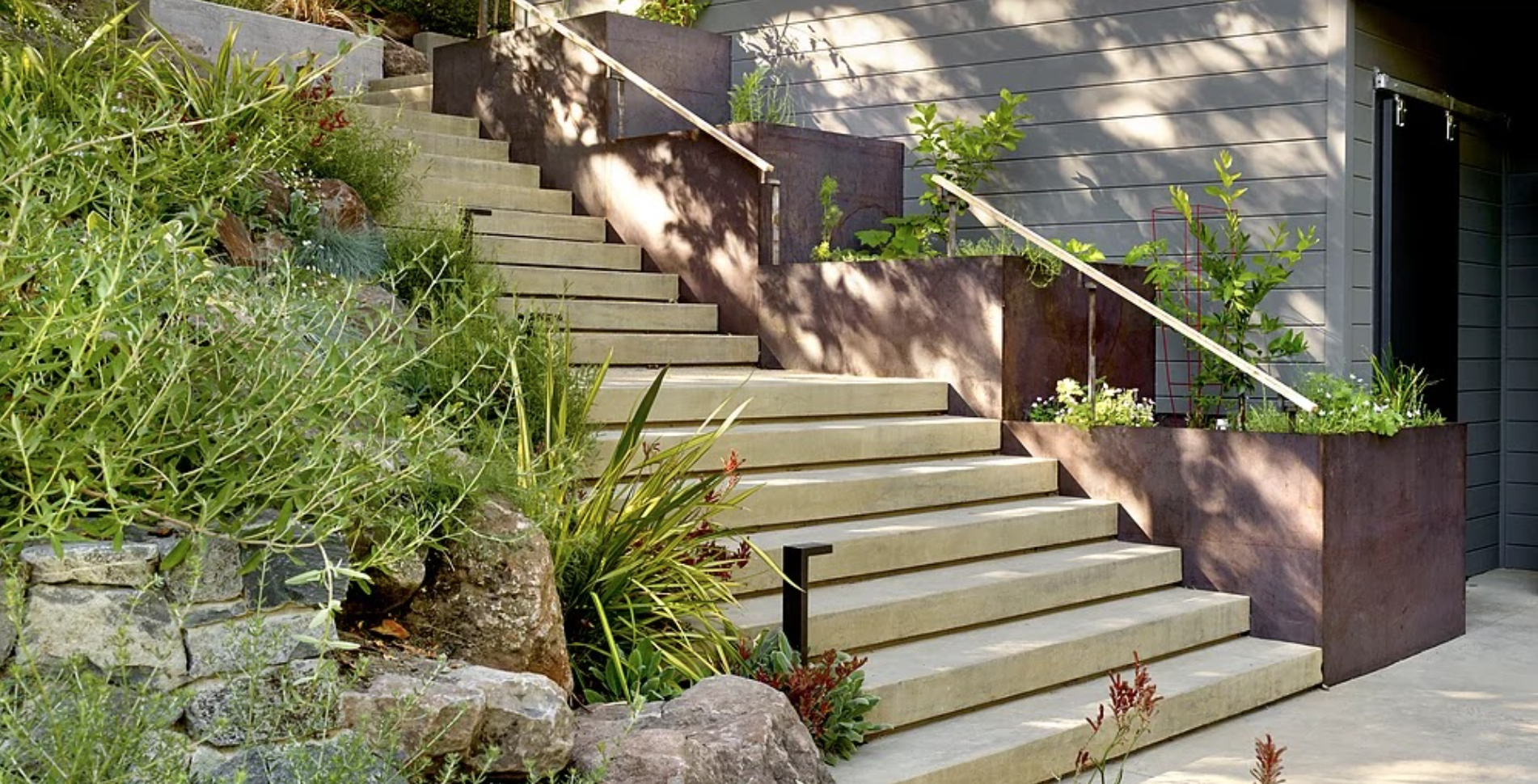

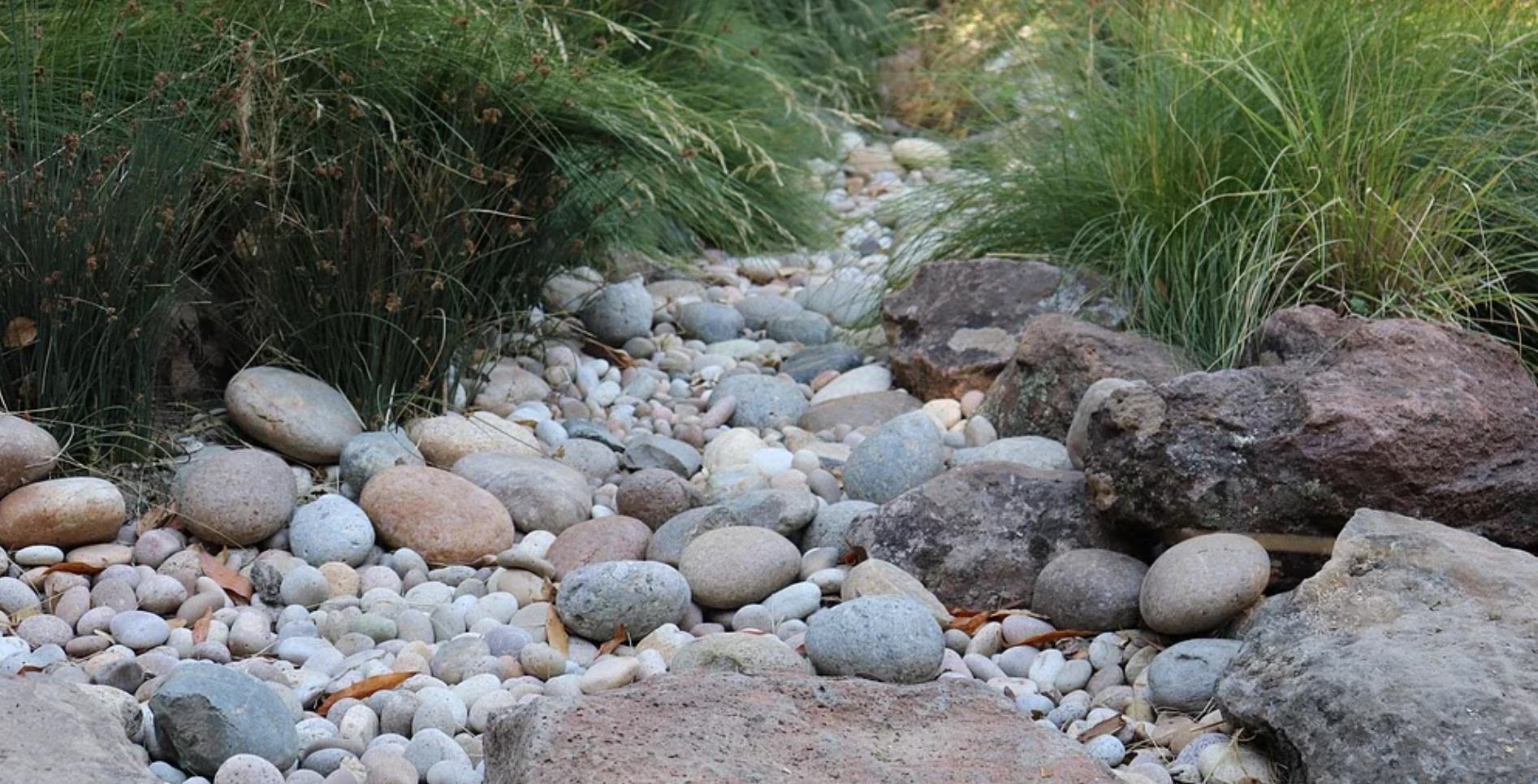

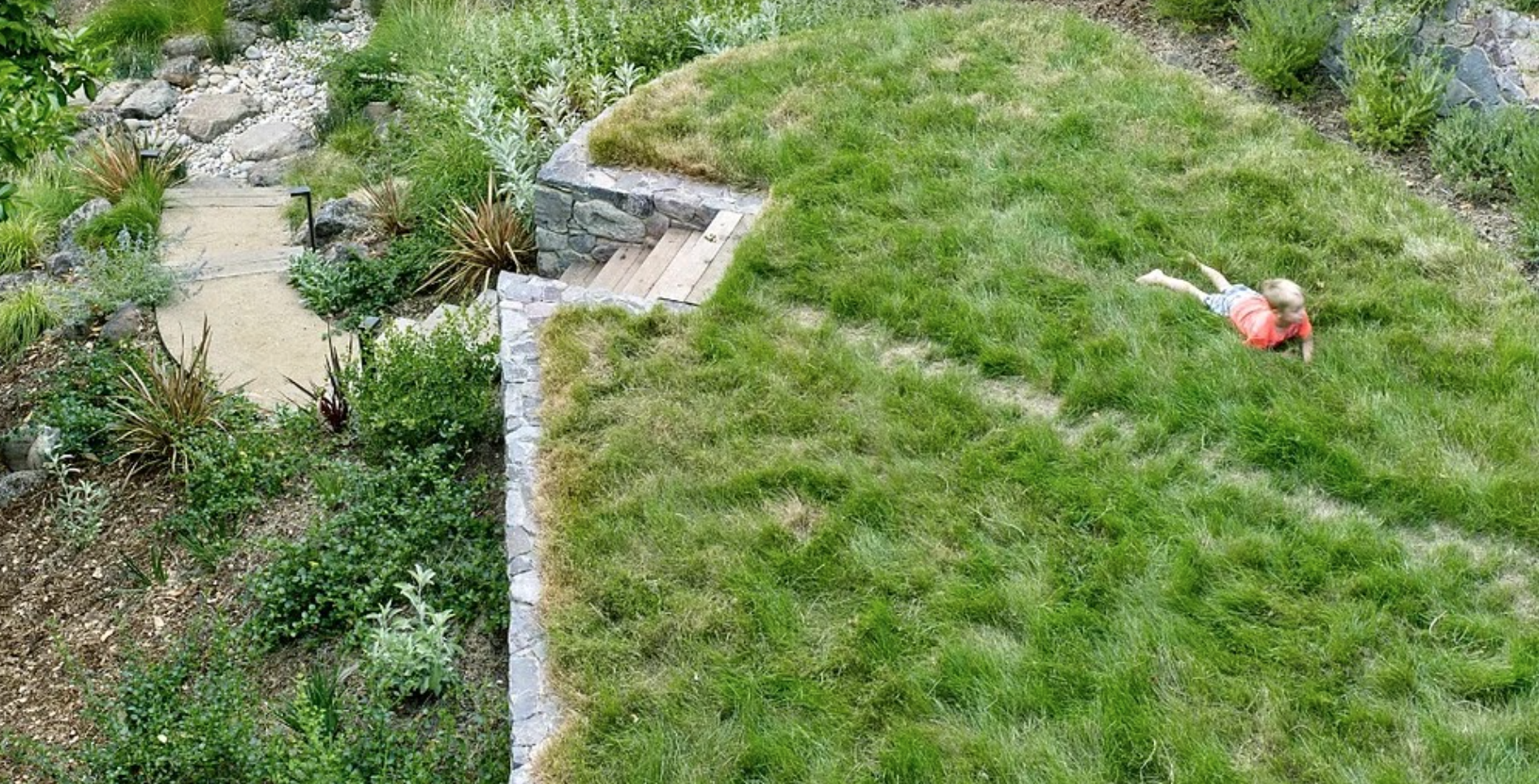
WITH:
Architect: Studio BBA
Planting Design: Annabelle Reber
Civil Engineer: Pope Engineering
Photos by Cesar Rubio Photography.
by Eileen Kelly
Dig Your Garden Landscape Design
San Anselmo, CA
Hillside Sanctuary in San Anselmo
This vast hillside landscape, situated on a hillside in San Anselmo, Northern California, has been evolving for several years, and is the personal sanctuary of Landscape Designer Eileen Kelly, owner of Dig Your Garden Landscape Design. This sustainable, dry garden also serves as Eileen's "living laboratory" where she observes and learns from the habits, tolerances and growth of her extensive selection of plants. They include hundreds of varieties of low water, low maintenance and pollinator plants. Some appropriately nestled amongst the majestic oak trees, others that thrive in the sunny spots, and others in shadier locations. The plant palette ranges from California natives to plants from other Mediterranean regions such as South Africa and Australia. Besides this extensive variety, Eileen's collection of low-water and fire-resistant succulents has flourished extensively over the years - they are her favorites. The garden also includes a few exotics from Hawaii and other regions. Several patios and sitting areas have been incorporated throughout the landscape at different levels, positioned to enjoy the natural setting and the lovely views both near and far.
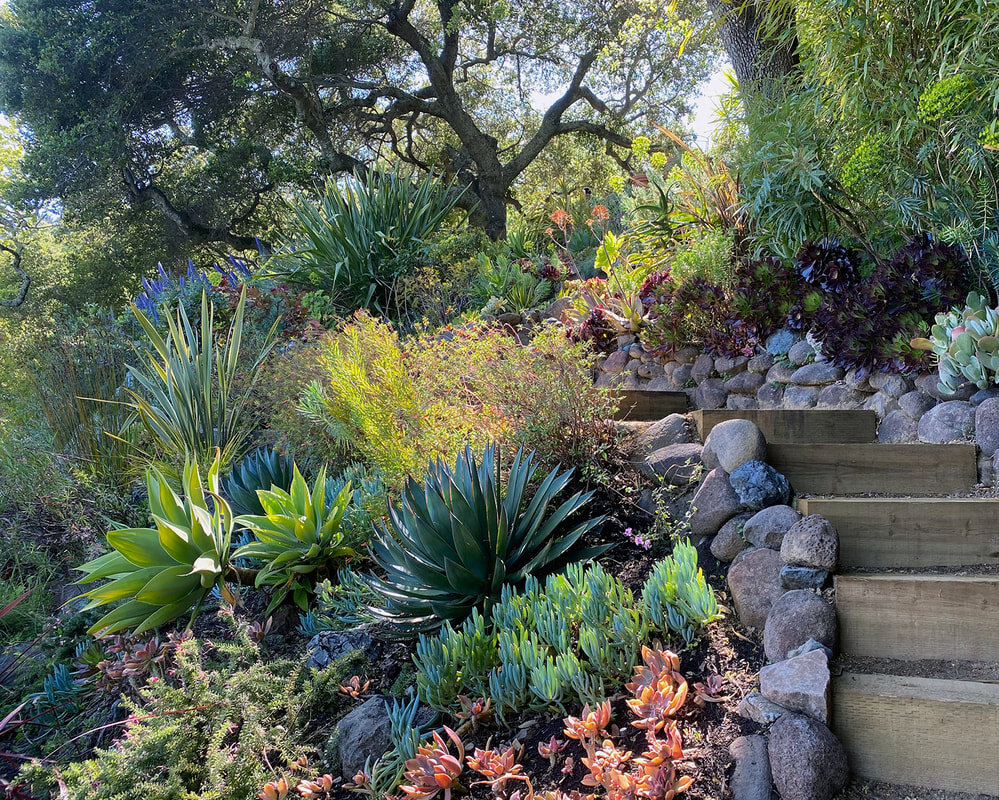
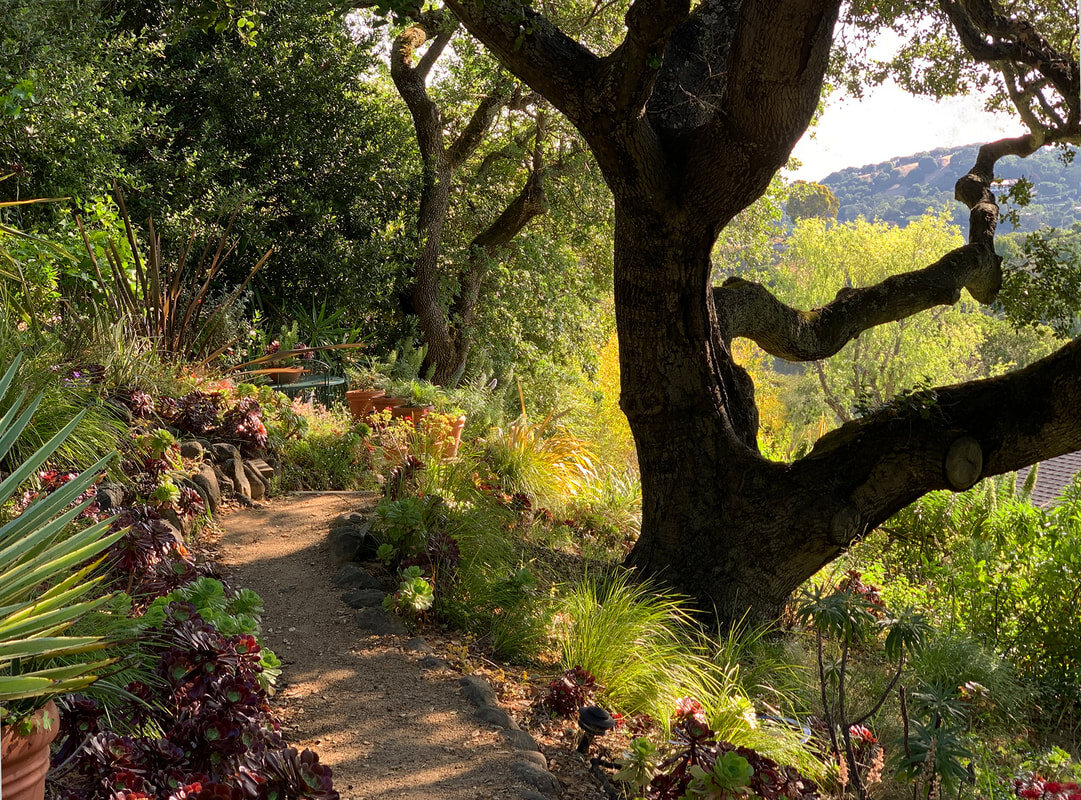
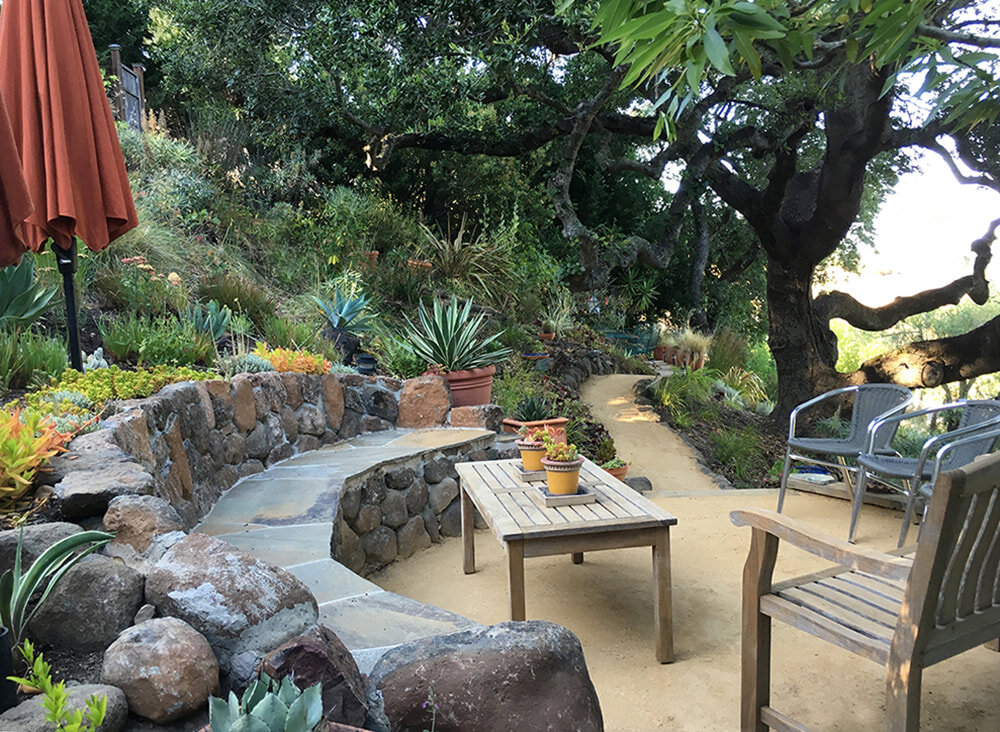
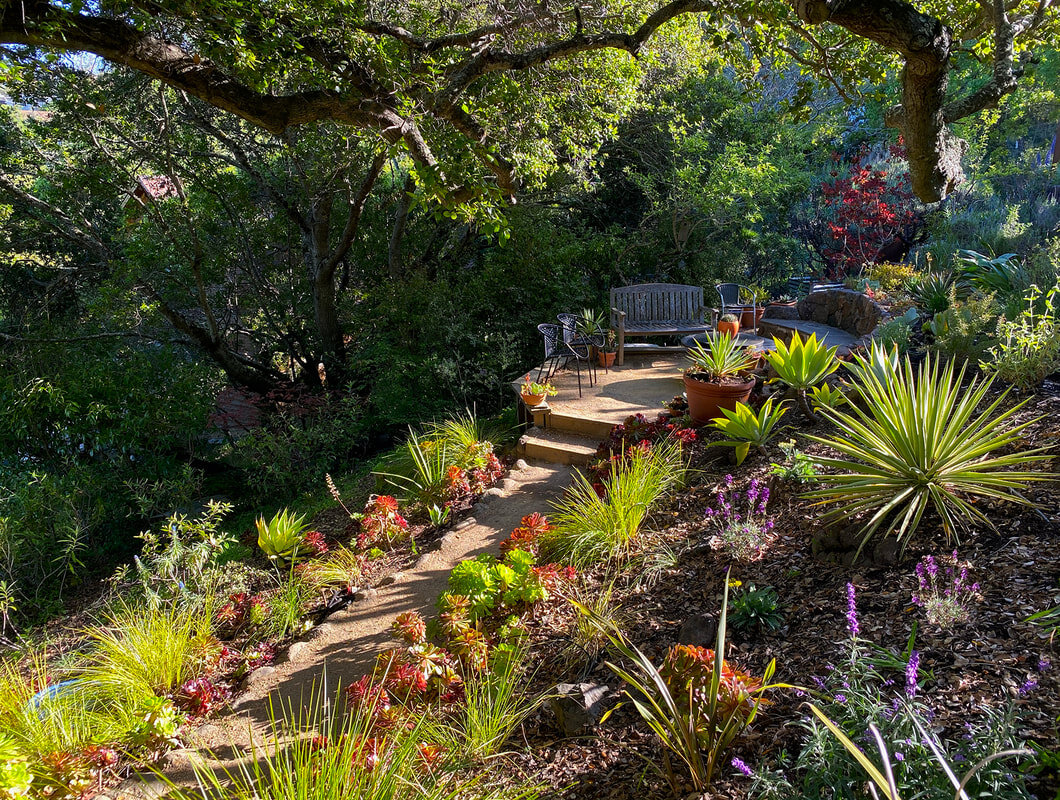
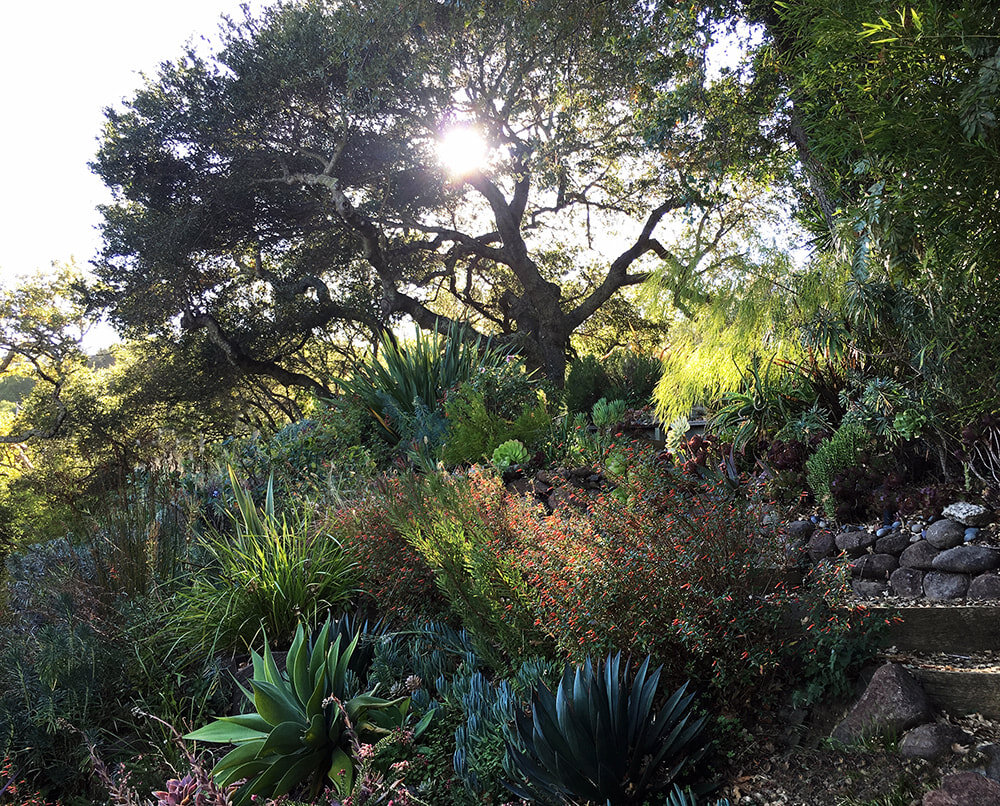
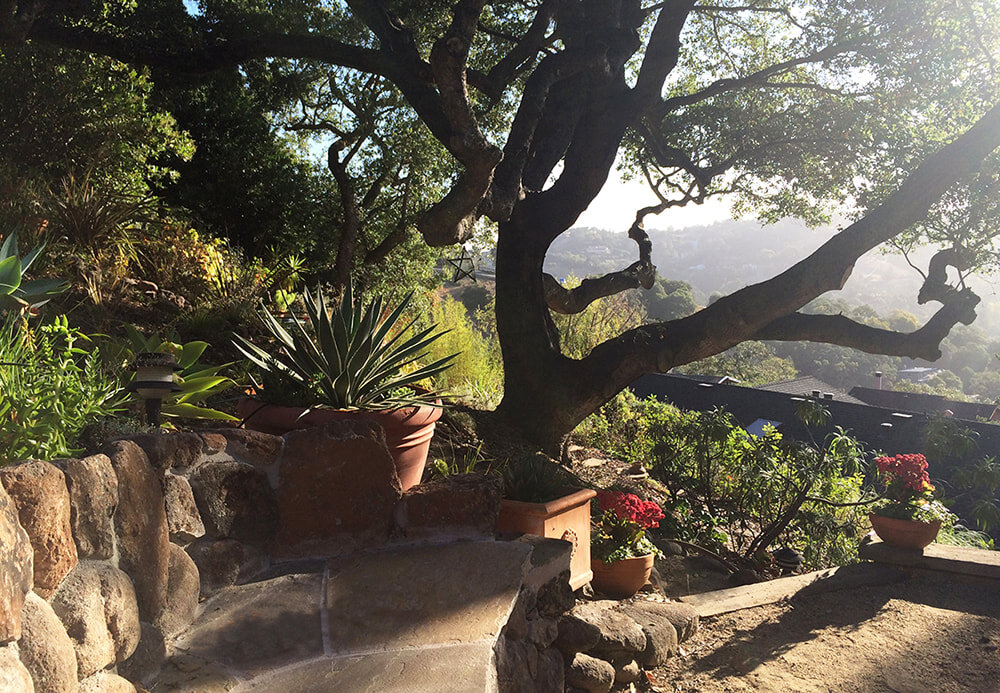

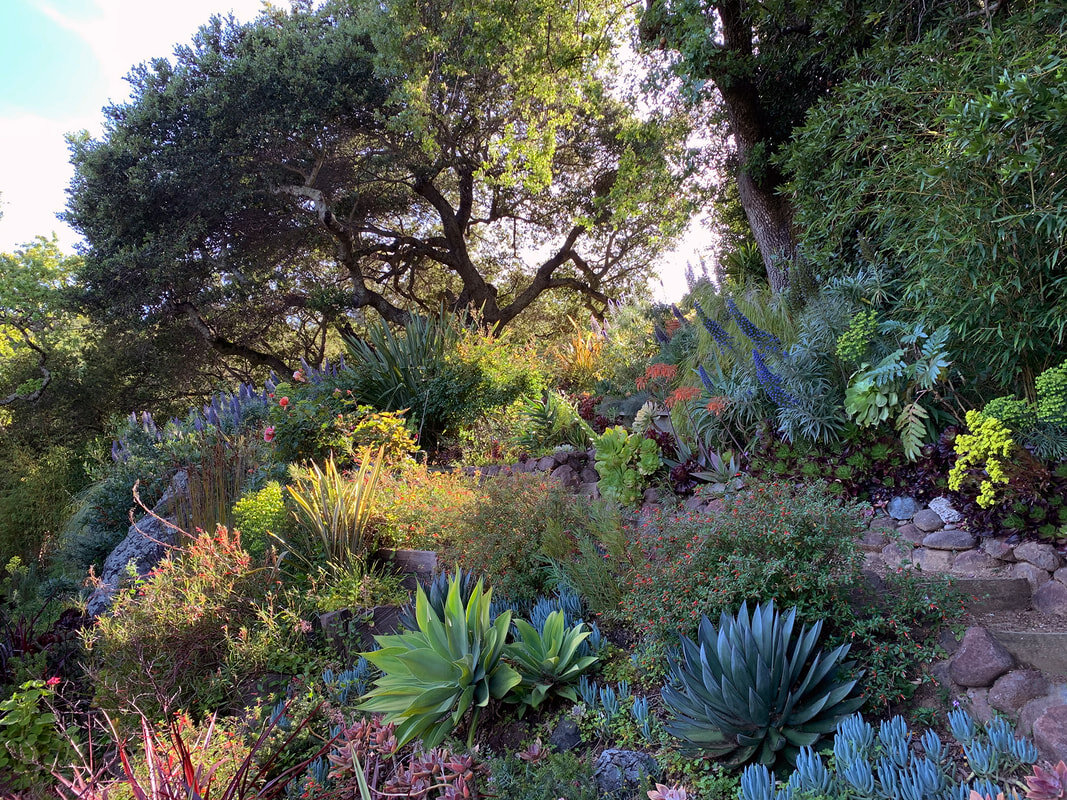
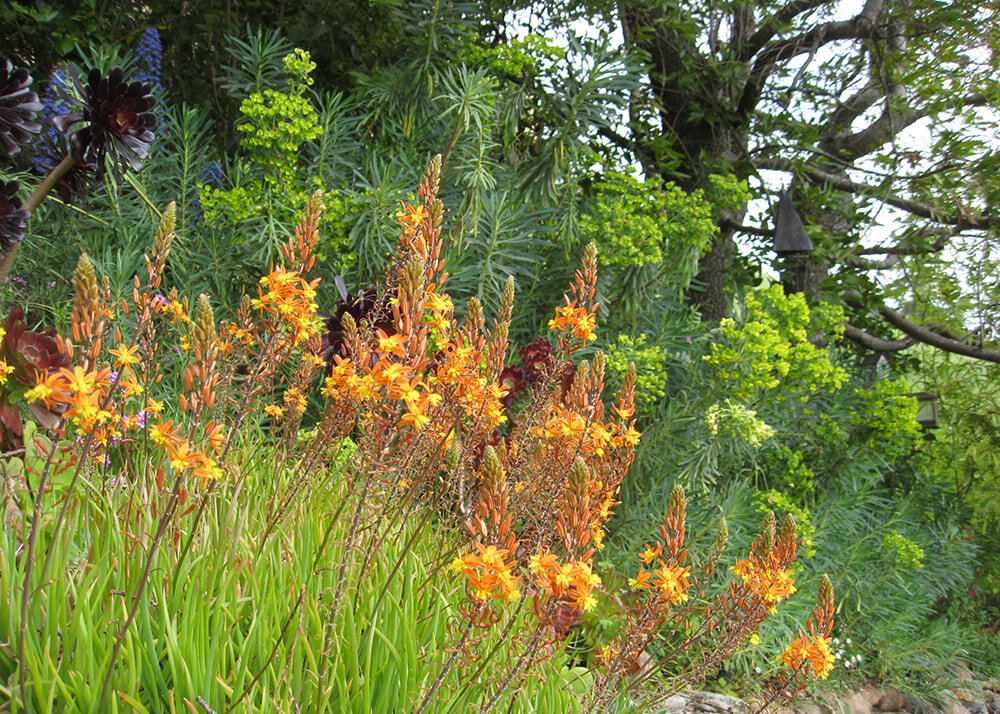
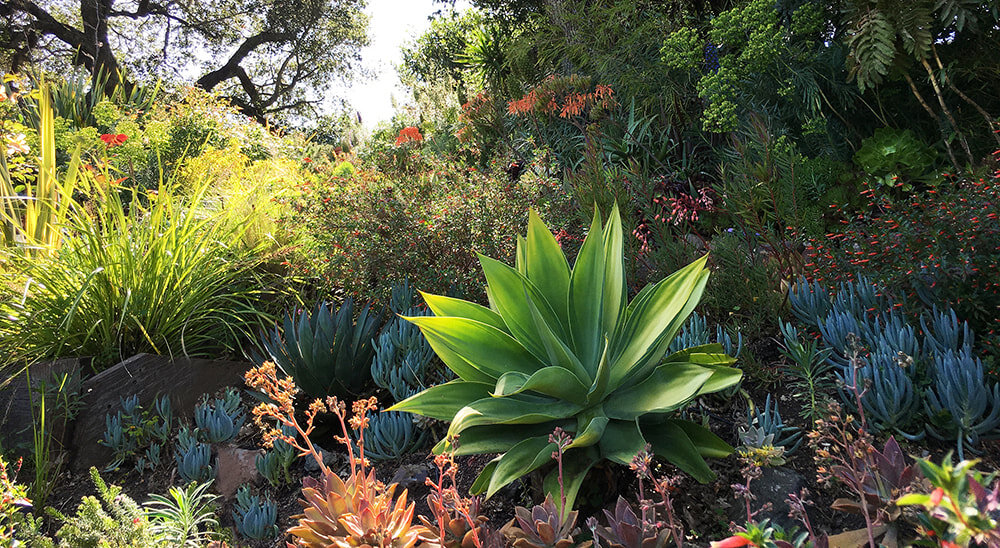
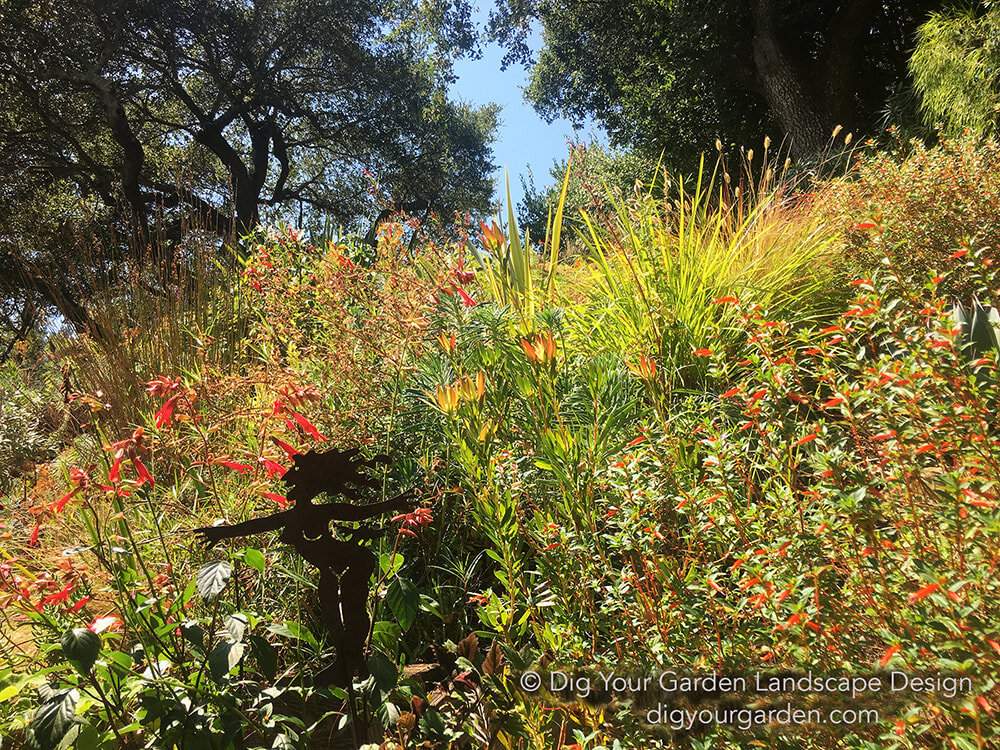
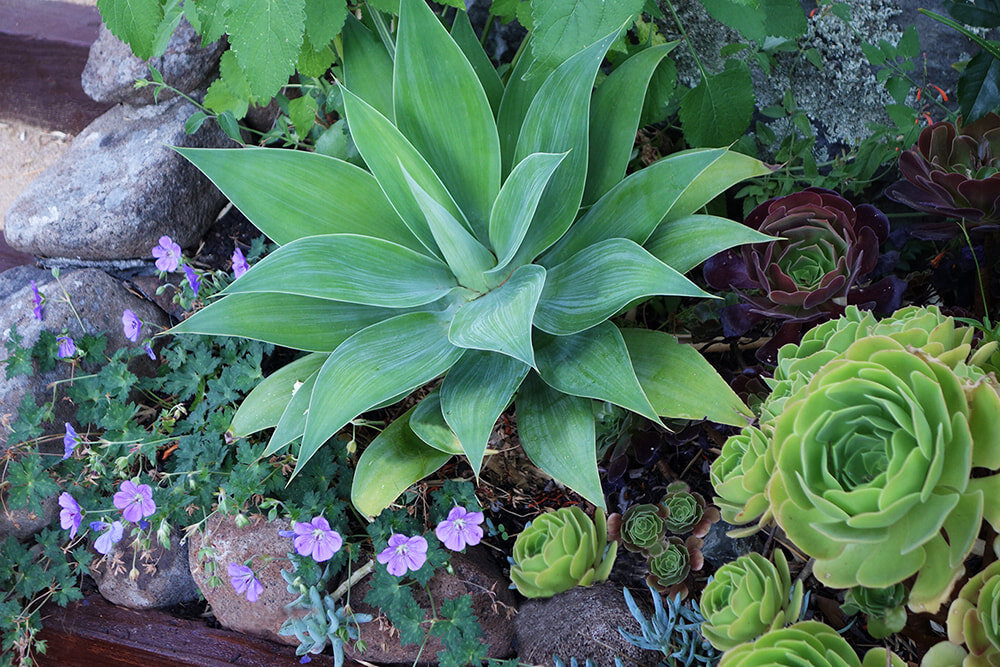
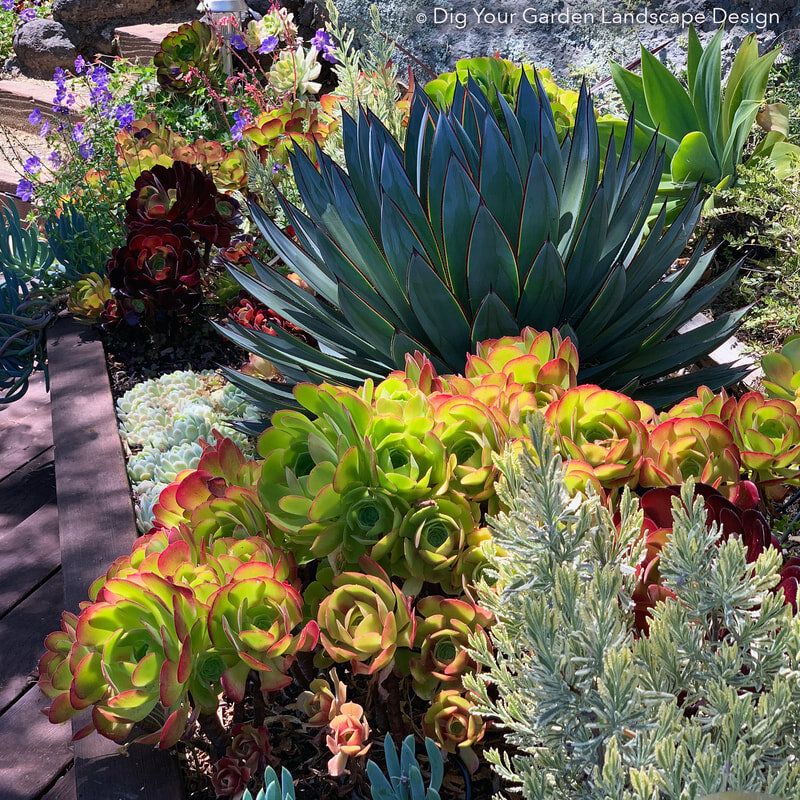
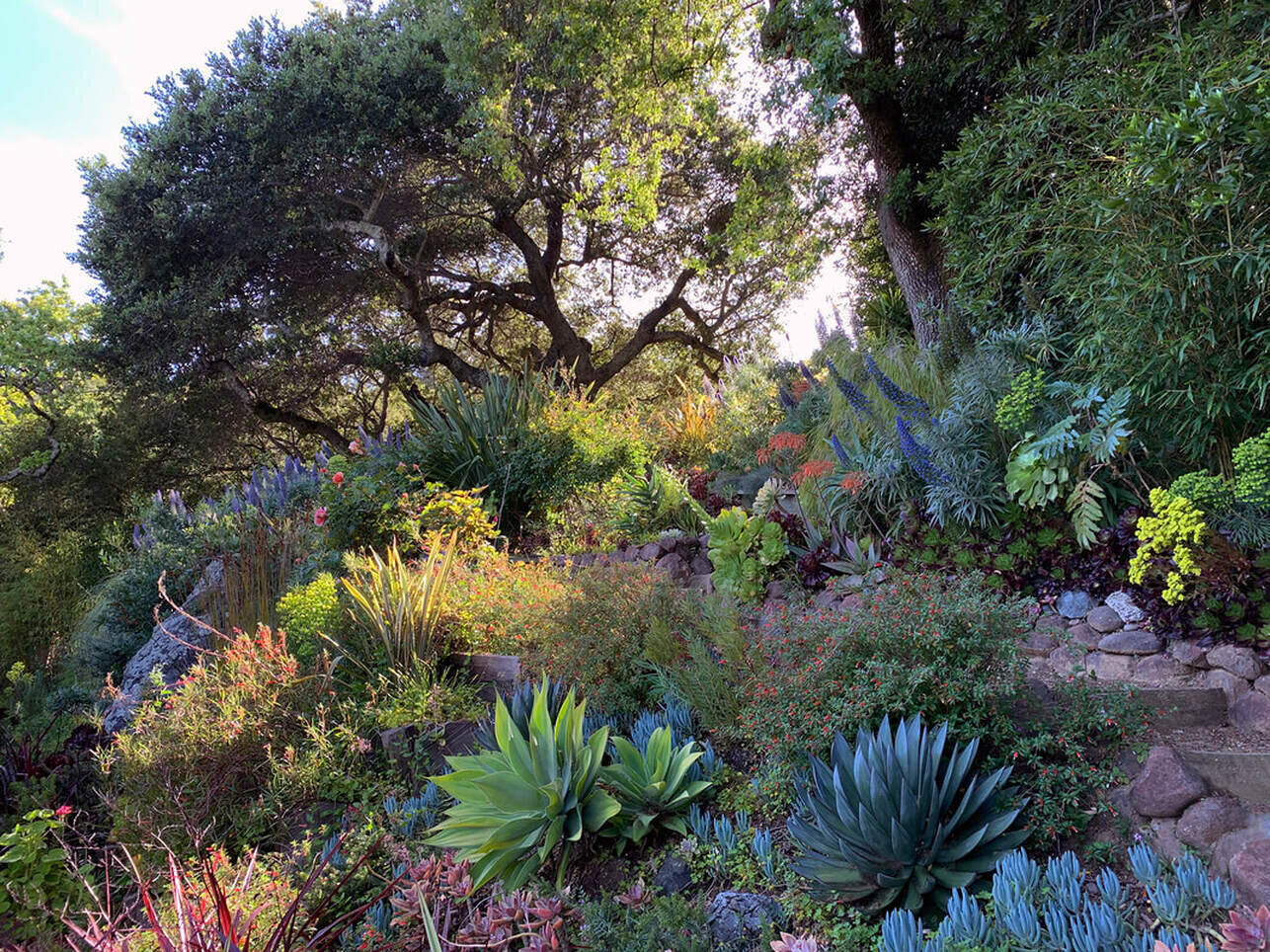
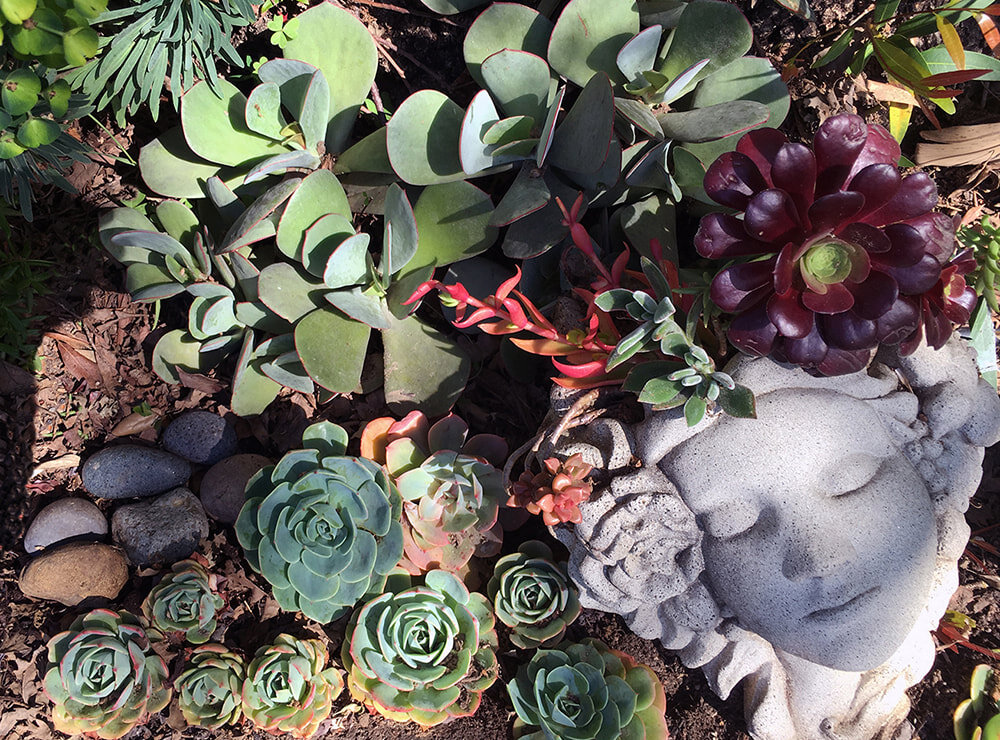
Design Details:
Stairways, pathways and patio areas throughout the landscape offer places to pause or linger to take in the natural surroundings and views both up close and in the distance.
Diverse plant varieties, including CA natives, succulents and plants from other Mediterranean regions offer an abundance of pollinator plants, biodiversity and ecosystem for the birds, the bees and the butterflies.
Retaining walls constructed with Sonoma fieldstone, patios, decking and a variety of seating areas with bluestone and other natural materials.
Decomposed granite (DG) and flagstone incorporated in the pathways and patio areas.
Drip irrigation with a Smart Controller to efficiently monitor water uses and water conservation. Several plans, especially the succulents that have been established have been removed from the irrigation system, and watered manually, occasionally during the summer months.
Eichler Update in Lucas Valley (also by Eileen Kelly)
The front and back areas surrounding this Eichler home were updated with the mid-century modern aesthetic in mind. The front landscape updates include a series of concrete walls and minimalist plant design with a massing of barrel cactus, artichoke agaves, upright thatching reeds a Blue Palm (Brahea 'Clara'), Mediterranean Fan Palms and other easy-care plants. Designed to echo the home's Eichler minimalist design. The dramatic corten steel sculpture screen, designed by artist Jesse Small, offers a striking focal point adjacent to the front doorway. The back landscape updates include modern concrete retaining walls and pathways accented with gravel and pebbles. The stately "Gracie Modern Arbors" offer eye-catching visual appeal and growing support for 3 grape vines along a long pathway ramp. A 4th arbor frames a stairway to the hillside with a flowering Passion Vine. The sloped hillside areas were updated with low-water and low-maintenance plants that include CA natives, other Mediterranean plants and several succulents. The narrow switch-back pathway maneuvers through the hillside and is edged with stacked stone.
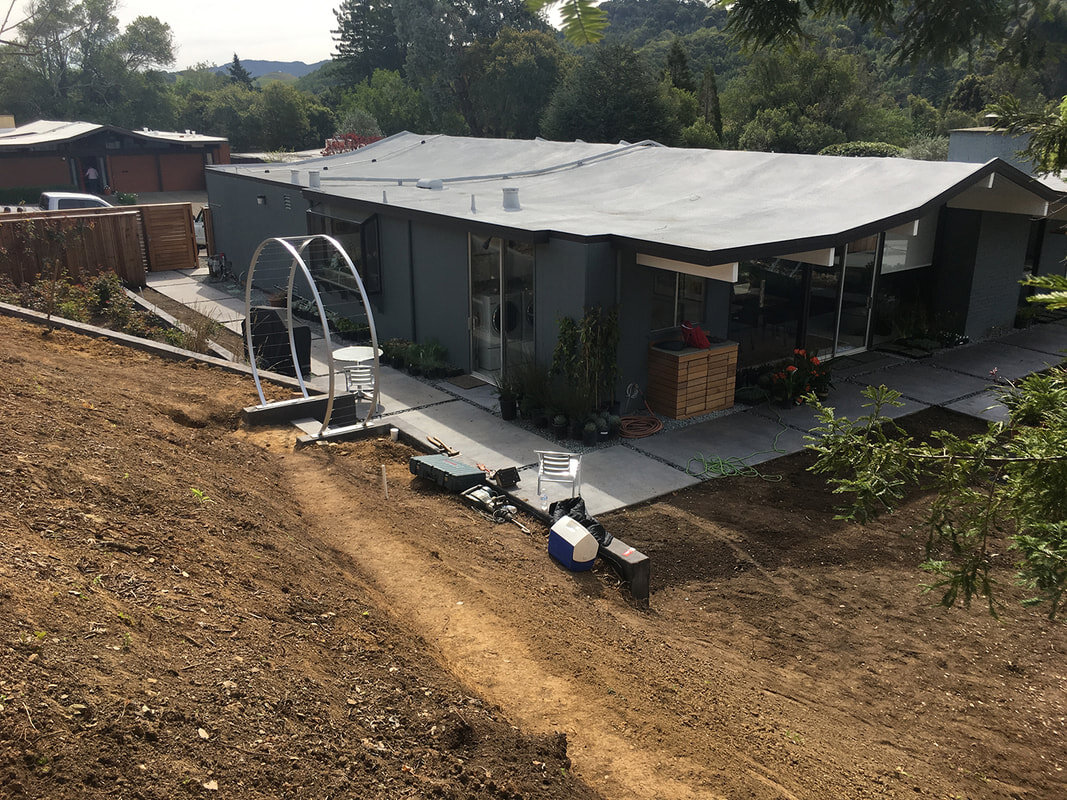
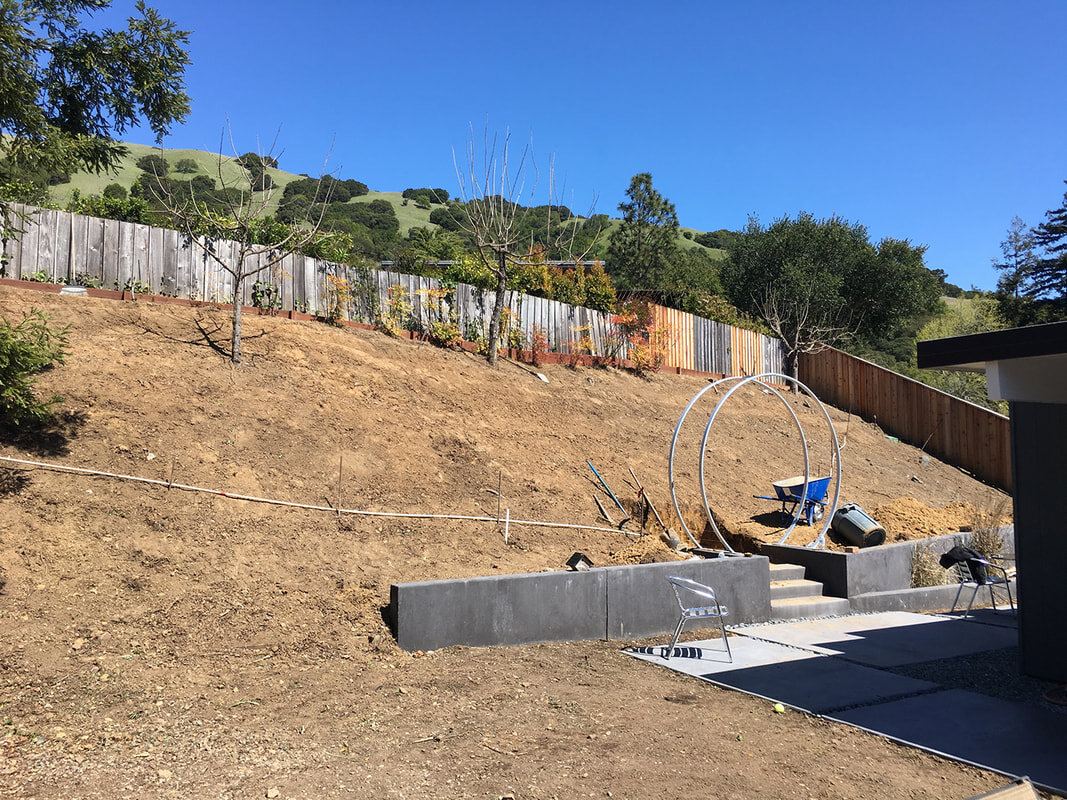
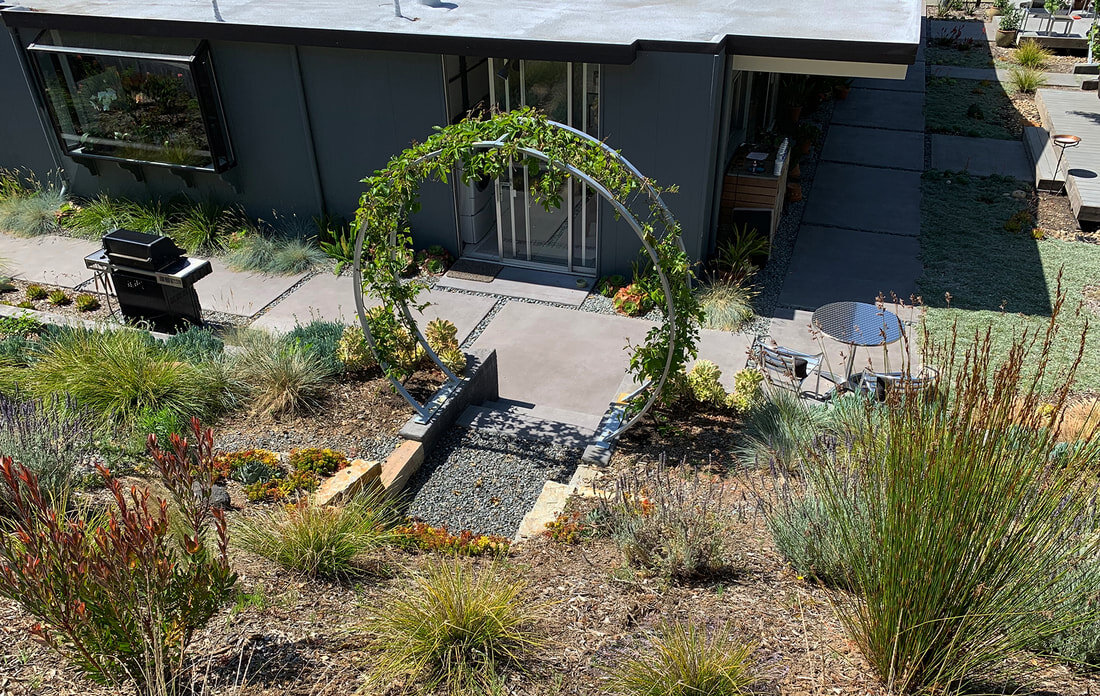
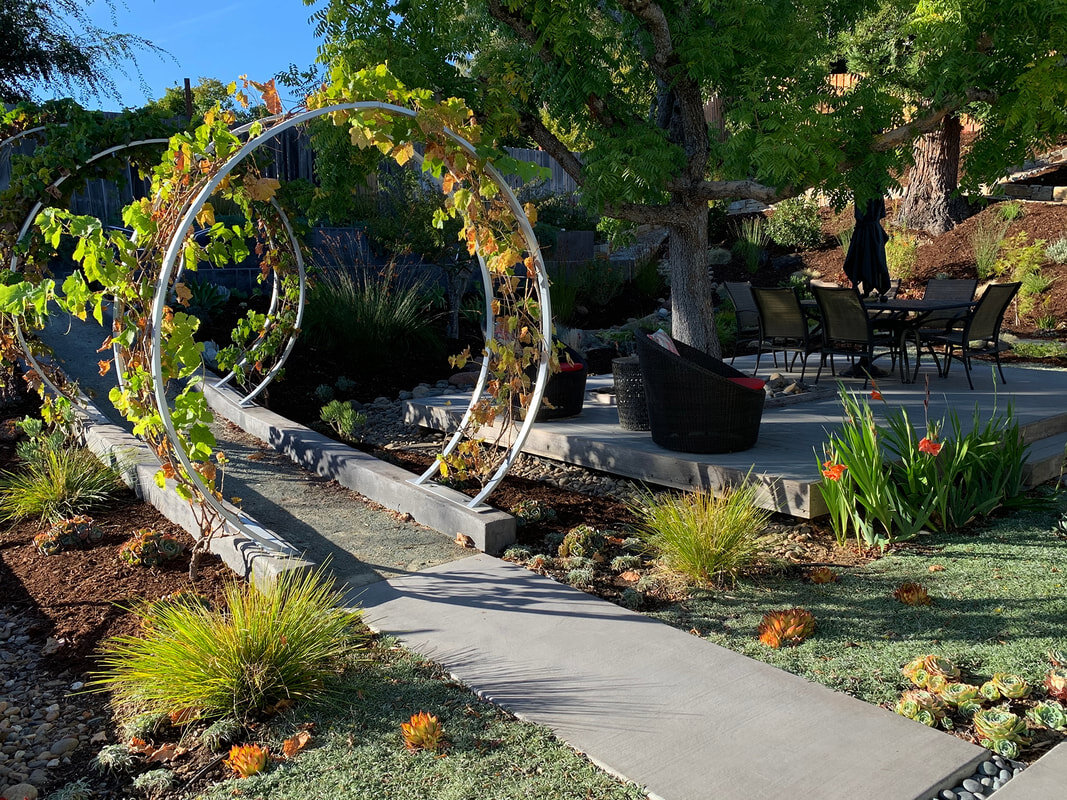
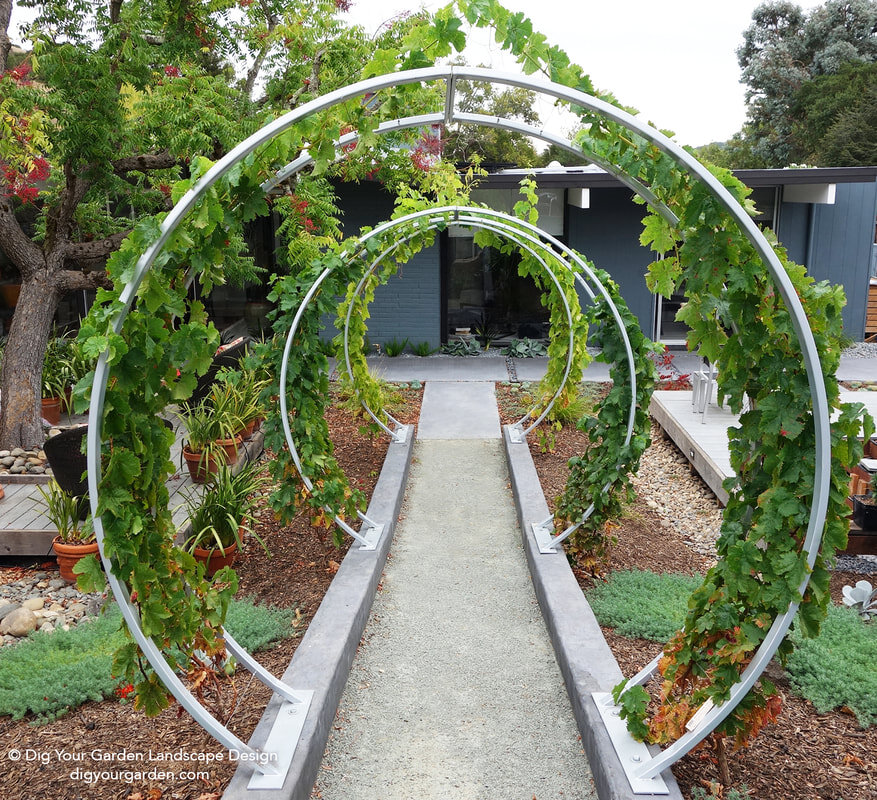
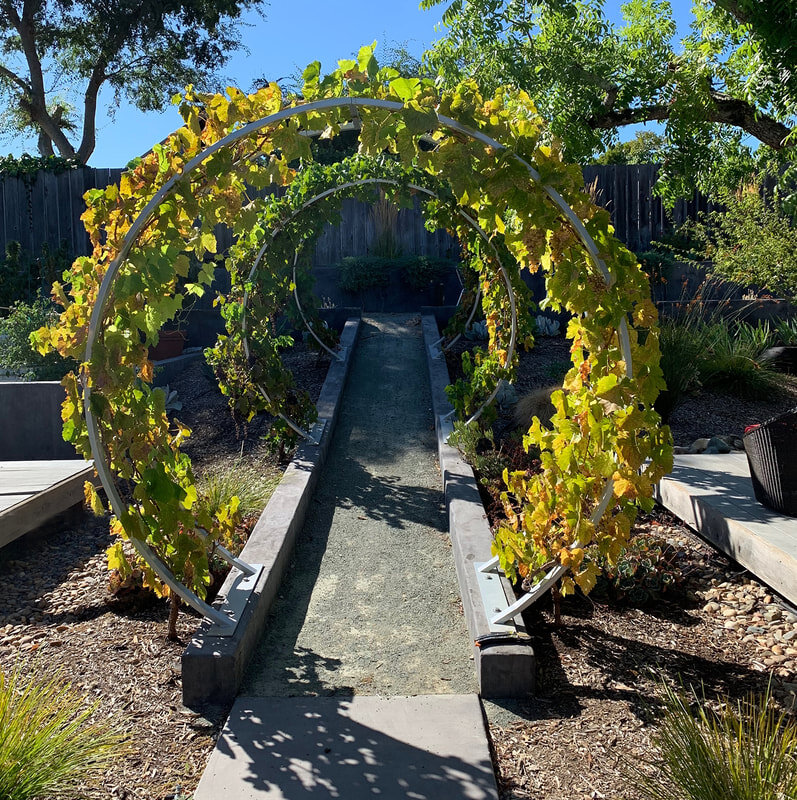
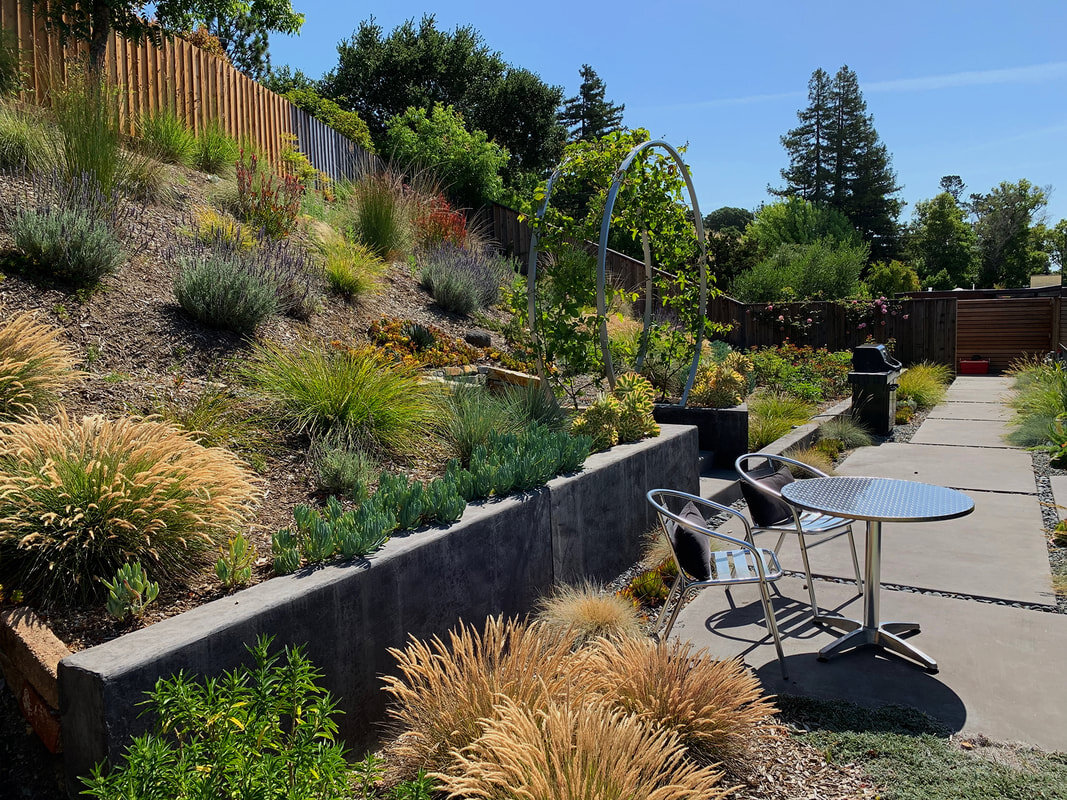
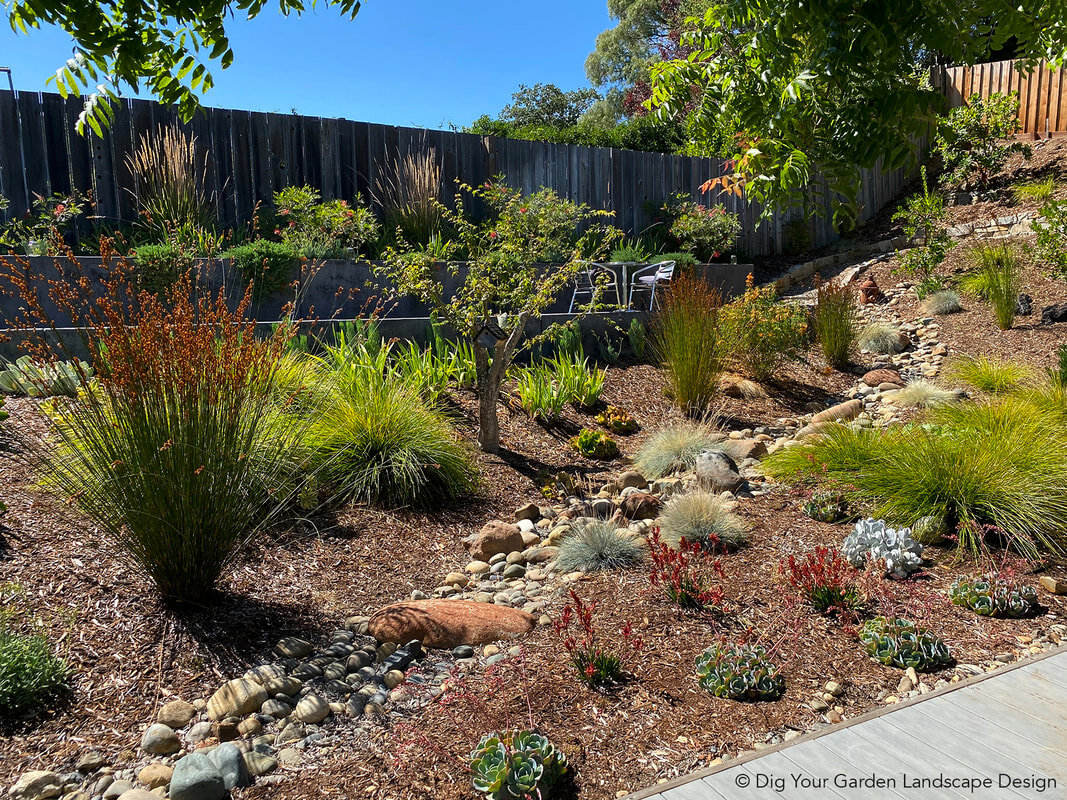

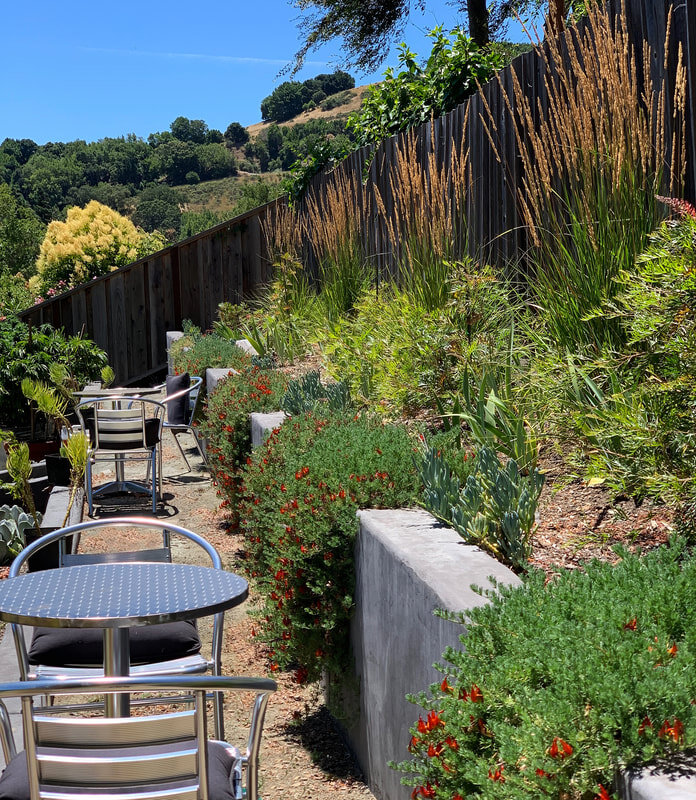
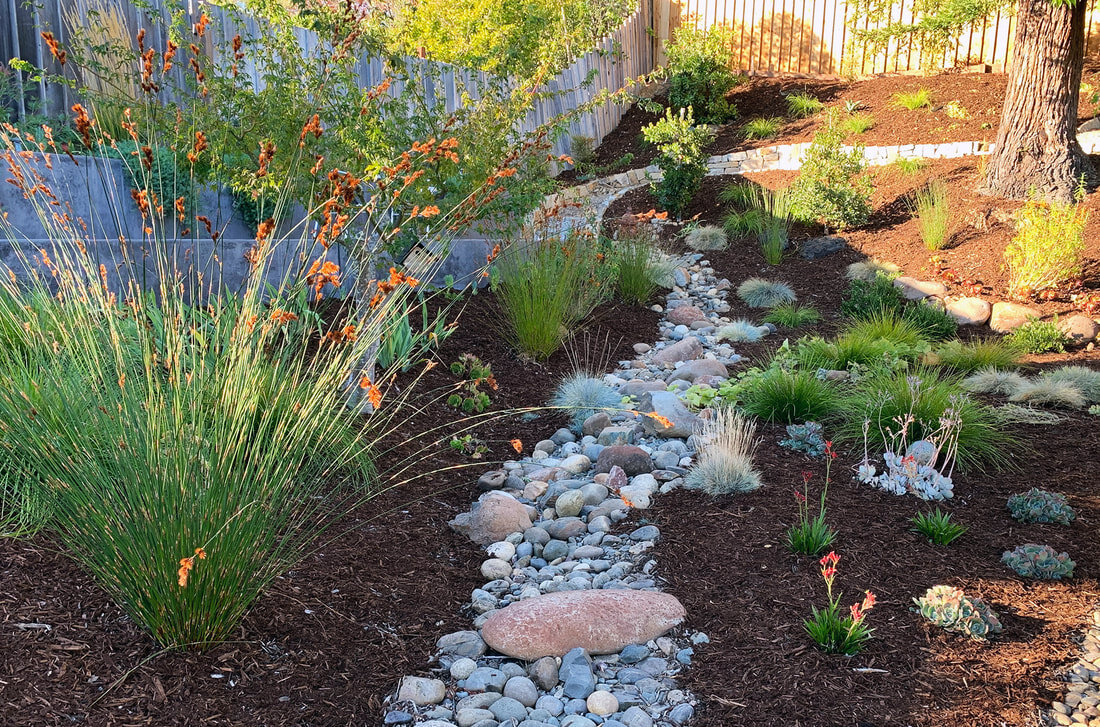
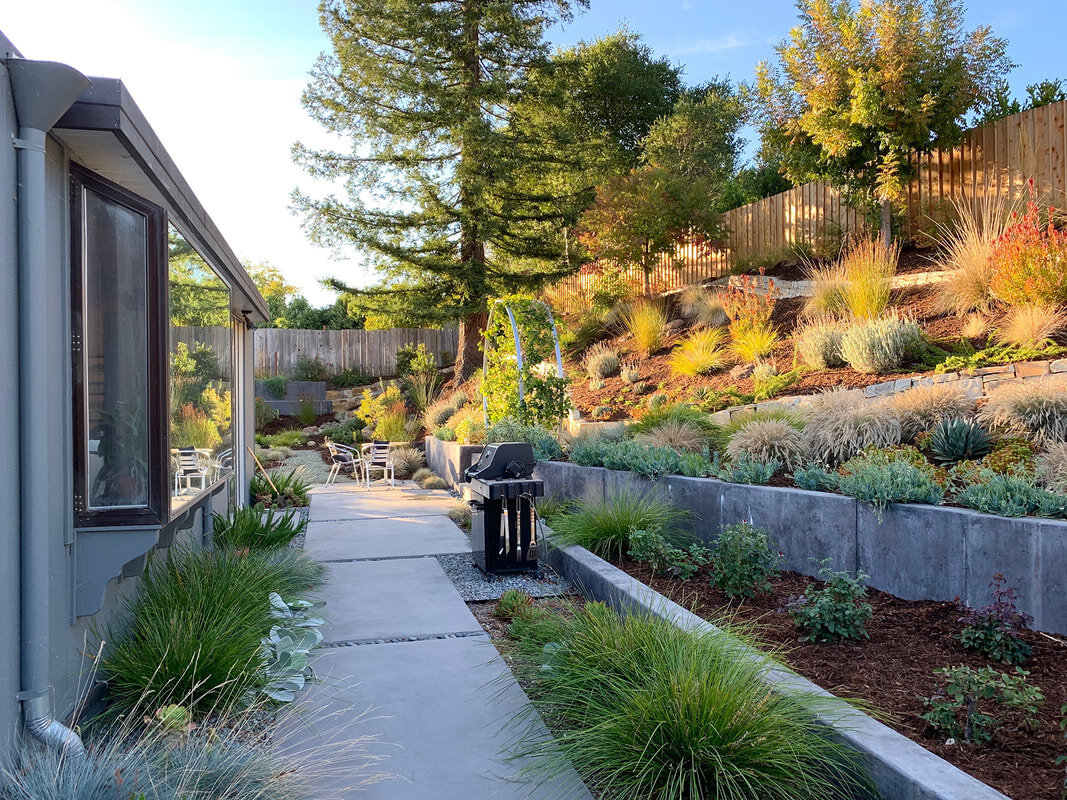
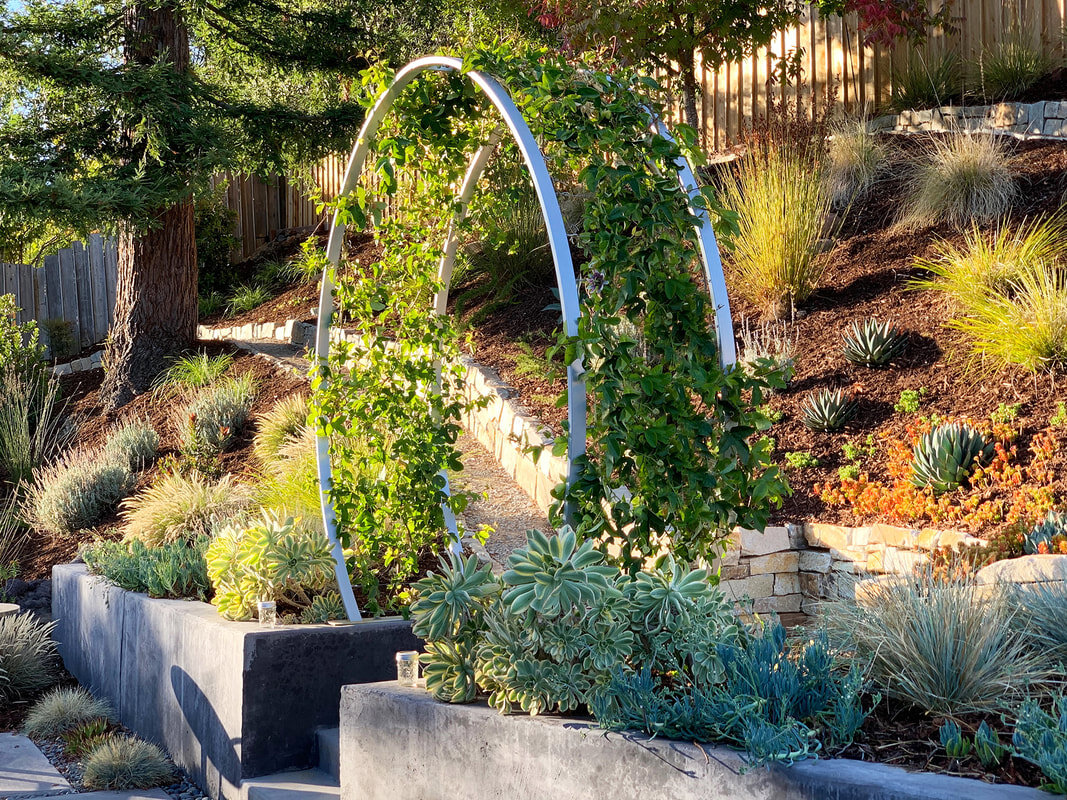
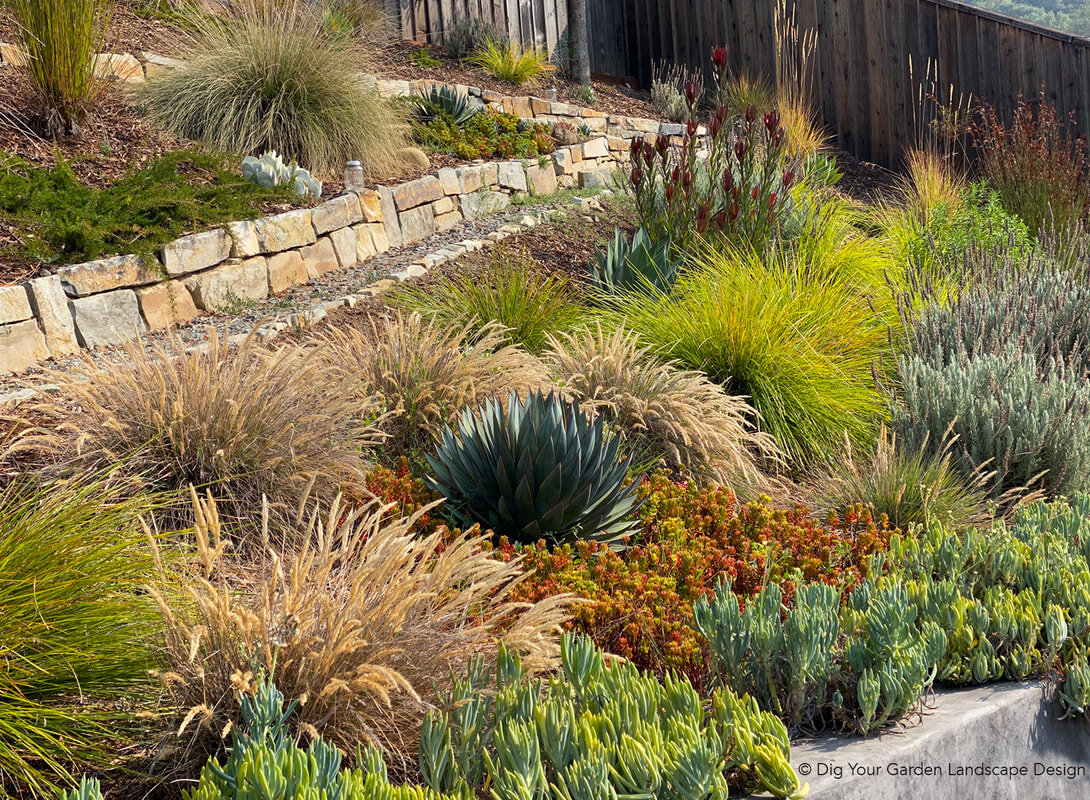
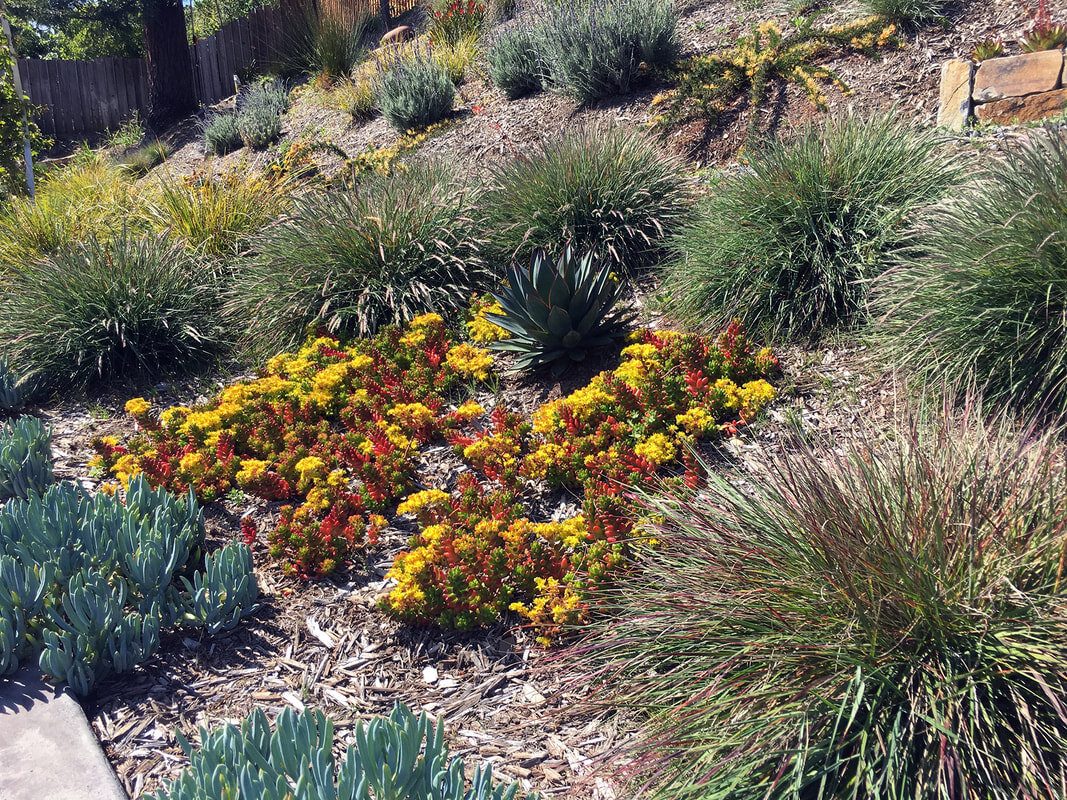
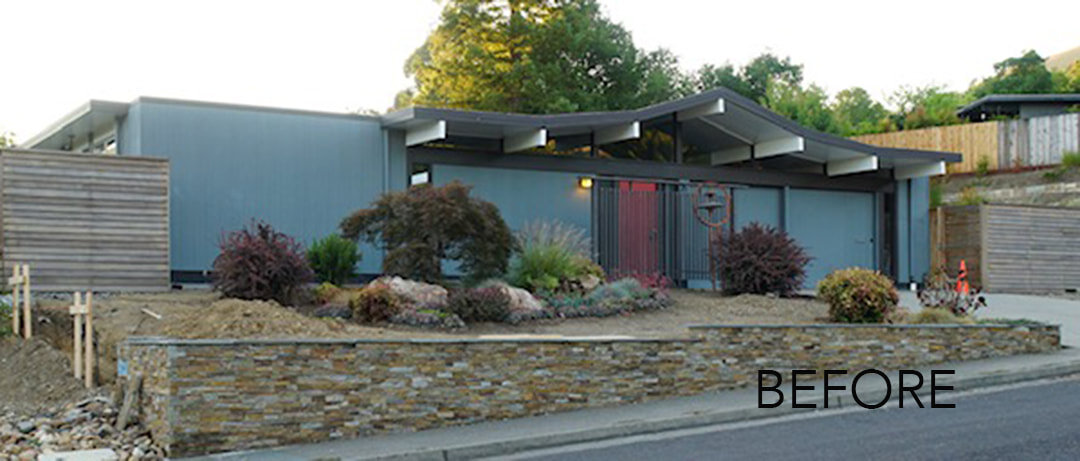
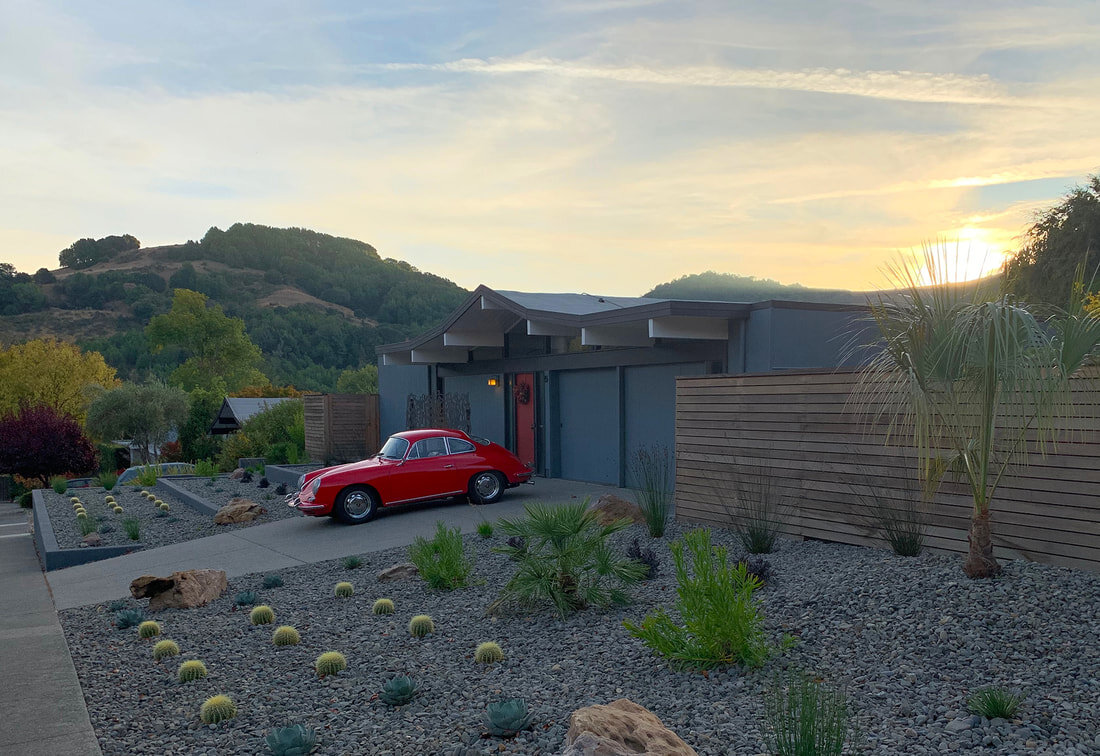
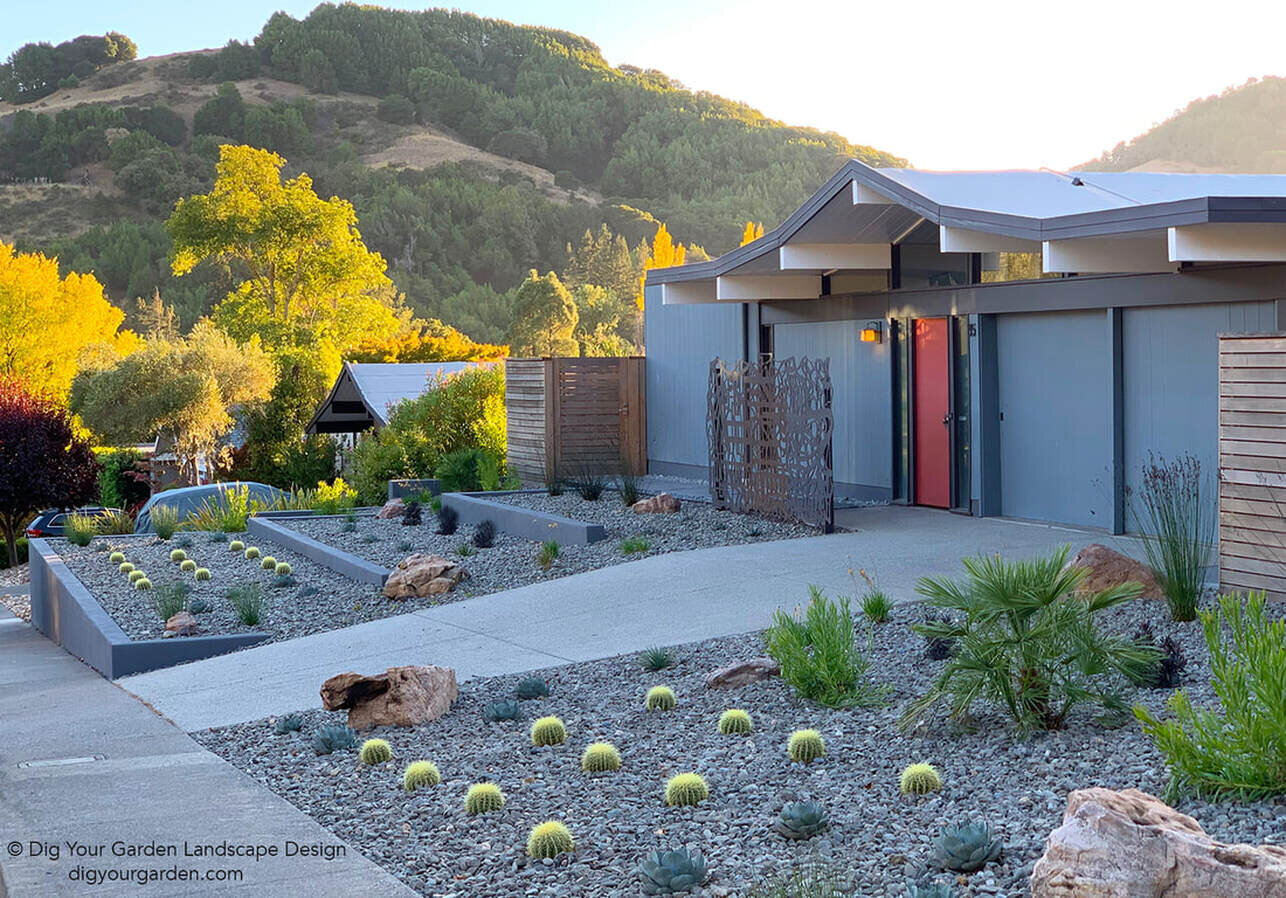

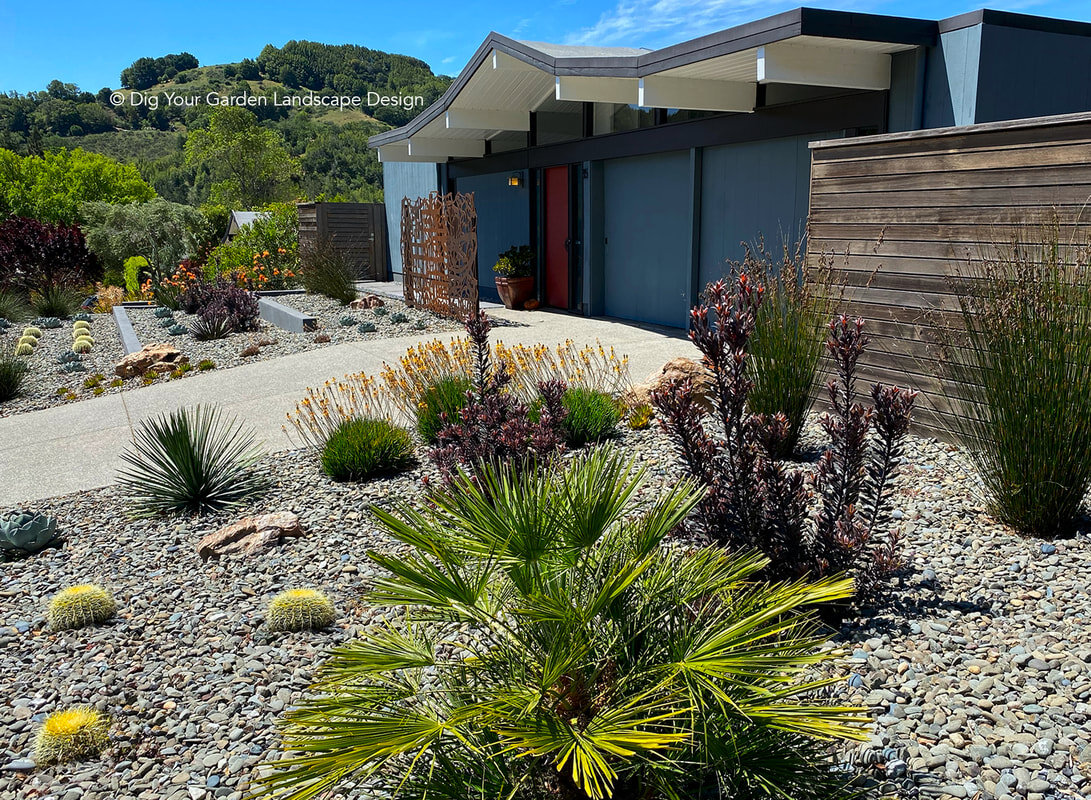
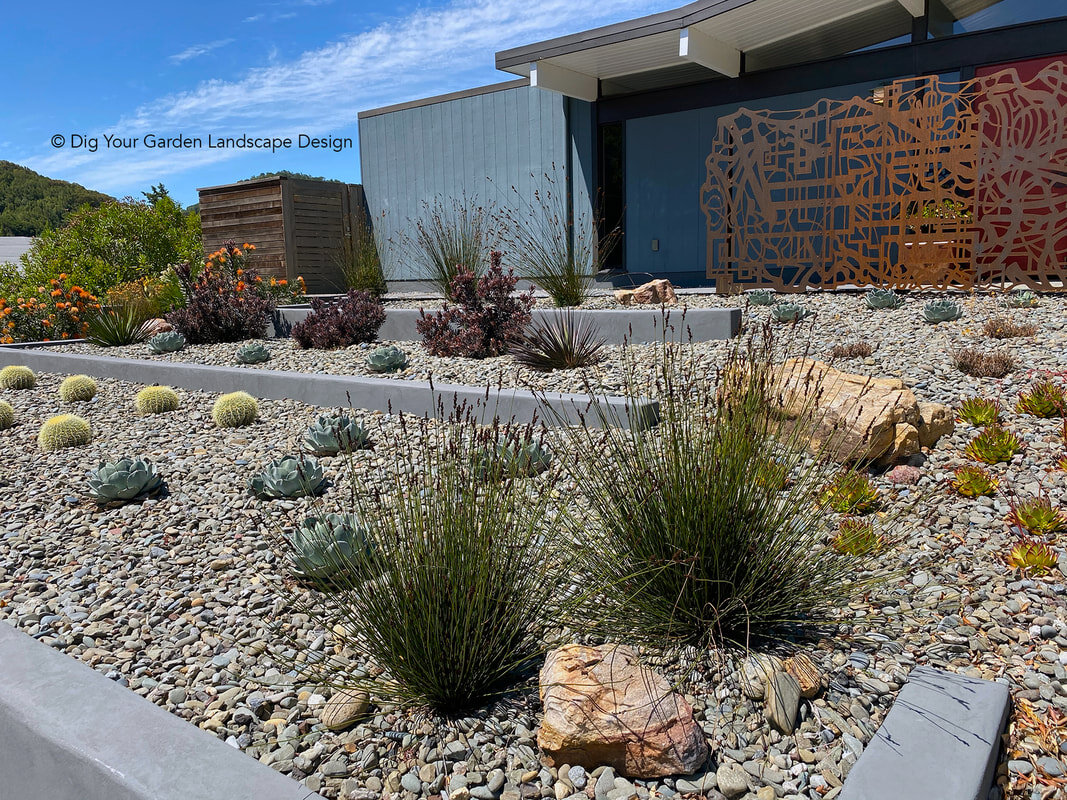
Design Details:
Modern concrete retaining walls and pathways compliment the home's Eichler, mid-century modern design.
The front landscape updated with an artful Corten Steel sculpture screen, modern retaining walls and fire-safe gravel much throughout the garden.
Minimalist modern planting design with architectural succulents, palms and other low water plants echo the mid-century modern design aesthetic for curb appeal and a low-maintenance update.
The back landscape is highlighted by the striking circular "Gracie Modern Arbors" by TerraTrellis offering sculptural focal elements and structures for grape vines and flowering vines.
Community Connections
A REGENERATIVE RELATIONSHIP IN PASADENA
with Studio Petrichor
After our initial education program at Jackie Robinson Community Center with Pasadena Water and Power, we were asked to embark on a series of educational workshops on regenerative practices such as lasagna mulching, hugelkultur, rainwater harvesting, and much more.
Sheldon Reservoir is the first location we were asked to inventory and analyze for the potential use of the regenerative principles and design practices that we live by. Could we optimize local water resources, suggest ways to repurpose green waste, and ultimately harvest water, both actively and passively? Through a series of community workshops, many powerful conversations, and a design plan for the corner of Conniston Road and Arroyo Boulevard, we created the first public hugelkultur berm installations in Pasadena.
With the support of our friends, neighbors of the Reservoir, and community members who wanted to learn something new, we began this project with a series of hands-on workshops in the community. With each successive workshop, the number of participants grew. Our greatest joy comes from hearing that those participants (especially those who didn’t know each other to begin with) are now working together in their own homes and communities to employ the new techniques they have learned.
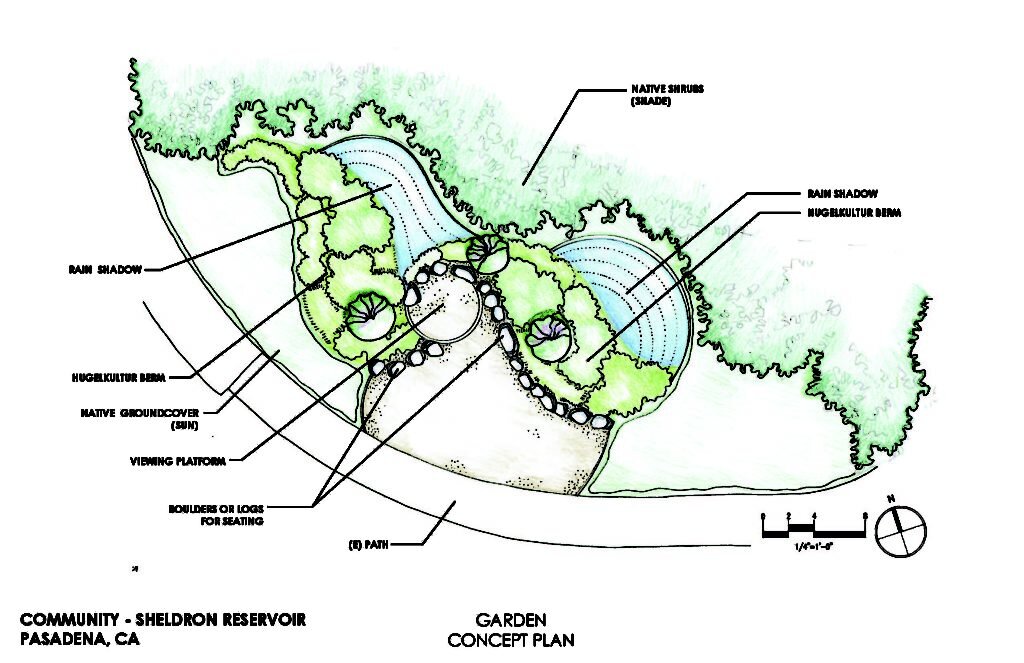
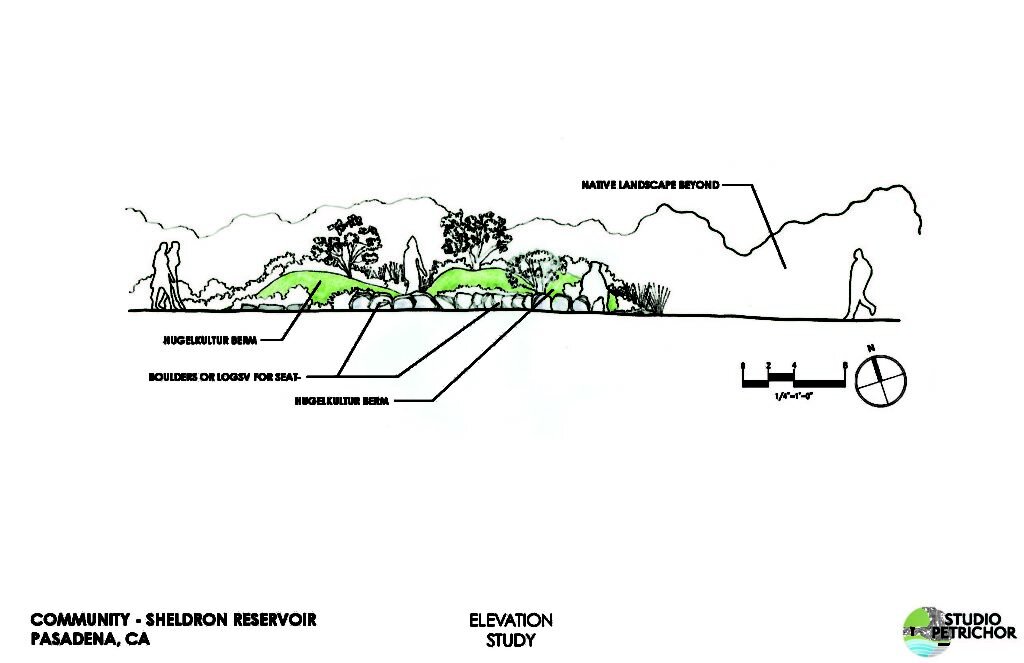
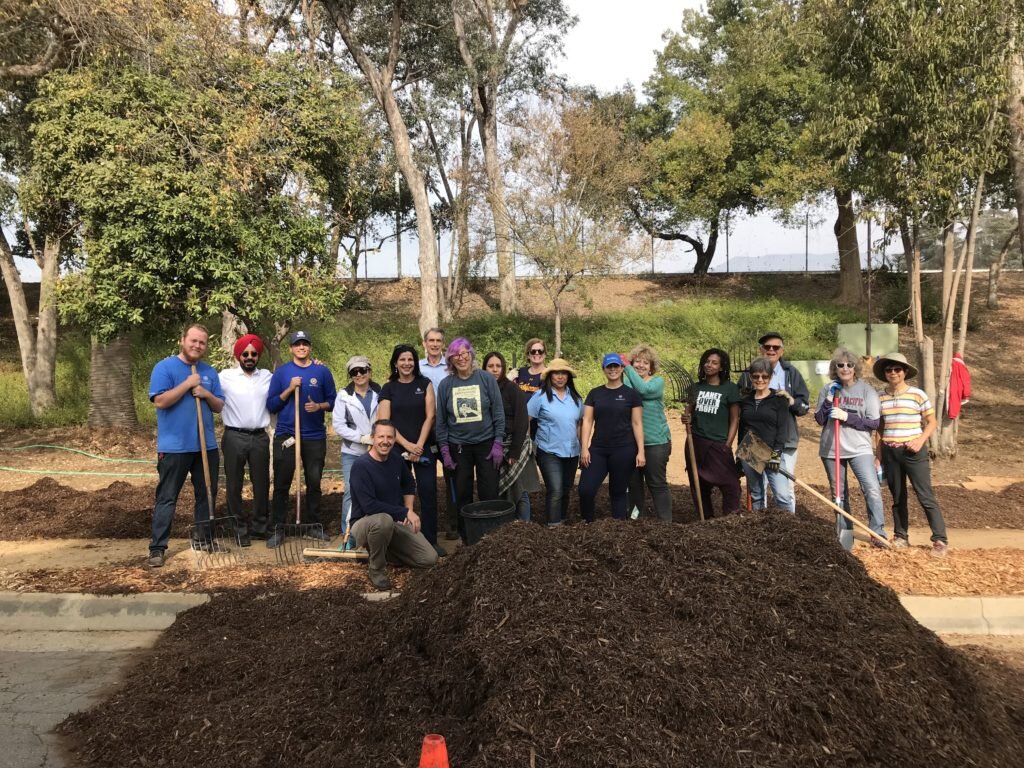
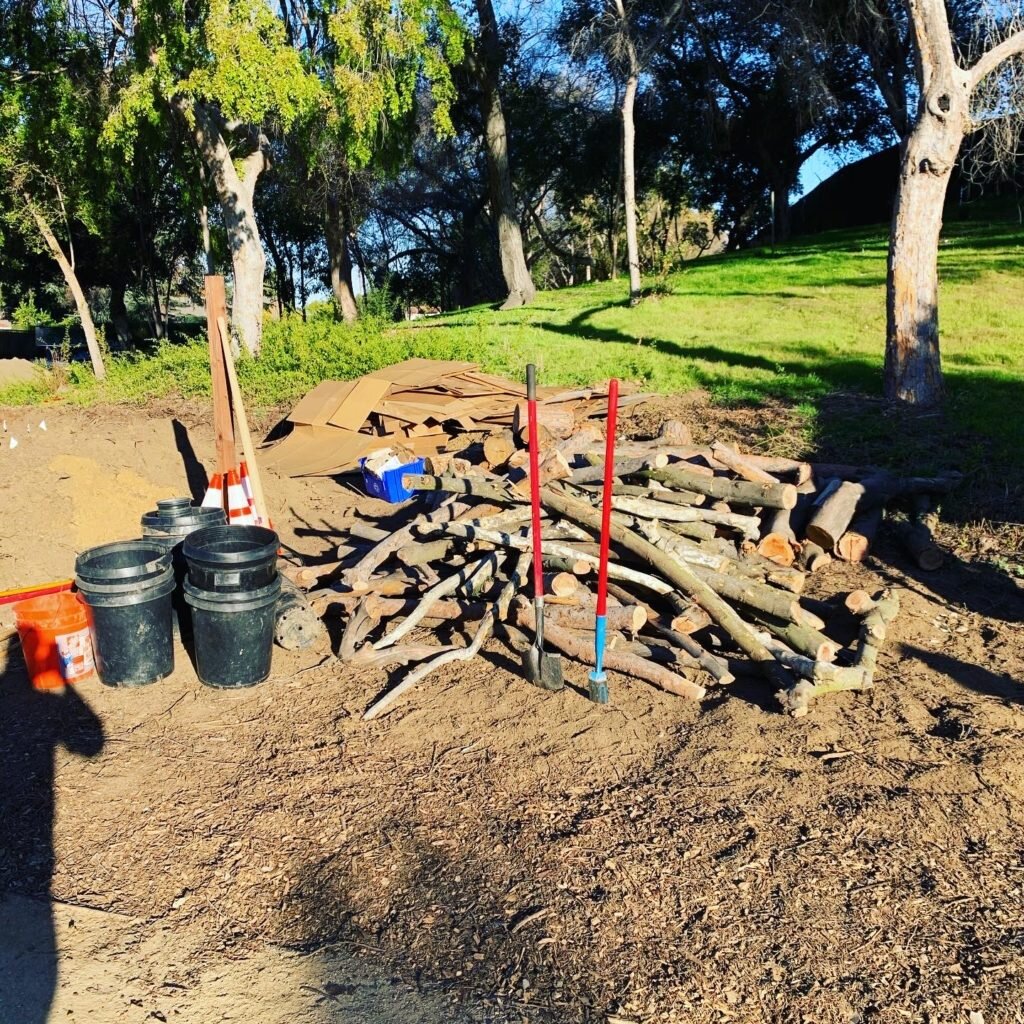
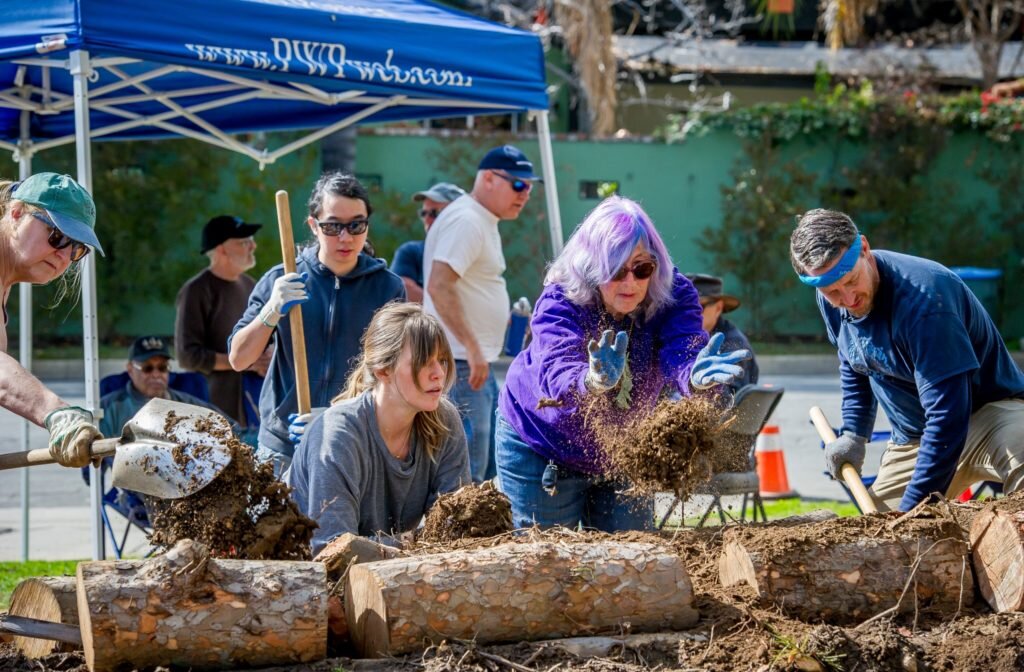
Welcome New Members
Please give a warm welcome to these new members of the APLD California Chapter.
Qualified Professional Members
A landscape designer who engages in the practice of landscape design for monetary compensation and contains more than 3 years of professional landscape design experience. Documentation of education and experience is required.
E. Myriah Wurzer
Natural Beauty Landscape Design and Consulting
Placerville, CA
Caroline Smukler
Caroline Jay Design
Santa Monica, CA
Cheryl Dimson
Table2Garden
Santa Ana, CA
Professional Members
A landscape designer who engages in the practice of landscape design for monetary compensation and contains more than 3 years of professional landscape design experience. Documentation of education and experience is required.
Kathy Henry
Kathy Henry Designs
Carlsbad, CA
Brent Dutton
Poolhaus Design Studio
Newport Beach, CA
Emerging Professional Members
An individual who has been practicing landscape design for one to three years and is starting a career in landscape design. Membership requires affirmation of education and experience, but not documentation.
Kent Mitchell
Outer Spaces Exterior Design
Long Beach, CA
Student Members
An individual who is actively enrolled, on a full or part‐time basis, in a landscape design, landscape architecture or horticulture program. Membership is limited to five years of membership at this level and proof of enrollment must be submitted.
Tracinal Carr
Sacramento District
Erica Looney
San Diego District
Photo courtesy of Campion Walker Landscapes.
APLD California Chapter
Sponsors
Through sponsorship of APLD California Chapter, these industry leaders declare their support for best practices, educational programs and events, and the highest standards in landscape design. From veteran materials suppliers to producers of cutting-edge landscape products, these companies have committed to connecting with professional landscape designers and our clients.
The Slope Approach
by Suzie Wiest, Regional Marketing Representative
and Nicholas Staddon, Company Spokesperson
Some months ago, I remember reading an online article about slopes. And important to remember when we are talking about slopes, they come in all shapes and sizes. Slopes can bring out the worst in us, a sense of antipathy even. So, this remembered article I was reading online was titled, “Can this garden Be Saved? I have a steep slope.” Without a doubt, the mentioned garden was a challenge, however, of course, the answer was yes. Look at some of the stunning Gardens that have been created/constructed, and in some cases “bolted” on the sides of cliffs and mountains surrounding the Mediterranean. See Monty Don’s Gardens of Italy for inspiring solutions.
So, I asked Suzie Wiest, colleague, friend, and fellow plant nut, to give us some of her favorite choices for slopes, and this is what she came up with ...
For slope plantings, where you’d like to provide more control of the runoff to prevent erosion, varied plantings are most effective. A mix of trees, shrubs, perennials, and groundcovers create layers of vegetation, reducing the force as rainfall touches the soil. You can also add a layer of mulch to open areas to further reduce the surface activity.
Your site analysis of the soil, exposure, and drainage will determine which plants will work best, but below are selections with a history of excellent performance on hillsides:
Trees with root systems that hold the soil well and take up more water
Arbutus ‘Marina’
Arbutus ‘Marina’ — Evergreen tree with pendulous clusters of urn-shaped pink flowers in spring and fall followed by ¾” strawberry-like berries; As the bark peels away, the beautiful shiny red new bark underneath is revealed; Drought-tolerant and fire-resistant; 50 ft tall with a 40 ft. canopy; available in standard tree or multi-branch forms; Smaller shrub species of A. unedo compacta is only 7-10’ tall x 7-10’ wide.
Cercis occidentalis — Deciduous tree and a profuse bloomer with clusters of magenta pea-shaped flowers along bare stems in early spring prior to the emergence of heart-shaped leaves; Drought-tolerant and fire-resistant; 20 ft tall with a 10-20 ft canopy; available in standard tree or multi-branch forms. Hummingbirds love the blooms and birds love the seed pods. This is a favorite of mine too!
Quercus agrifolia — Evergreen tree with deep green holly-like leaves, a wide and open canopy, and massively strong trunk and branches; Drought-tolerant and fire-resistant; 40-60 ft tall with a 40-60 ft canopy; available in standard tree or natural low-branching forms. Native to coastal ranges, this is another excellent habitat tree providing shelter and food for wildlife!
Learn more about this APLD CA Silver Sponsor at https://everde.com/.
This month The Urban Farmer Store celebrates its 40th year!
The Bay Area source for professional quality irrigation and landscape lighting supplies. For over 40 years, we have provided sustainable solutions to landscape professionals. We are proud of our commitment to education that has created long-lasting community partnerships.
Join us for an open-house fair in August and monthly webinars for the rest of the year. Our newsletter sign up link is https://www.urbanfarmerstore.com/newsletter-signup/
Learn more about this APLD CA Gold Sponsor at https://www.urbanfarmerstore.com/.
OUR PLATINUM SPONSORS:
Bay Scenery specializes in delivering high-quality landscape construction services in and around Silicon Valley. Through the acquisition of well-known companies such as Harris Landscaping Company, we have cultivated a reputation for excellence in landscape construction for over 30 years.
This company was founded to re-purpose the woody materials that our parent company, Hamilton Tree Service Inc., was generating and sending to the landfill. We have designed a product that is environmentally preferable and ecologically friendly; all of our materials are derived from local tree and landscape companies and are processed right here in the San Francisco bay area (Martinez).
Part of the Mendocino Family of Companies, Humboldt Redwood is a proud PLATINUM SPONSOR of the APLD California Chapter. To learn more about Humboldt Redwood, please visit https://www.GetRedwood.com/.
OUR GOLD SPONSORS:
Simply click on a logo below to visit the website of one of our sponsors.
OUR SILVER SPONSORS:
OUR BRONZE SPONSORS:
Please contact Julie Molinare at sponsorship@apldca.org
Photo courtesy of Holly Selvig.
Learning Opportunities and Events
APLD or APLD Sponsor events in BOLD.
American Landscapes: A Historical
Overview with Wambui Ippolito
July 7, 2021
3:00 PM – 4:30 PM PDT
ONLINE EVENT
CEU's: 1.5
A historical overview of American horticulture and the immigrants, plants, and systems that continue to alter this land. This event is open to everyone so invite your friends, clients, and colleagues.
*APLD Bay Area District offers scholarships for those who may otherwise not be able to attend our events. For further information please contact John Black, APLD Bay Area President, at john@verdancedesign.com.
APLD CA Sponsor Spotlight: Calstone
July 20, 2021
Join our course on the principles of our dual mix design process and understand how we can offer superior paving stones that are vibrant in color, fade- and slip-resistant, smooth, and dense like natural stone.Calstone is a family-owned business proudly serving high-quality concrete masonry and landscaping products for over 70 years. (They service the Northern California region.) Calstone produces premium paving stones, retaining walls and landscape structures in a full range of blended colors. Speakers will be Denton Bullard, Scott Julien, Jim Grossi, all specialists at Calstone Pavers.
Homegrown Habitat: Preserving and Restoring Habitat One Yard at a Time
An online event with APLD Sacramento District.
July 22, 2021
European settlement has changed the face of California. Very little habitat remains unaltered in California, and of the 11 Western states, our state is in the lead on land conversion, impacting native species at a rate of one football field every 2-1/2 minutes.
Native plants are a cornerstone of biological diversity on which native animals depend. Learn why and how to go about selecting the right natives for a new or existing garden.
JULY
27th Annual Ruth Bancroft Sculpture in the Garden.
June 25th to August 29th.
Las Virgenes Municipal Water District Sustainability Demonstration Garden. Marilee Kuhlmann and Tom Rau will take us on a tour of the Sustainability Demonstration Garden at Las Virgenes Municipal Water District. The Sustainability Garden shows how selecting climate-appropriate landscaping can significantly reduce water consumption.
July 7.
American Landscapes – A Historical Overview of American horticulture and the immigrants, plants, and systems that continue to alter this land with Wambui Ippolito.
An APLD Bay Area District Online Speaker Event.
July 7.
CA Friendly Native Plant Landscape Webinar with G3 and Metropolitan Water District of Southern CA.
July 13.
Groundcovers & Vines in Dry Gardens.
A webinar with Ruth Bancroft Garden.
July 17.
APLD CA Sponsor Spotlight: Calstone.
July 20.
Homegrown Habitat: Preserving and Restoring Habitat One Yard at a Time.
Learn why and how to go about selecting the right California natives for gardens designs. An online event with APLD Sacramento District.
July 22.
Essential Agave & Friends in Dry Gardens.
A webinar with Ruth Bancroft Garden.
July 24.
CA Friendly Native Plant Landscape Webinar with G3 and Metropolitan Water District of Southern CA.
July 27.
Dry Garden Installation.
A webinar with Ruth Bancroft Garden.
July 28.
Fearless Gardening – Author Talk with Loree Bohl.
A live webinar workshop with Ruth Bancroft Garden.
July 31.
AUGUST
Dry Garden Care & Maintenance.
A webinar with Ruth Bancroft Garden.
August 4.
Fall Classes Begin at Cuyamaca College in El Cajon (San Diego area).
August 16.
Fall Classes Begin at Merritt College Landscape Horticulture Department in Oakland.
August 23.
Essential Trees and Palms in Dry Gardens.
A webinar with Ruth Bancroft Garden.
August 25.
SEPTEMBER & OCTOBER
SAVE THE DATE: Daniel Winterbottom presents “Therapeutic Gardens: Design for Healing Spaces” an event with APLD Sacramento District.
September 16.
SAVE THE DATE: Fig Earth Supply
Join APLD-GLA for a "Meet & Greet" to see and chat IN PERSON with members, both new and old. Our event will be held at Fig Earth Supply, a unique "all edible + medicinal plant nursery" that combines a one-stop-shop for organic vegetable gardeners with a place of learning and hands on experience for all who want to grow. It's a great place to explore if you haven't yet discovered it. Come and relax at the end of the business day, and enjoy the chance to be together after a long hiatus.
September 18.
SAVE THE DATE: The 2021 APLD International Design Conference (online).
October 6-9.
College classes—of special interest to
Landscape Designers—Around the State
Merritt College Landscape Horticulture
Fall semester begins August 23, 2021
Planting Design
Instructor: Terri McFarland
Mondays, 6-10pm, Zoom
Plants as landscape design elements: Ecological design criteria, functional use of plants in design, plants as spatial delineators, visual and aesthetic qualities of plants, and planting design styles. Slide presentations and site analysis substituted for lab.
Landscape Design Forum
Instructors: Chris Grampp and Laura Forlin
Tuesdays, 4-6pm, Zoom
Forum emphasizing professional practices in landscape design, including review of student designs for client presentation and guest speakers in the trade: Basics of contracts and professional licensing options; development of a portfolio to market services. Strategies for estimating landscape design fees and installation costs and managing project budgets. Presenting designs to clients and planning boards; developing resource lists of nurseries, suppliers, and subcontractors; continuing education opportunities in the landscape design field.
UCLA Extension Landscape Architecture & Horticulture
Beginning Stormwater Management
Instructor: Matthew Shimer
Monday 6:30pm to 9:30pm, July 19 to August 23, 2021
Apply the watershed approach to design.
Design a green infrastructure system that achieves multiple benefits, including stormwater regulations
Select, size, and calculate benefits of low-impact development strategies.
Sustainable site planning requires understanding and calculating storm events and designing landscapes to capture, hold, and infiltrate stormwater through landscape designs that focus on several methods, from on-site retention and cisterns to green infrastructure, such as swales. This course showcases unique designs and describes the methods and calculations used to design stormwater BMPs for a site to appropriately accommodate seasonal stormwater within the Southern California region. This course covers the California and City of Los Angeles regulatory requirements for stormwater and provides an overview of stormwater plan design hydrologic/hydraulic concepts, environmental site design, and non-proprietary stormwater BMPs, including critical design elements and typical stormwater plan compliance strategies.
Watershed Design Process Part 1: Conceptual Planning
Instructor: Tom Rau
Tuesday July 13, 6-7pm
First of two courses in Watershed Design. Tom Rau of Urban Water Group will cover the watershed approach to sustainable design. From Site analysis, developing a water budget, comparing low impact development with full stormwater harvesting. Understanding natural processes and using design to mimic nature will be the focus of this first class.
Watershed Design Process Part 2: Details and Implementation
Instructor: Tom Rau
Tuesday July 20, 6-7pm
Second of two courses in Watershed Design. Tom Rau of Urban Water Group will continue with how to implement the watershed approach to sustainable design. Topics include the basics of active and passive stormwater systems, above and below-ground storage identification; size and location for appropriate stormwater collection devices, based on site conditions and conceptual design objectives, basic watershed design principles to incorporate into an integrated set of plans and details for implementation.
Diablo Valley College
Soil Science and Management
with Bethallyn Black
August 23-December 12, 2021
Lecture: Tuesday and Thursday 11am-12:25pm
Lab: Friday 1pm-4:10pm
This course presents a study of soil science and management of soils. Biology, physics, and chemistry are integrated with geological concepts to provide a comprehensive overview of all facets of soil science. Topics covered include soil classification, derivation, use, function, and management including erosion, moisture retention, structure, cultivation, organic matter, and microbiology.
The lab for soils will include identifying soil types, classifications, reactions, fertility, and physical properties. Soil management, biology, chemistry, and microbiology will be explored. Regional soils and soil quality are investigated.
Sustainable Urban Landscapes
Instructor: Rottke, L
Mondays 5:00 PM 6:50 PM, 8/16/2021 - 12/18/2021
Principles and practices of sustainable landscape design, construction, and maintenance. The course provides a basic understanding of the holistic function of the landscape in the context of sustainability. Using a comprehensive systems approach, learn to investigate, analyze, and apply sustainable environmental practices to a project site. Practice communicating ideas, research, and solutions, creatively and confidently via oral presentations.
Japanese Garden Design & Construction
Instructors: Siers, K
Saturdays 9:00 AM 10:15 AM,8/16/2021 - 12/18/2021
An introduction to Japanese garden design concepts and construction methods. The course will cover the historical development of Japanese gardens and, based on the 11th century garden design book Sakuteiki, design concepts and construction of garden elements such as stone compositions, streams, ponds, waterfalls, Zen-influenced stone gardens (dry landscape garden), water-basins, introduction to traditional pruning and other basic design, construction and maintenance techniques.
Foothill College Environmental Horticulture & Design
Vectorworks for Landscape Designers
Instructor: John Black, APLD
Mondays 2 – 6:50 PM. 9-20-21 to 12-10-21
Introduction to Vectorworks 2D software for computer aided design and drafting (CADD), specifically for landscape related applications. Focus on development of basic command skills, including 2-D drawing, editing, creation of layers, plant placement tool, and exporting to other programs and as a PDF for printing. 3-D CADD drawing is covered in a different course. Vectorworks software is utilized in this course.
Landscape Certification: Irrigation Installation
Instructor: Frank Niccoli
Fridays 9am to 2:50 PM, 9/2021 – 10-15-21
General subjects related to certification with the California Landscape Contractors Association. Topics include irrigation plan reading, advanced irrigation components, basic horticultural principles, lateral repair and head adjustment, advanced program controller, lateral installation, mainline installation, valve repair, valve wiring and pipe installation equipment. This course is intended for students seeking Certified Landscape Technician certification.
Contributors to Summer 2021 Edition:
John Black, APLD
Cheryl Buckwalter
Jodie Cook
Francesca Corra, APLD
Lori Cox
Sophia Cunningham
Debbie Gliksman, APLD
Chris Grampp
Karen Hunt
Eileen Kelly
Marilee Kuhlmann
Amelia Lima, FAPLD
Shawn Maestretti
Tom Rau
Deborah Robertson-Chistman
Ann Rosemarin, FAPLD
Marcia Scott
Holly Selvig
Nicholas Staddon
Patricia St. John. FAPLD
Steve Turner
Nicholas Walker, FAPLD
Suzie Wiest
Content Coordinator: Mary Fisher, FAPLD
Design and Content Editor: Maggie J Elias
Call for Submissions
We invite your participation in the California Landscape Design magazine Fall 2021
edition, with a theme of “Water Features”.
Please send your story ideas to newsletter@apldca.org before August 30, 2021.





























